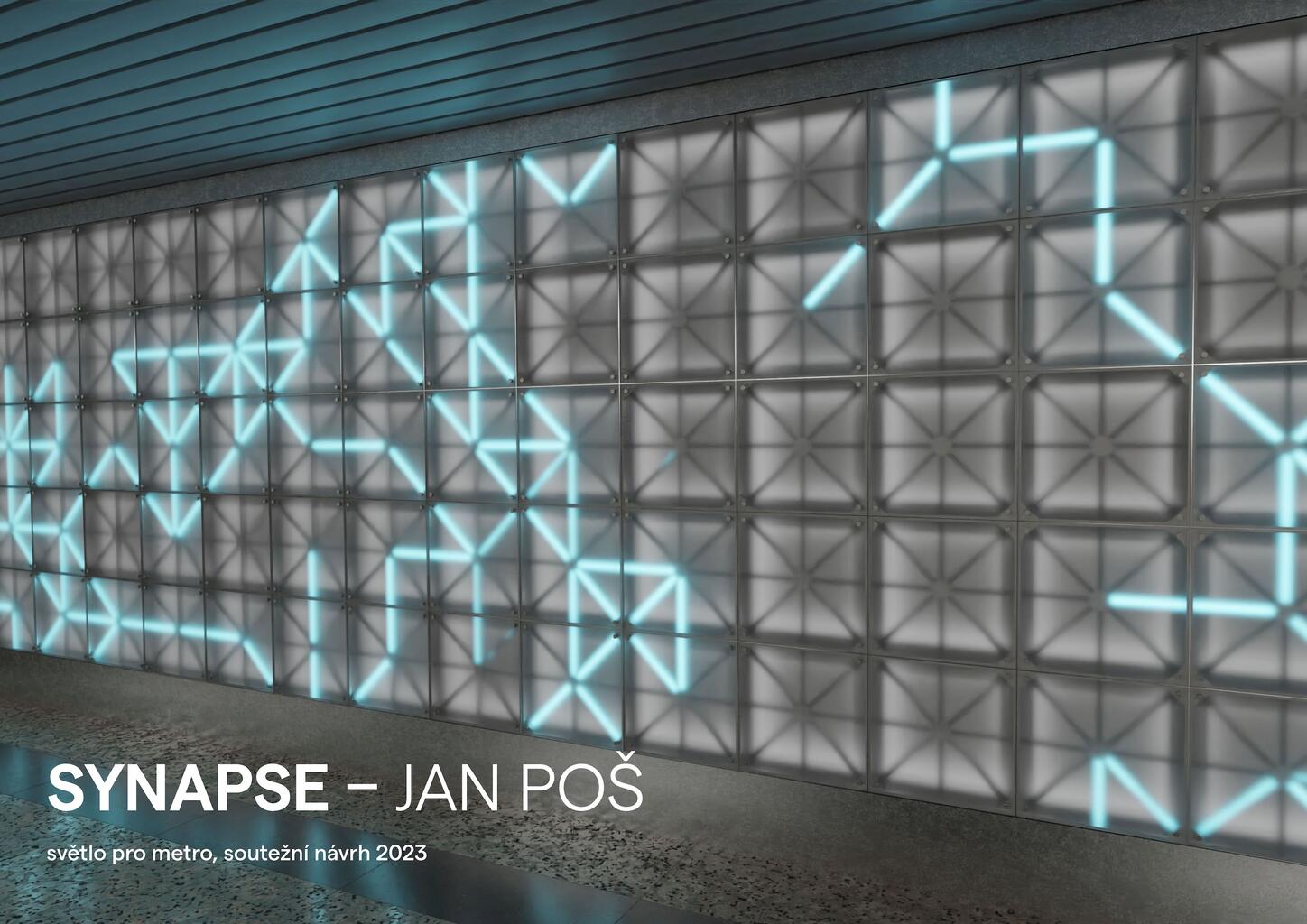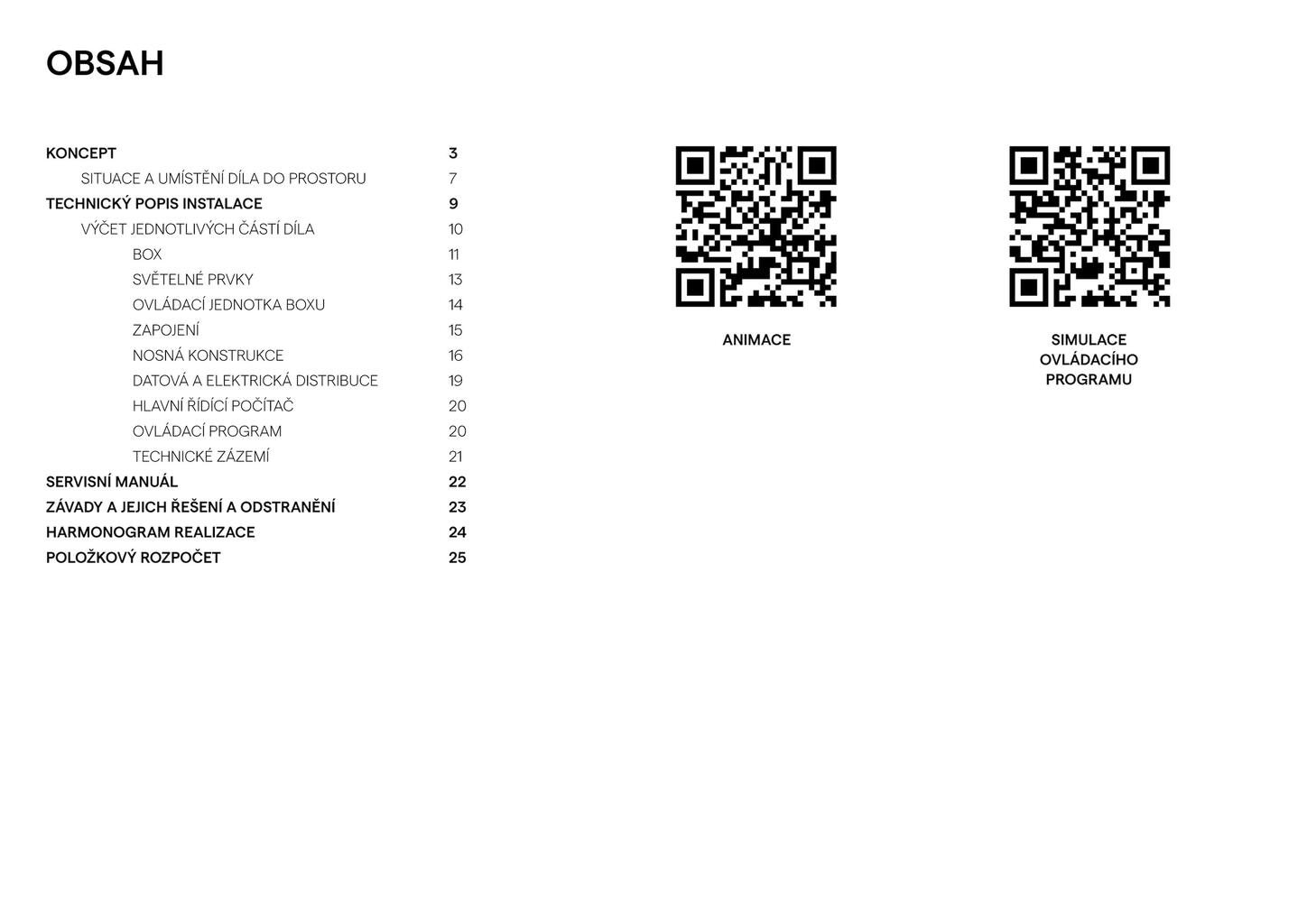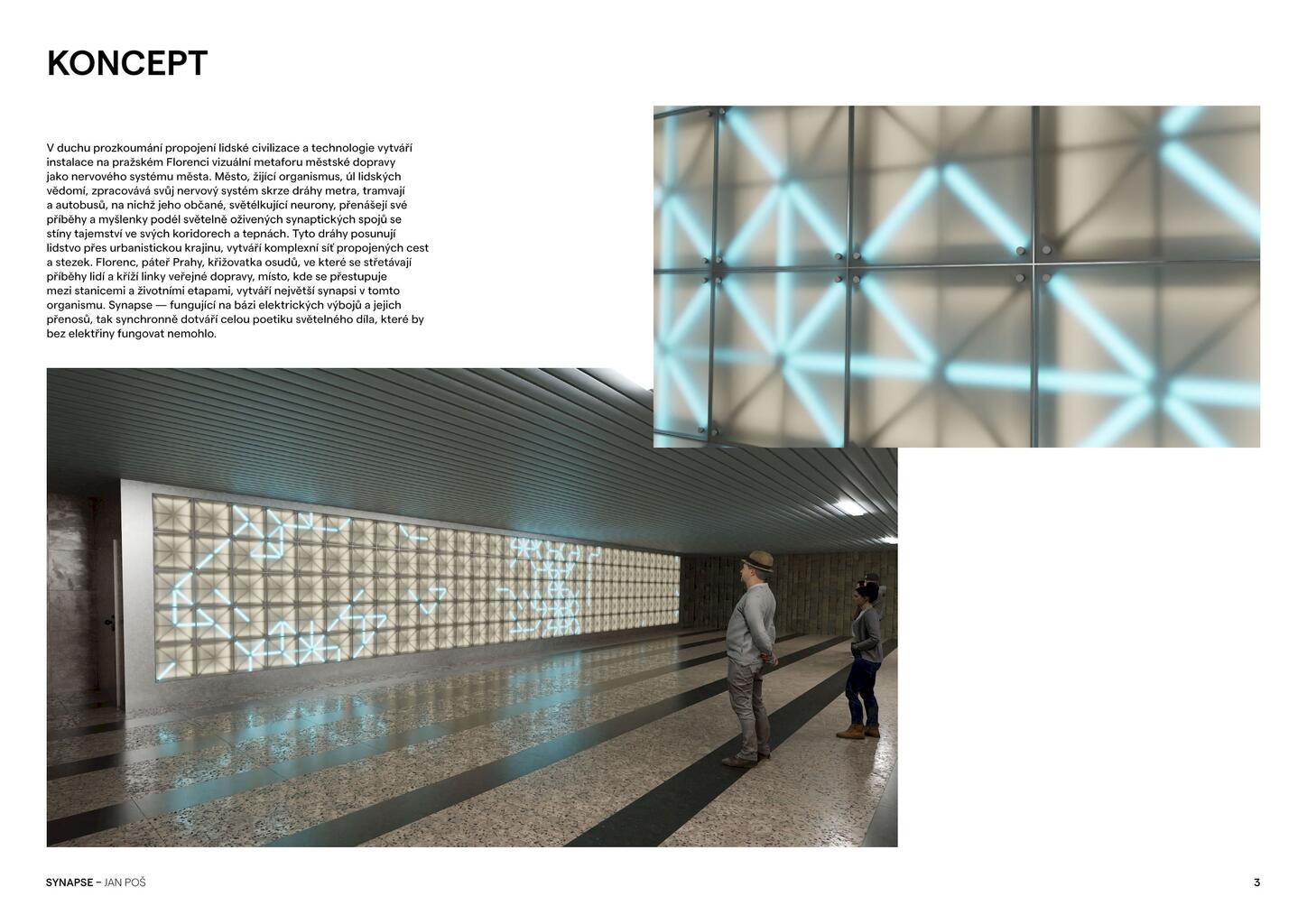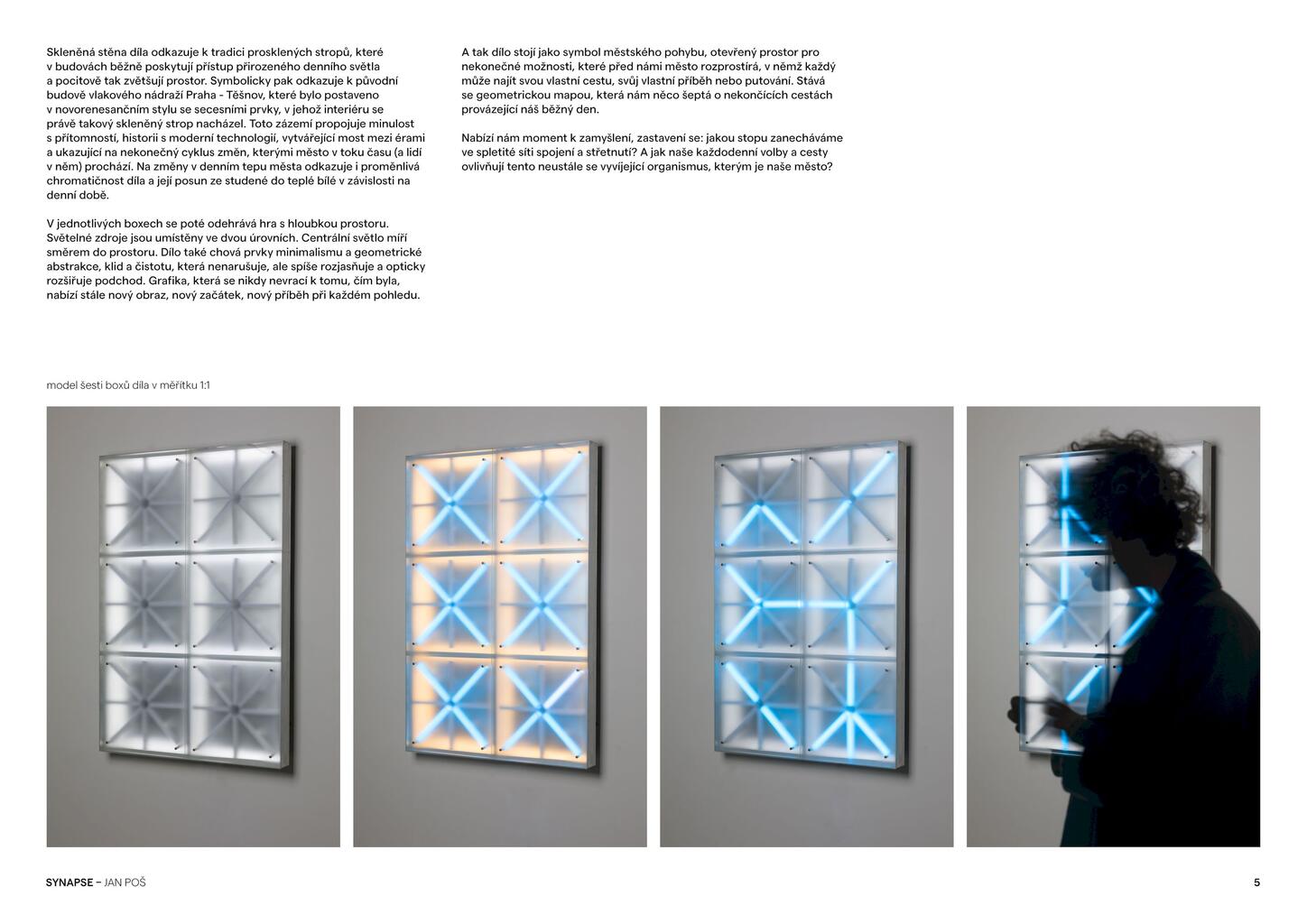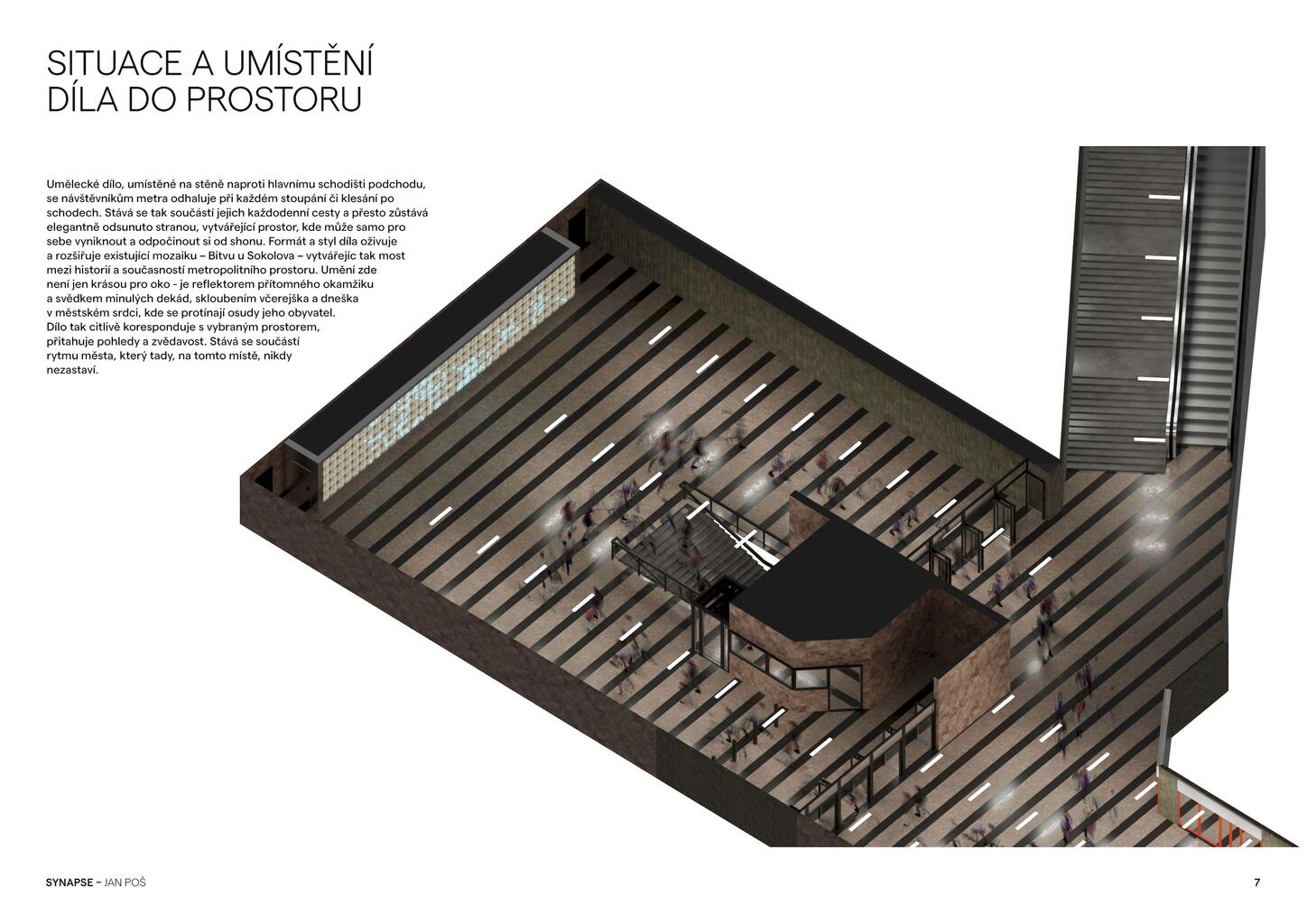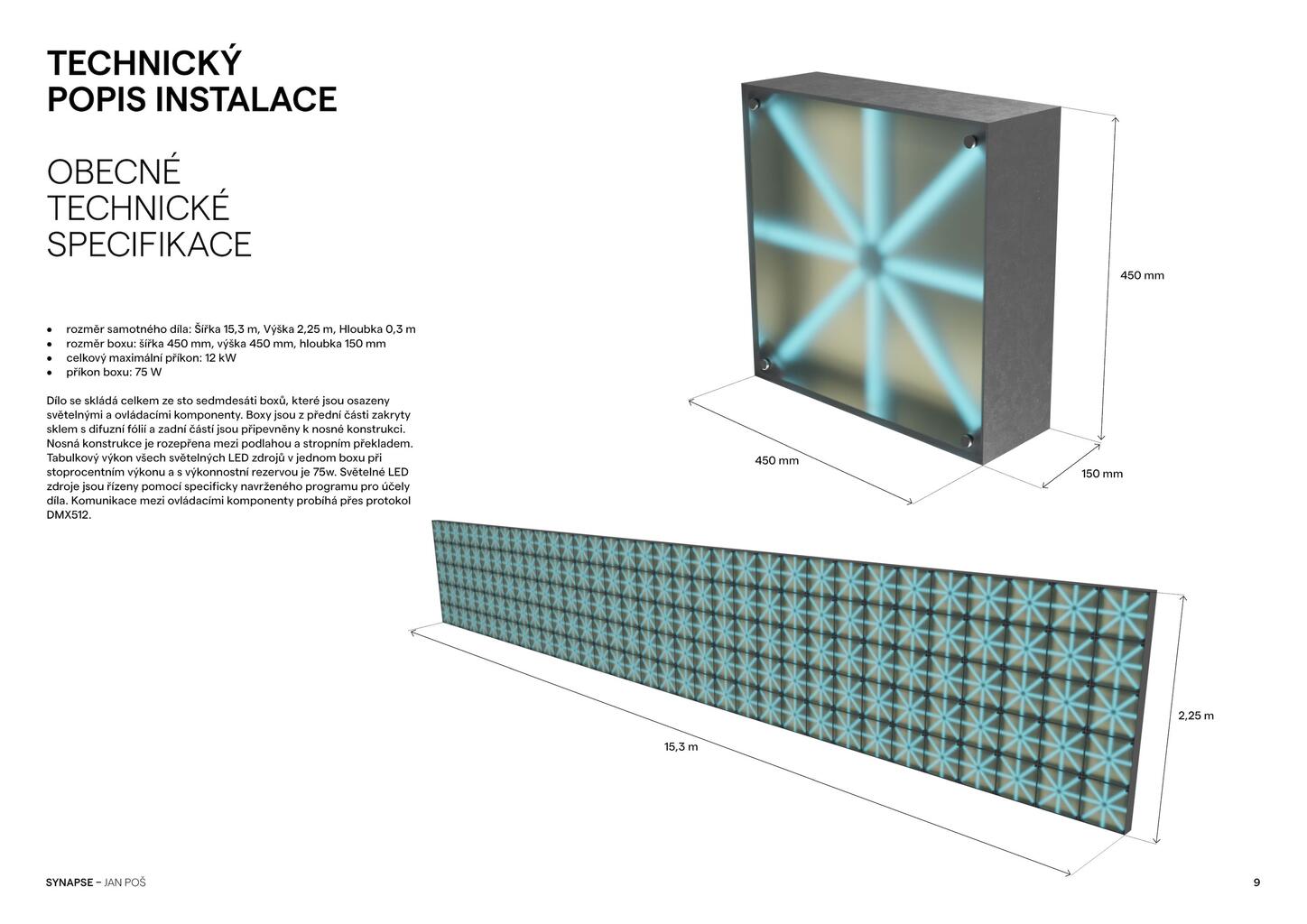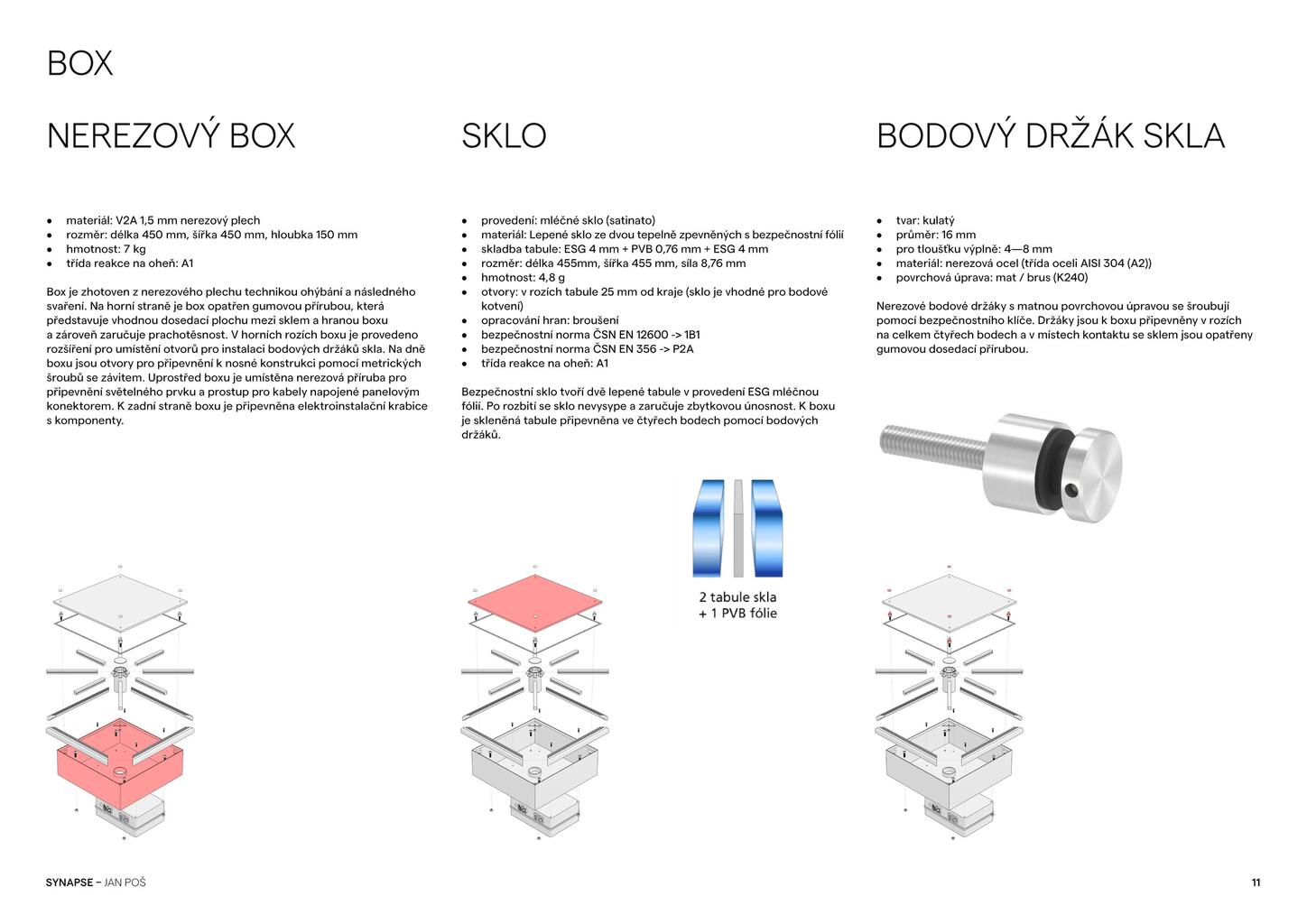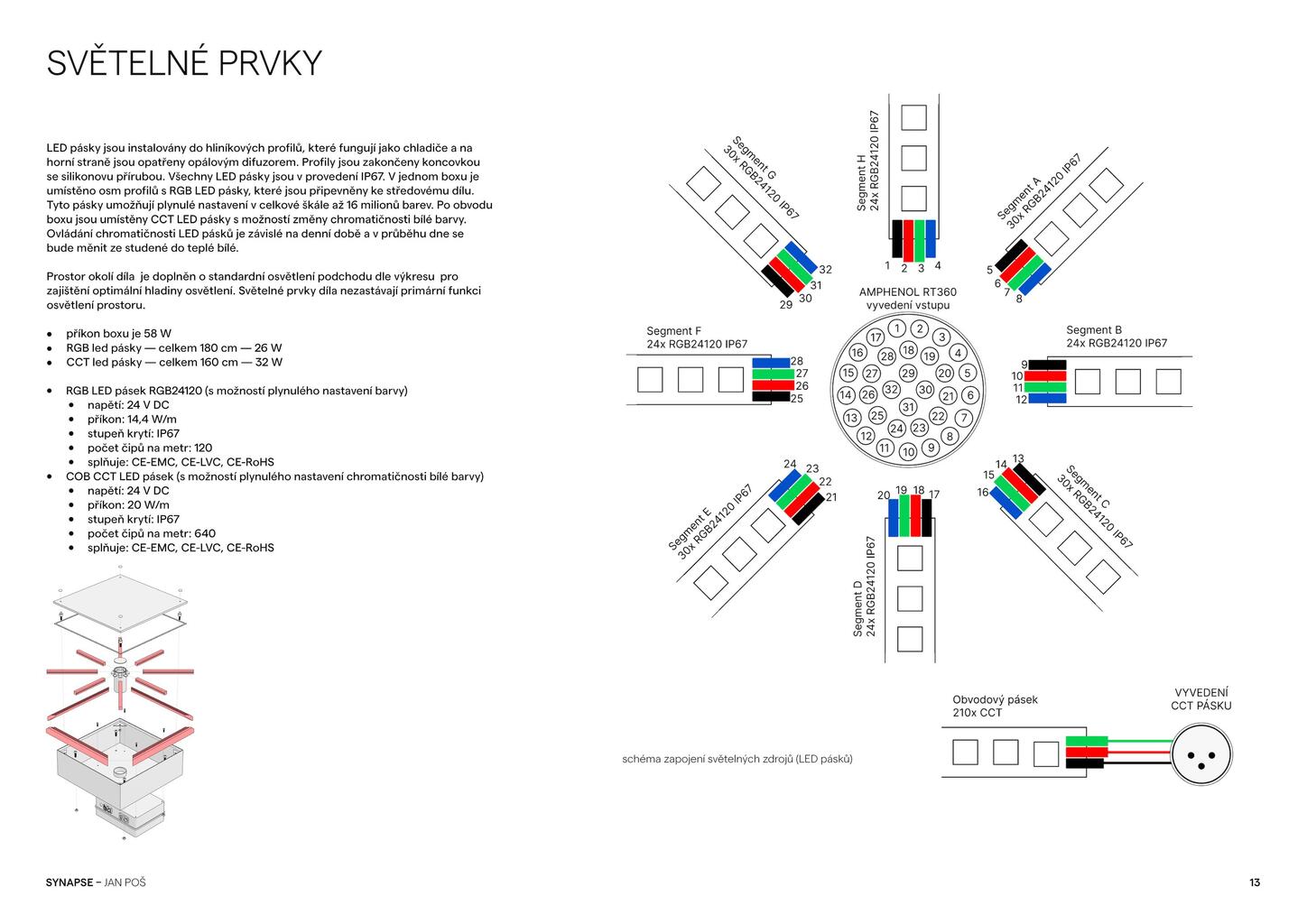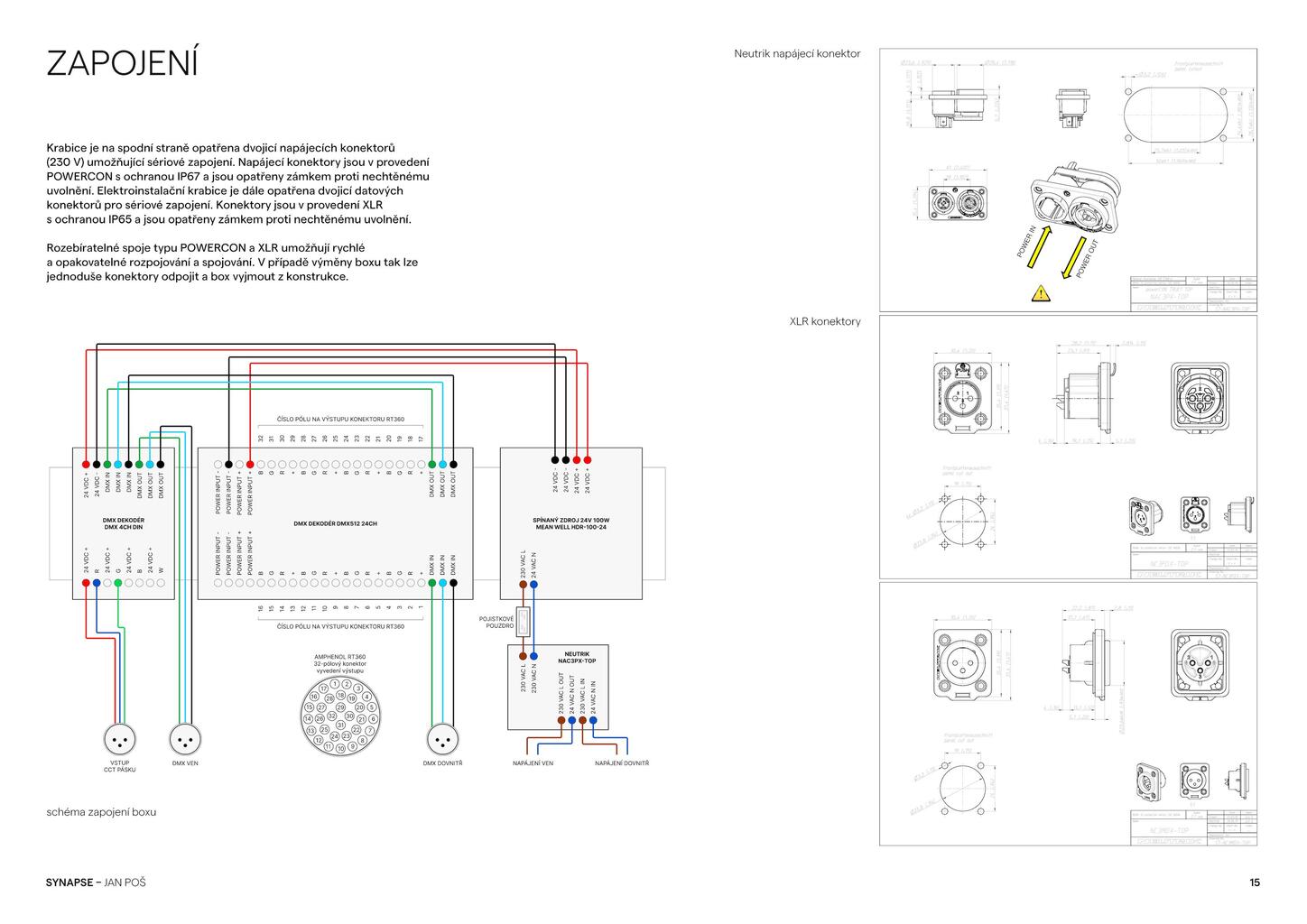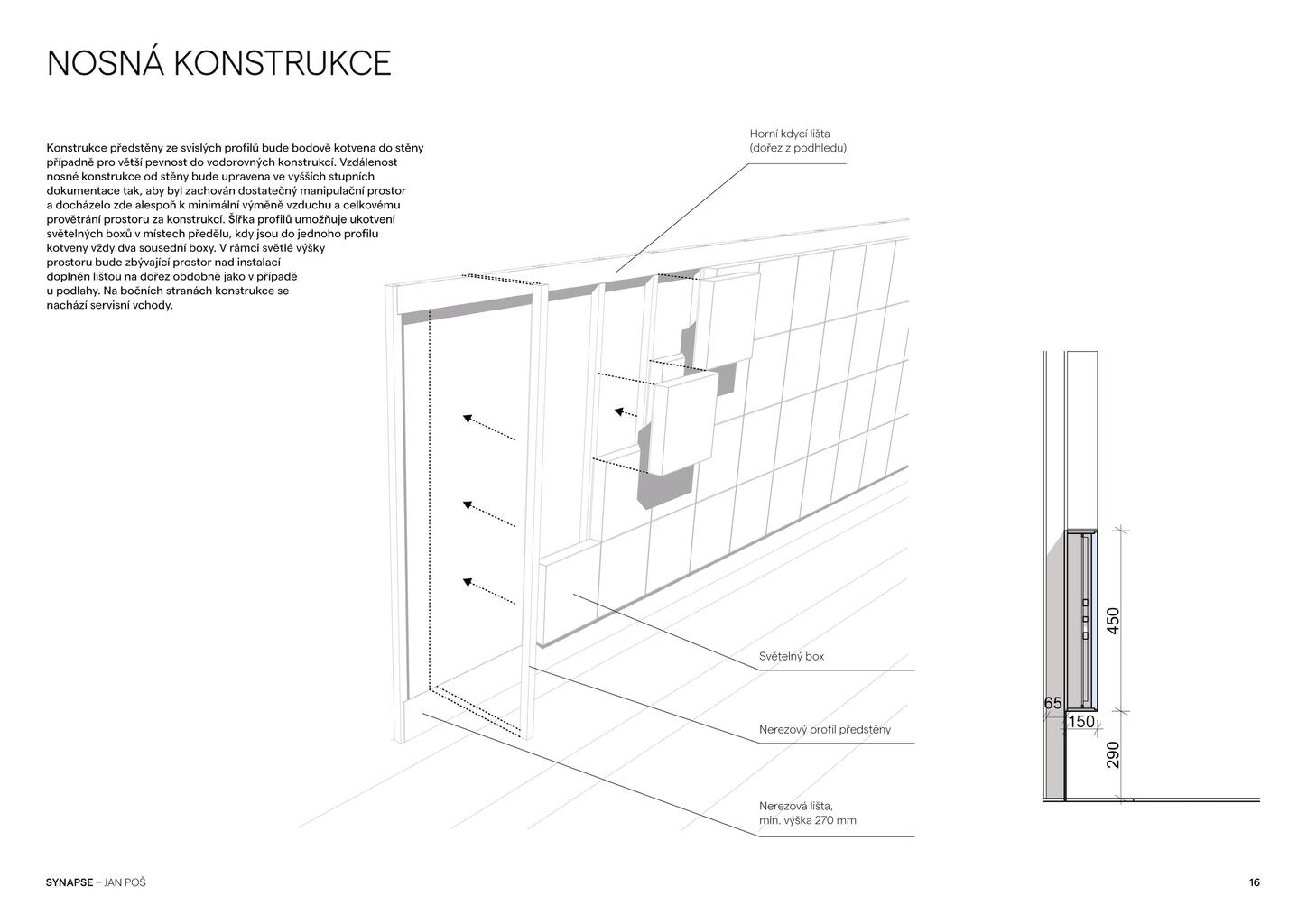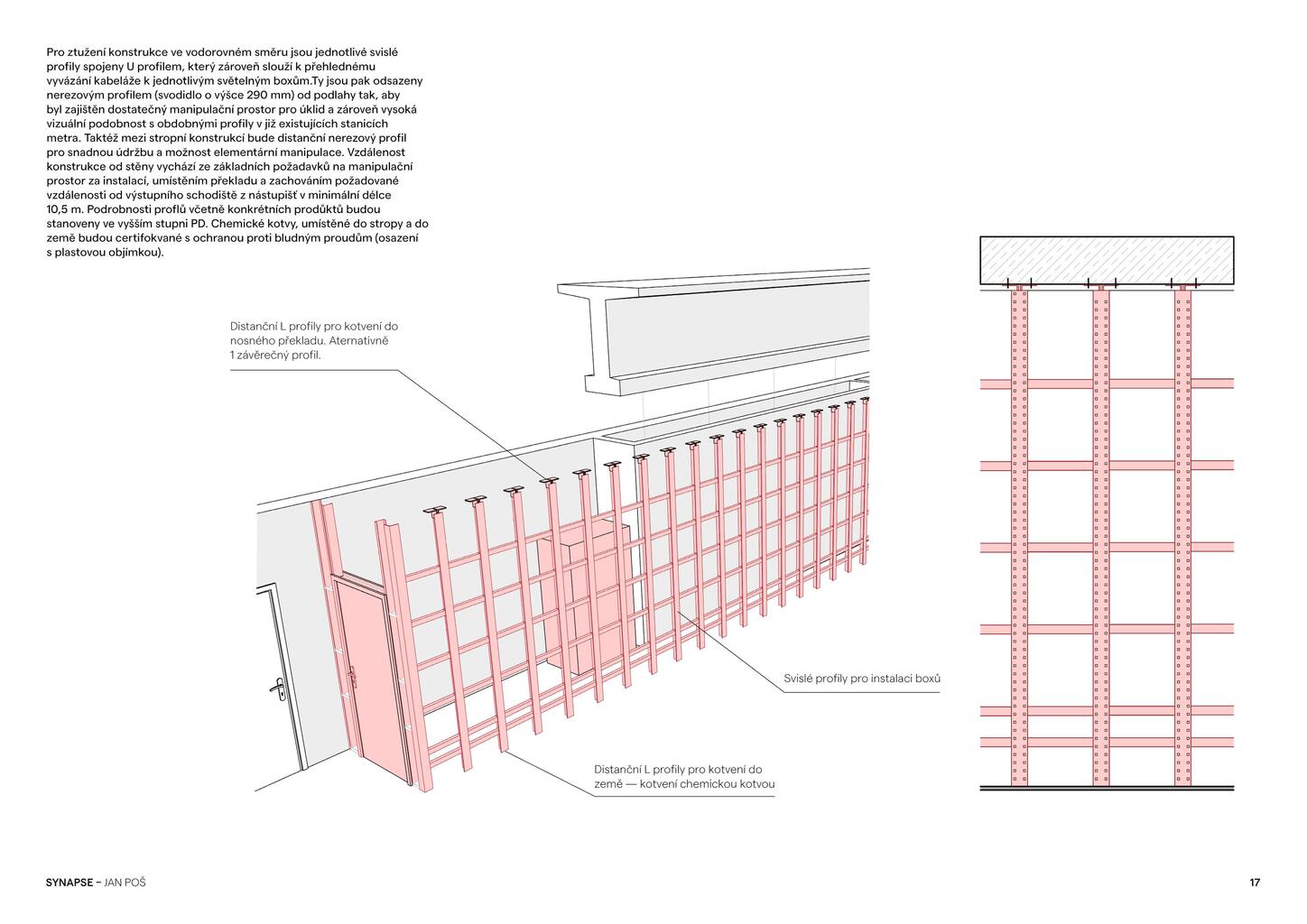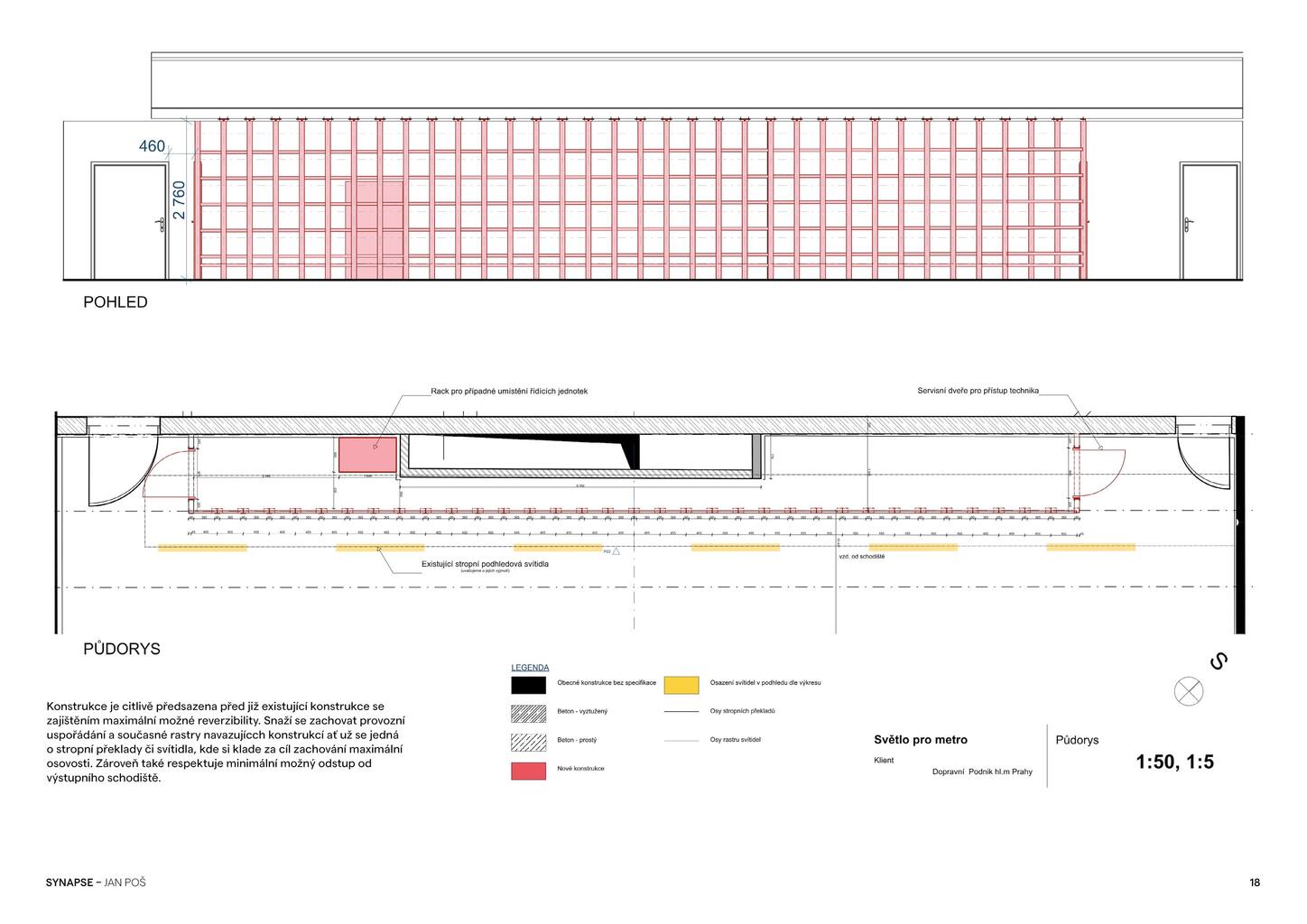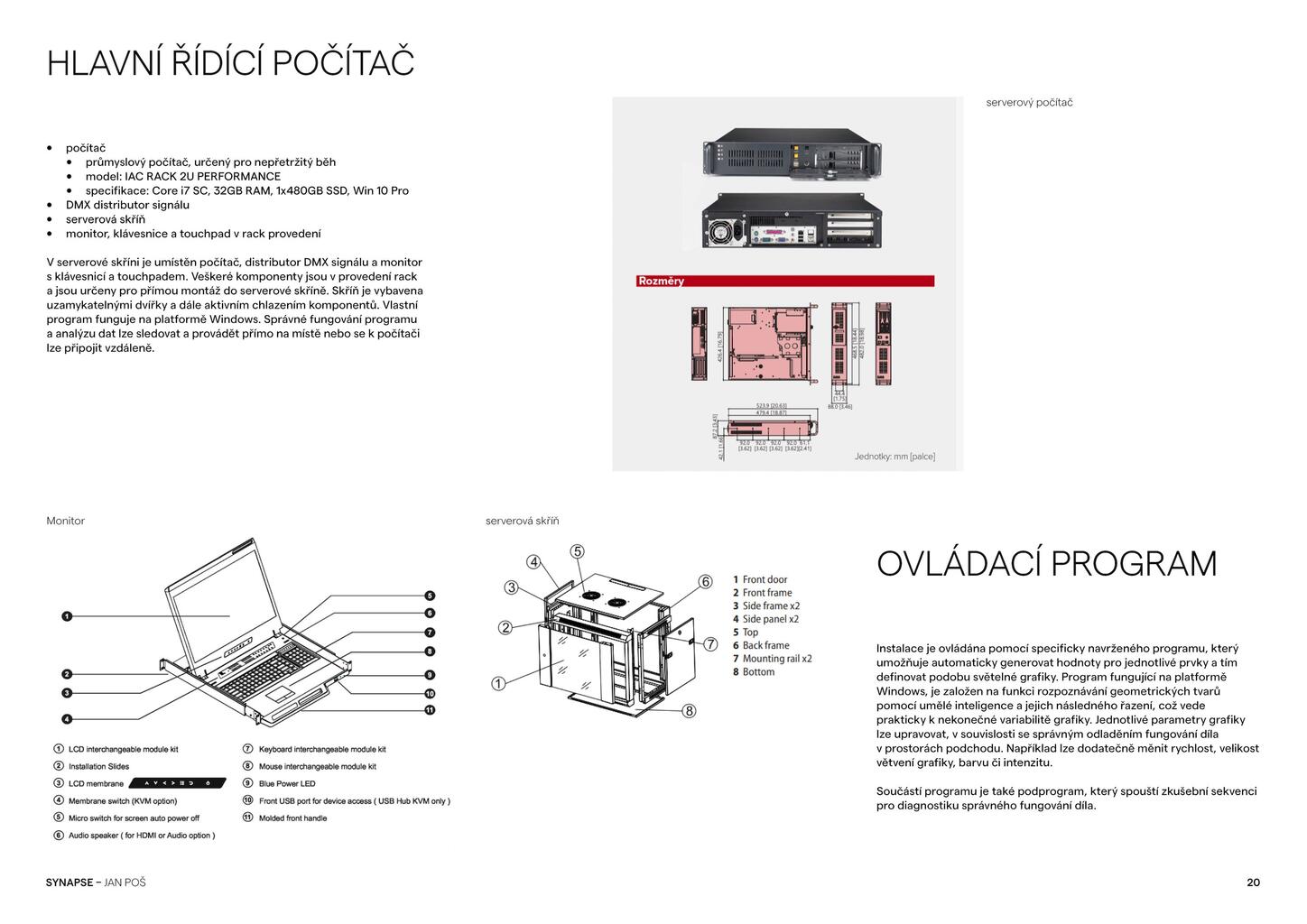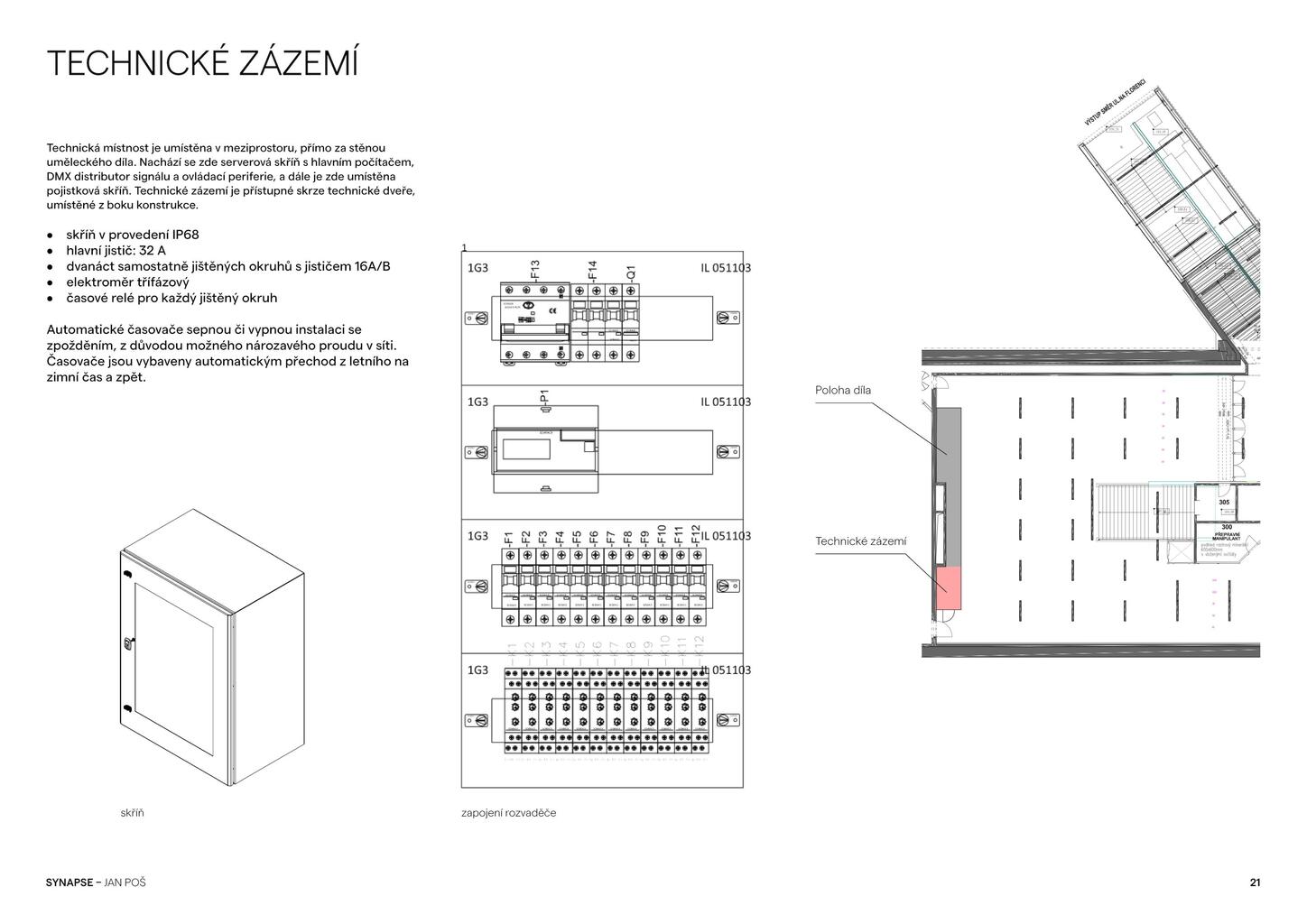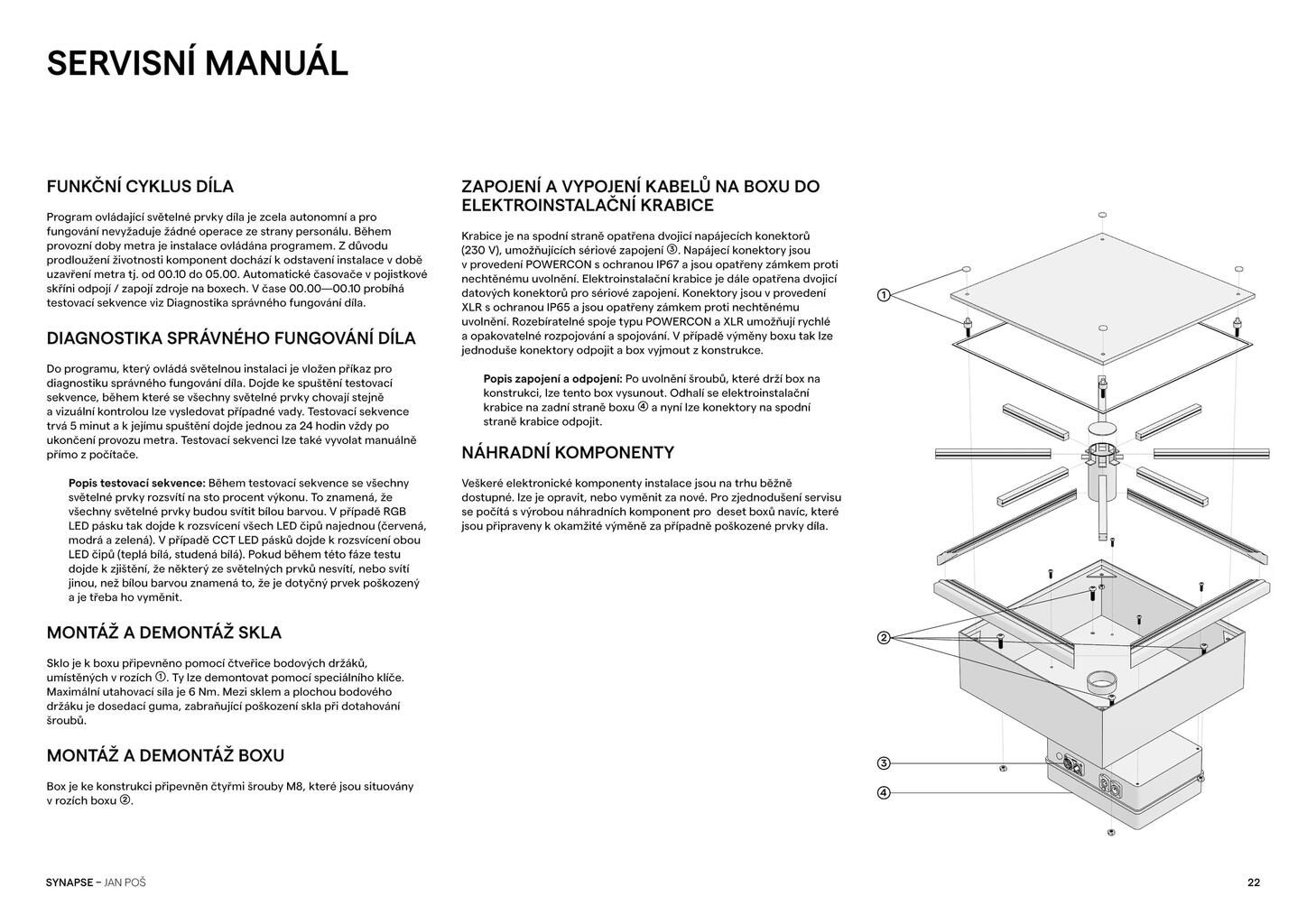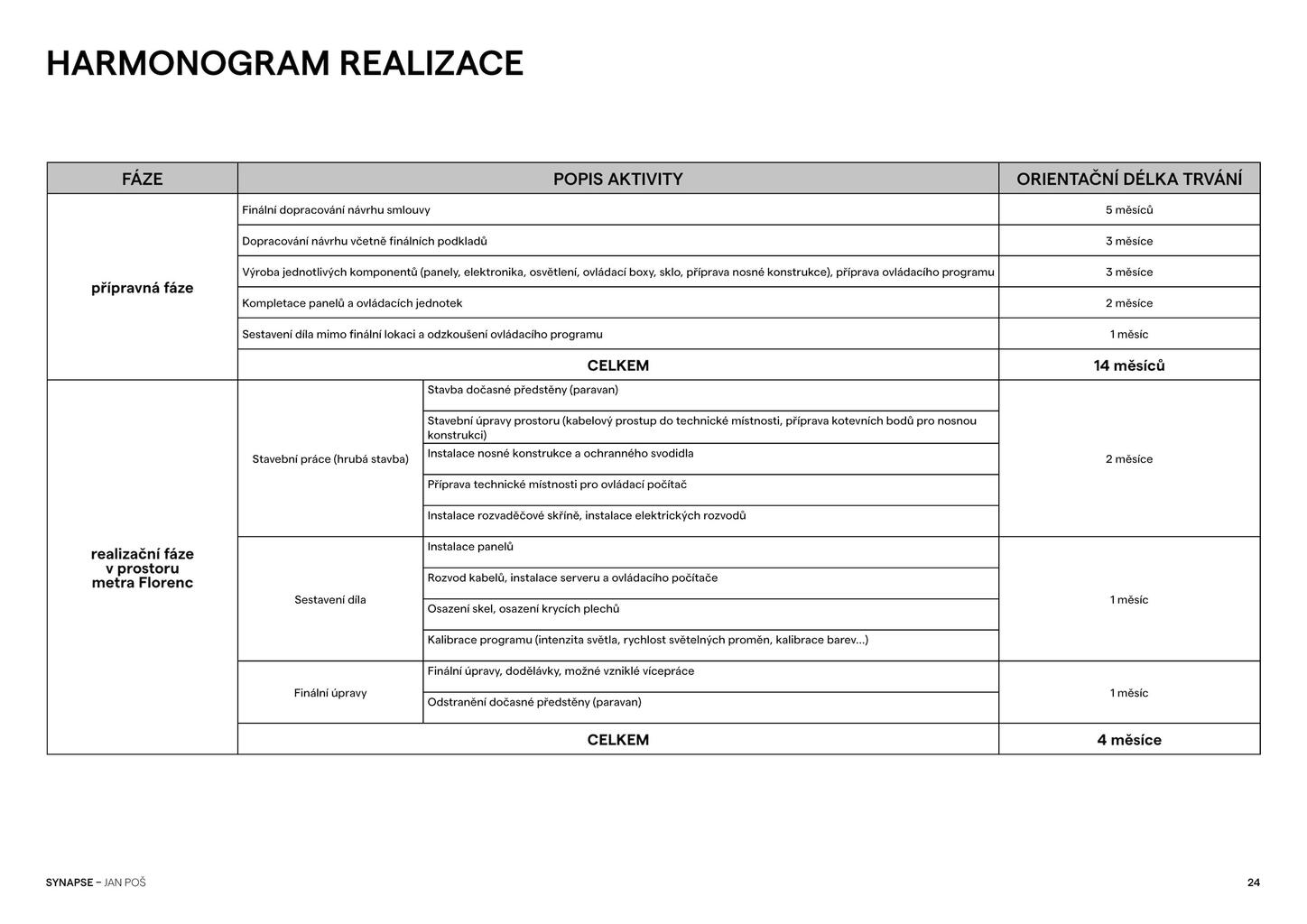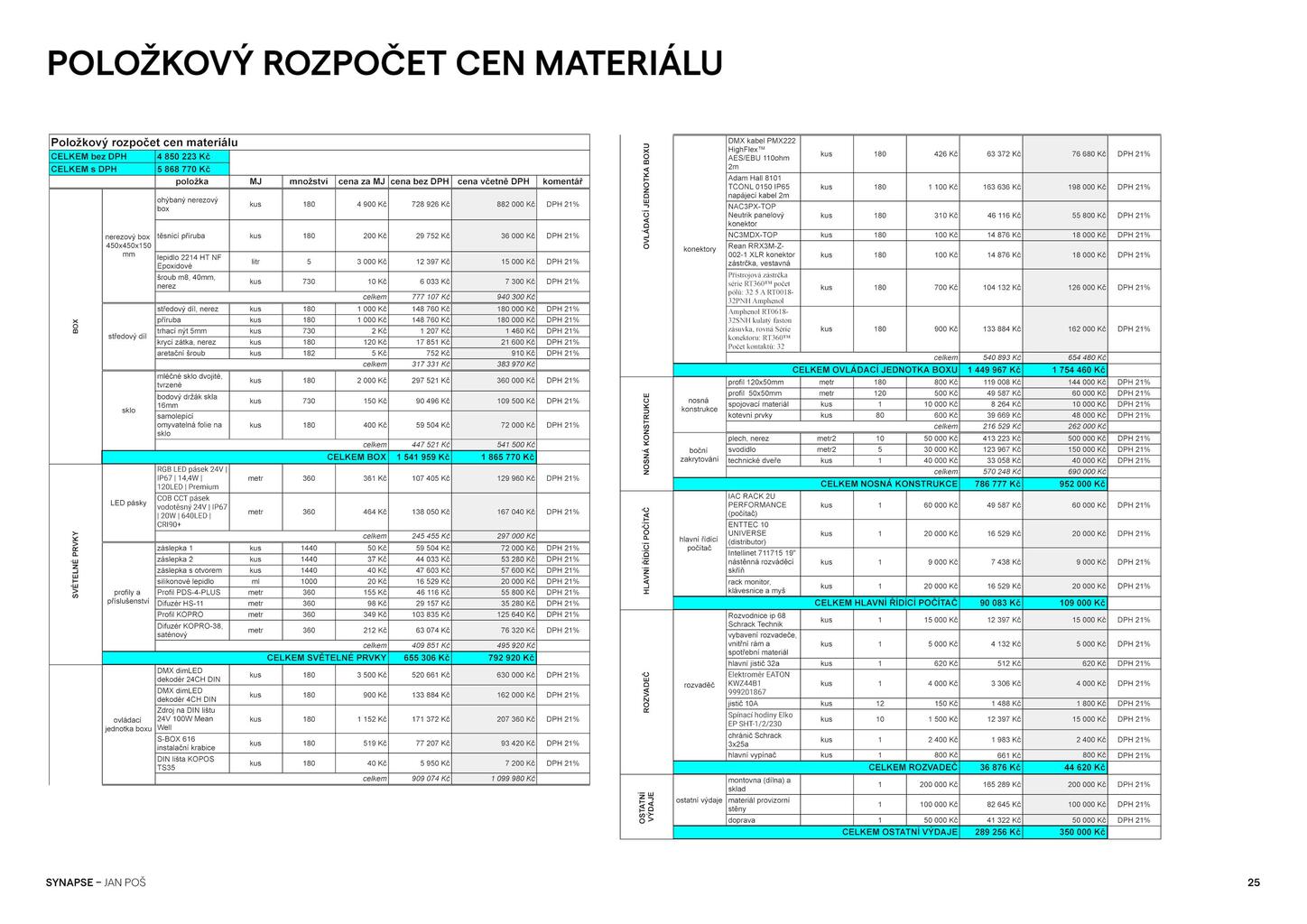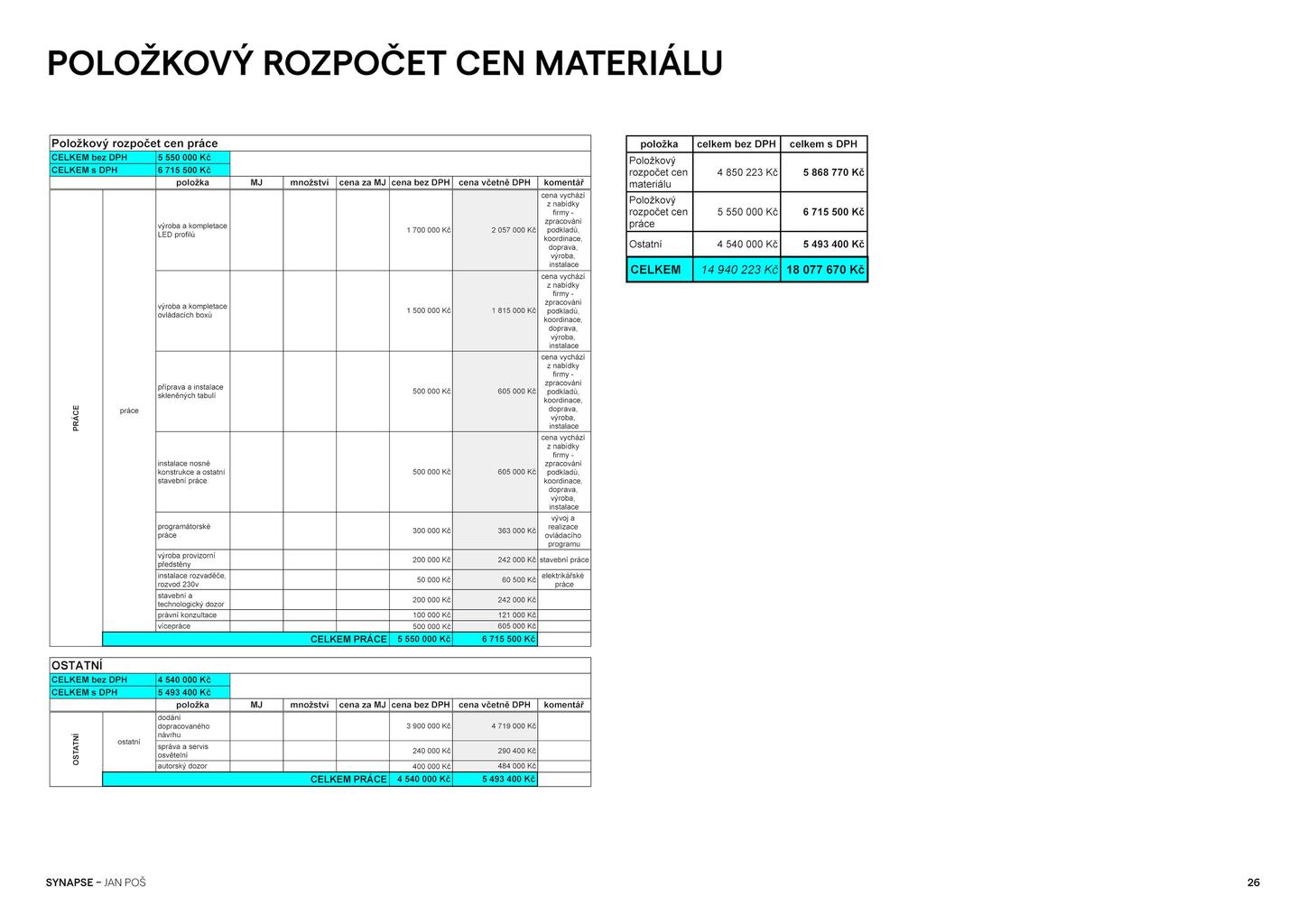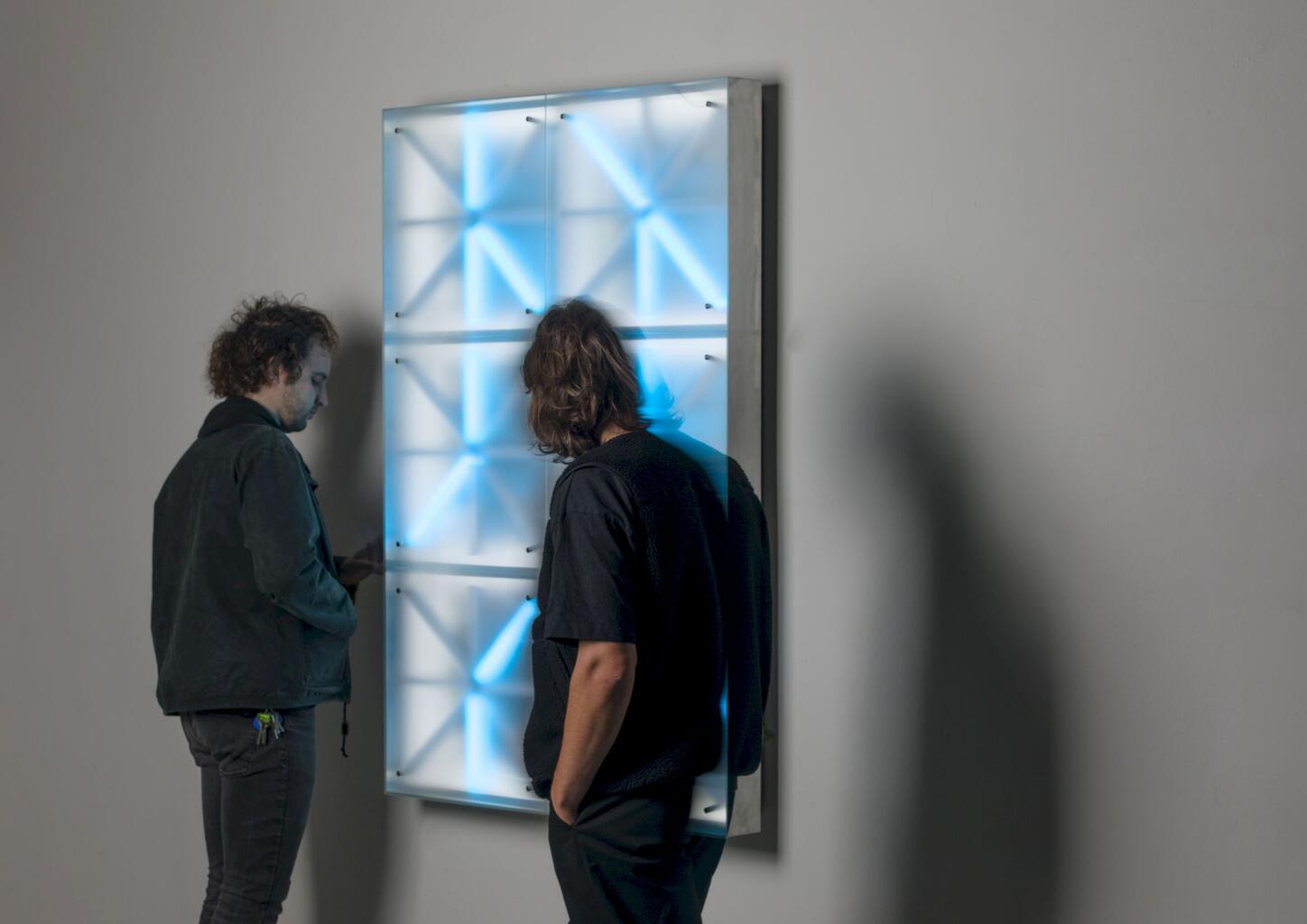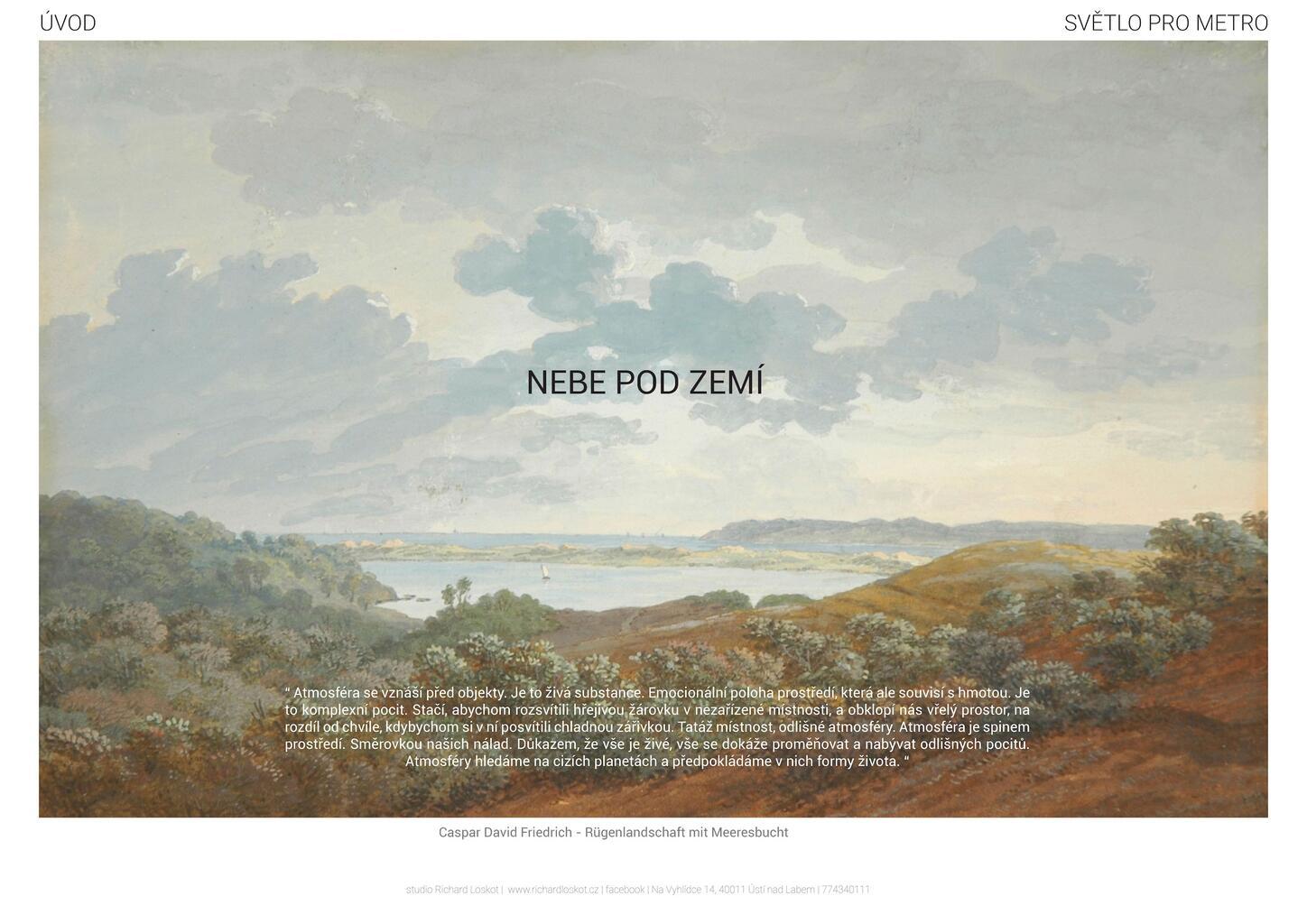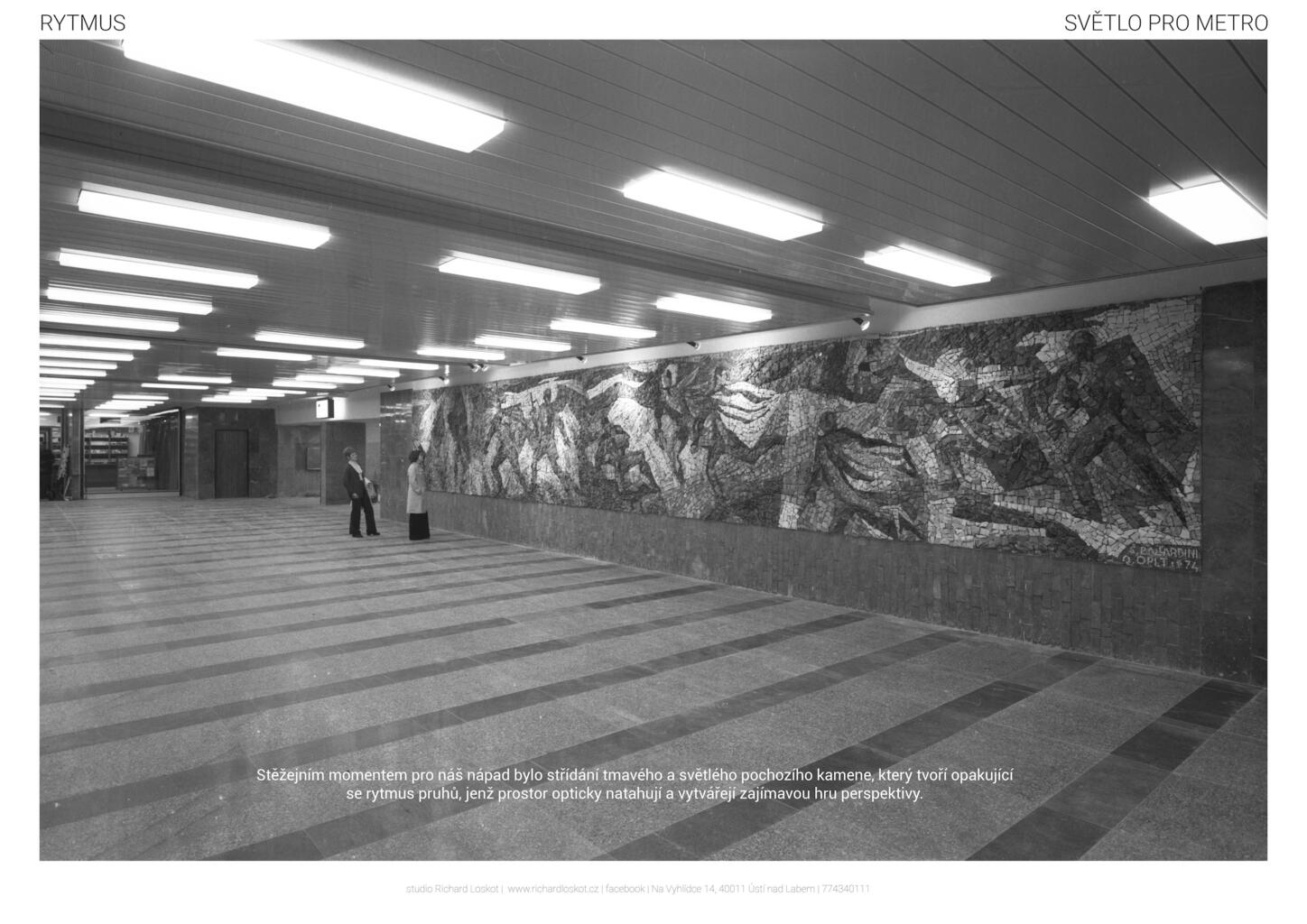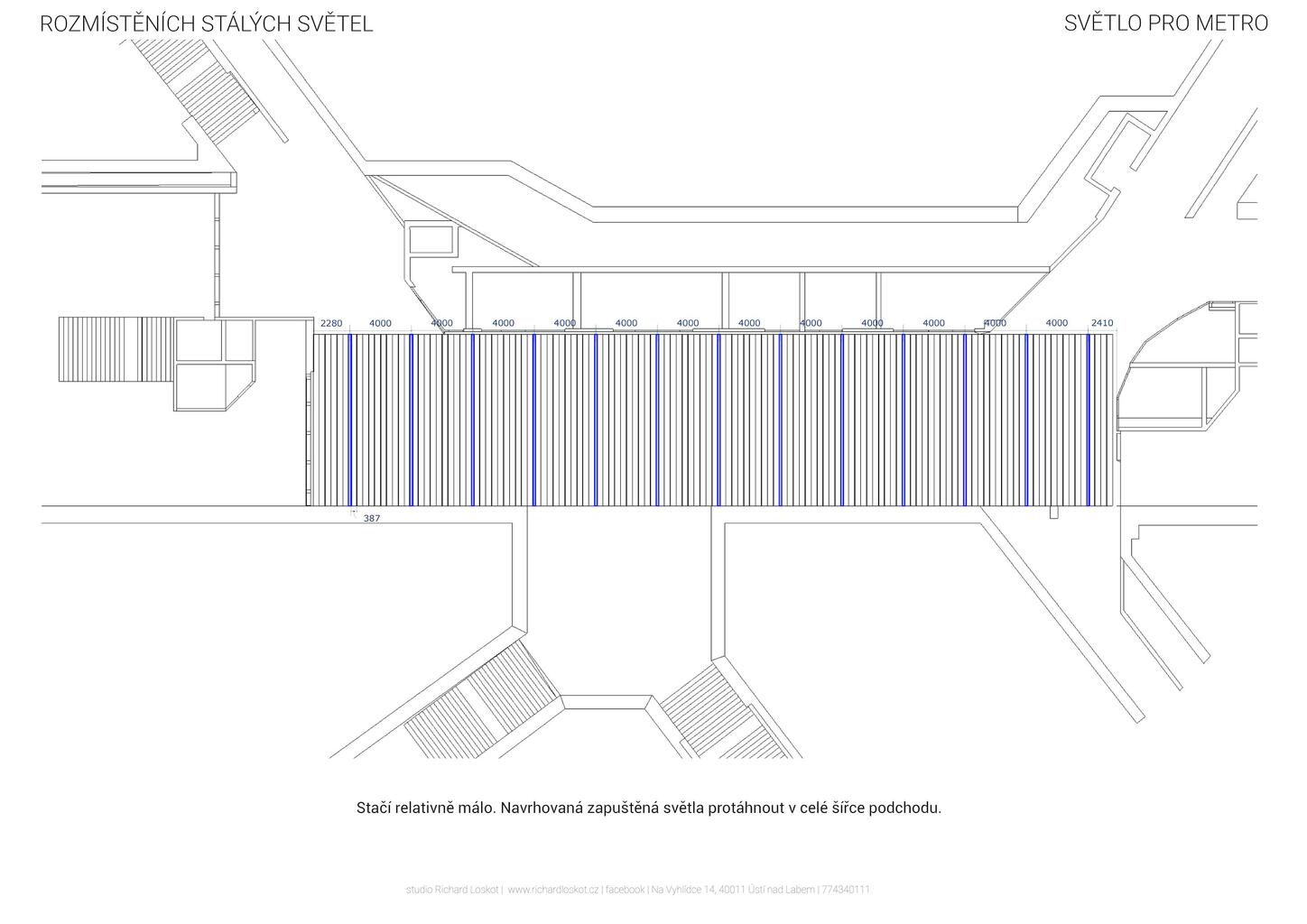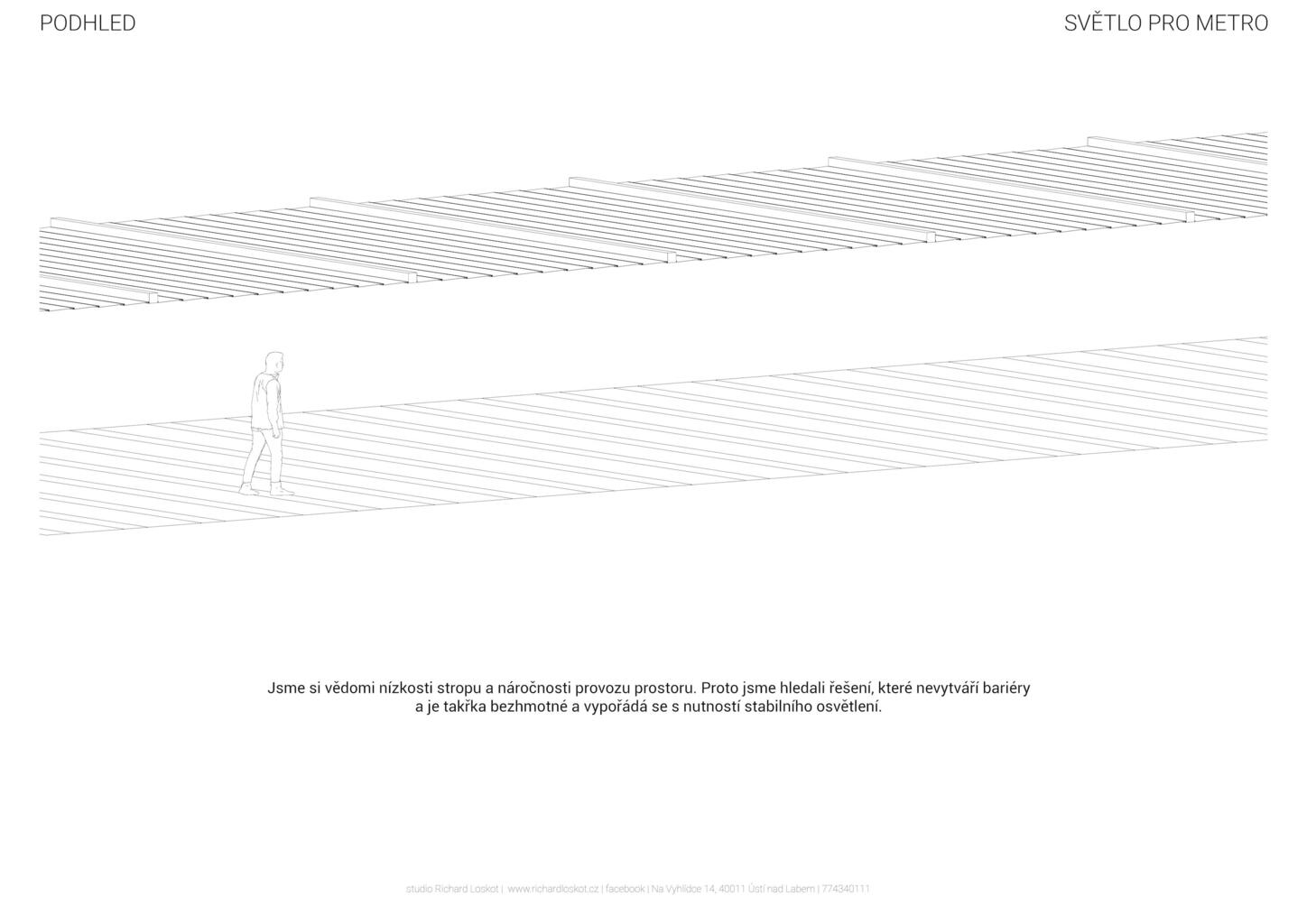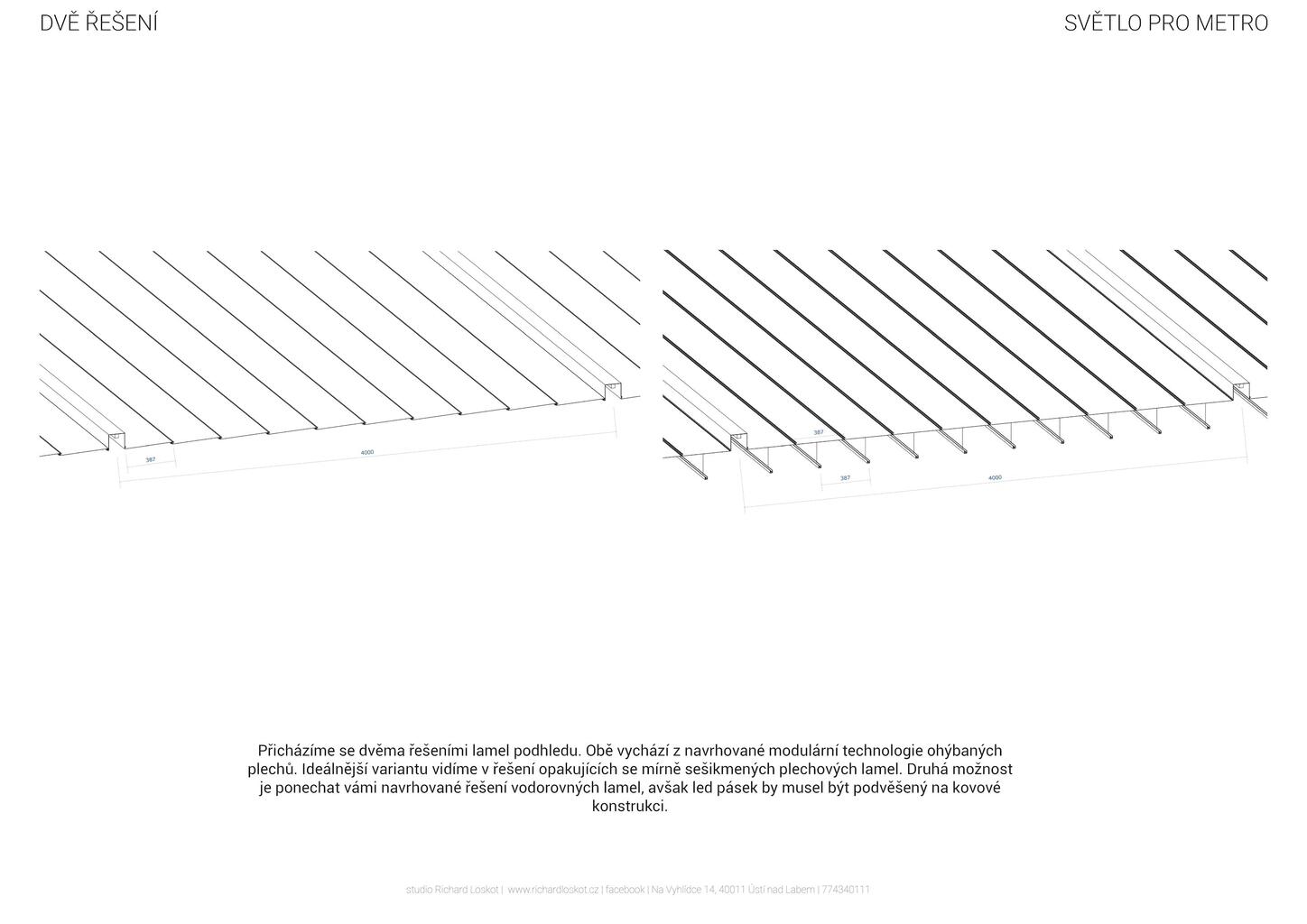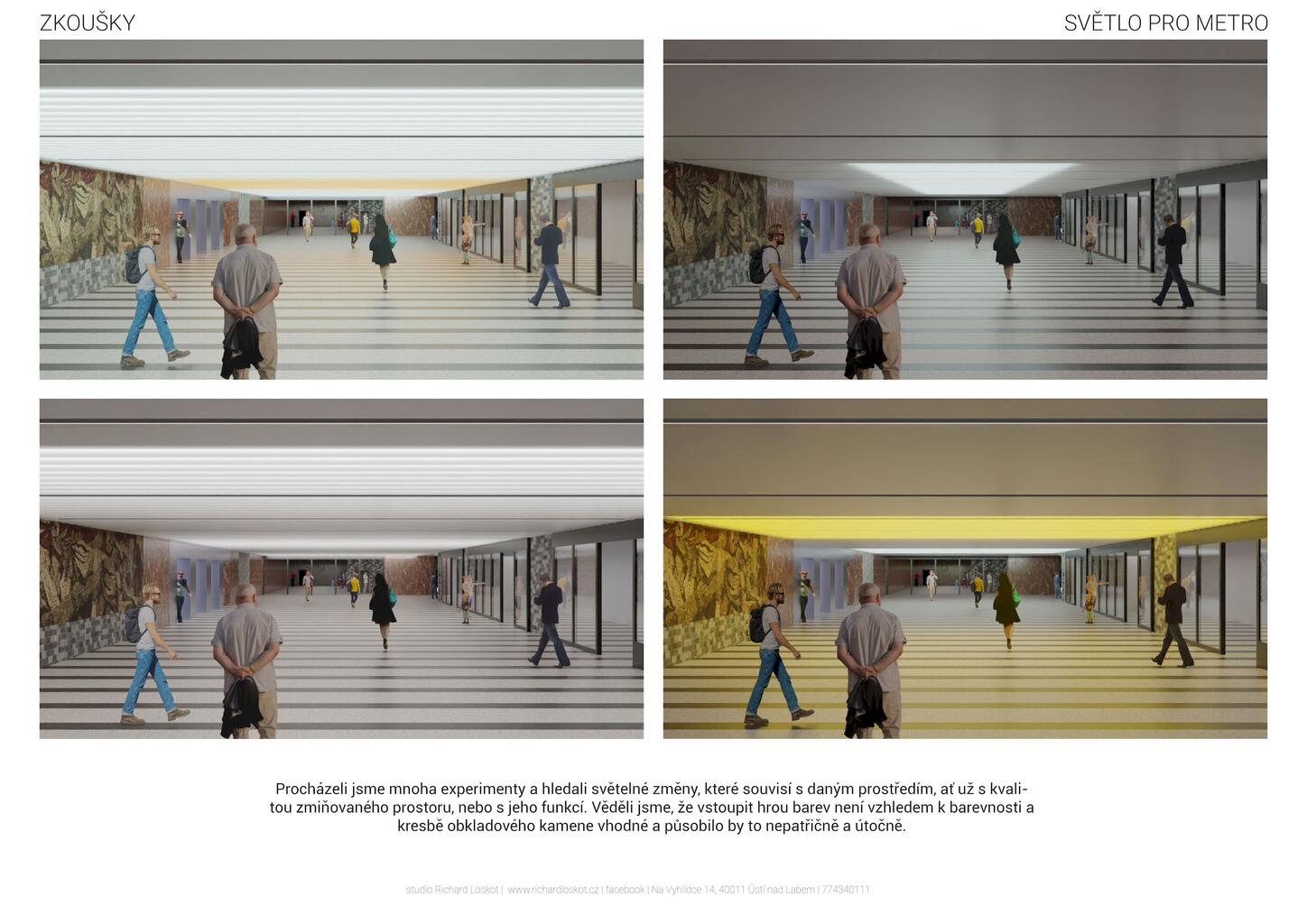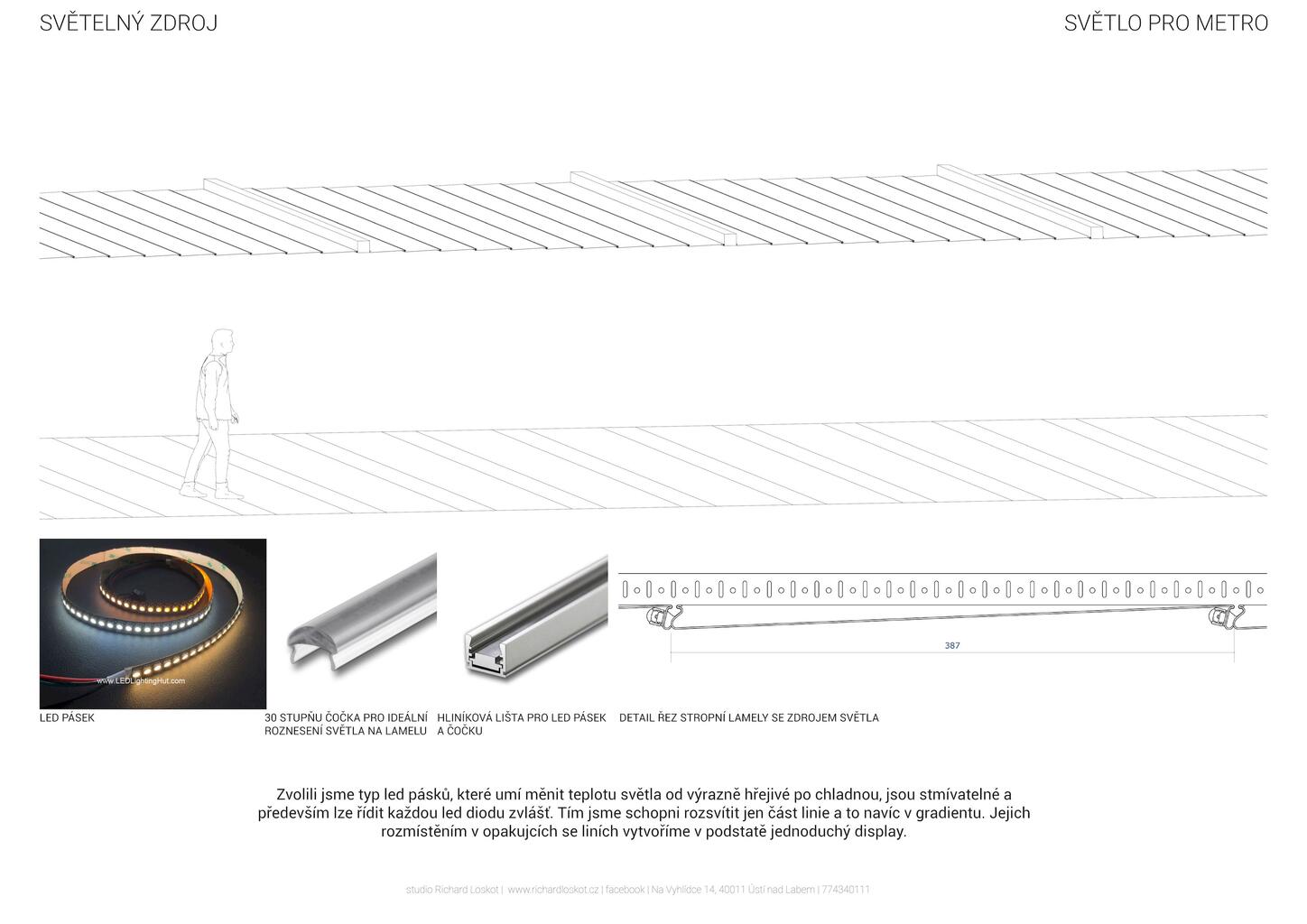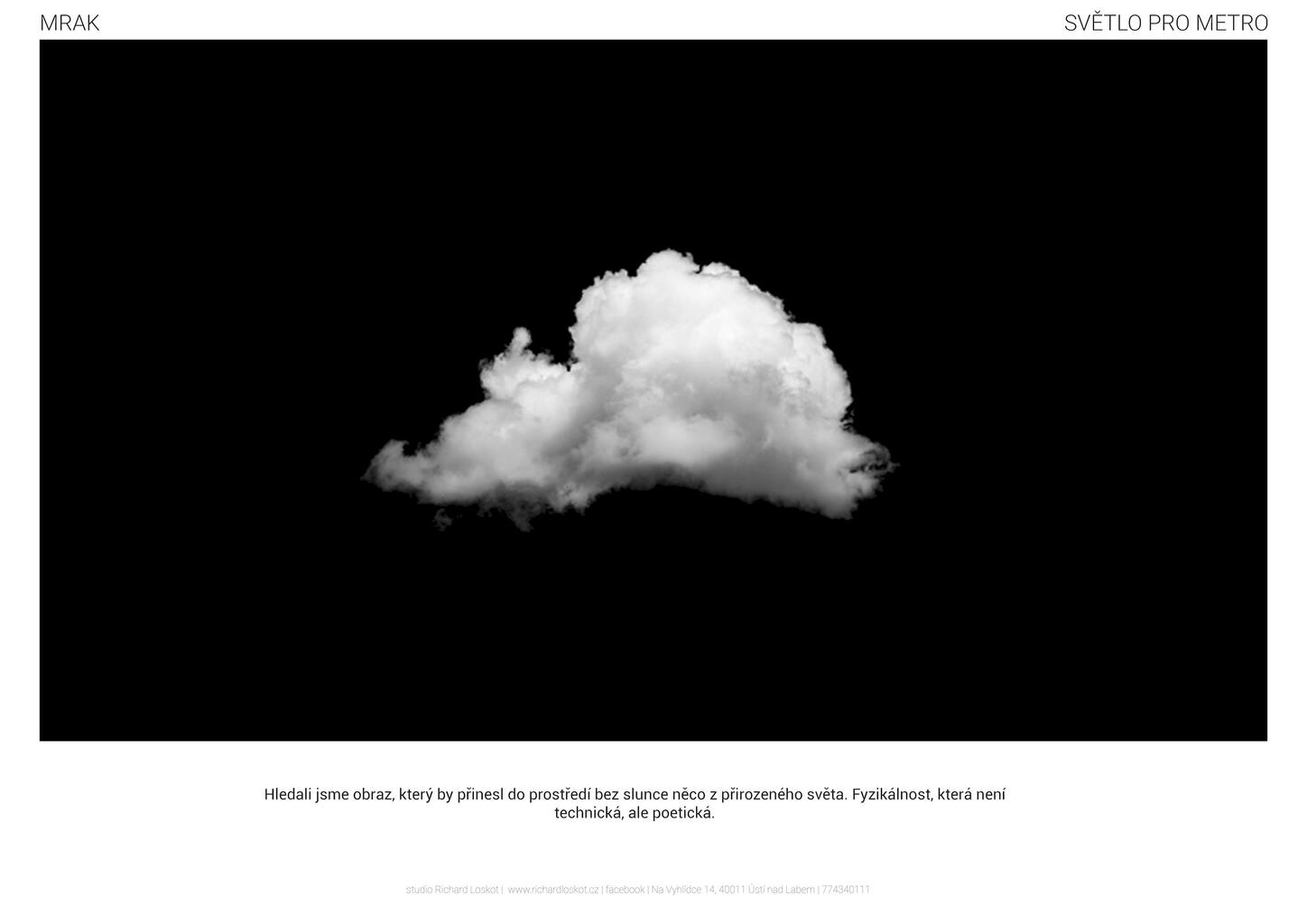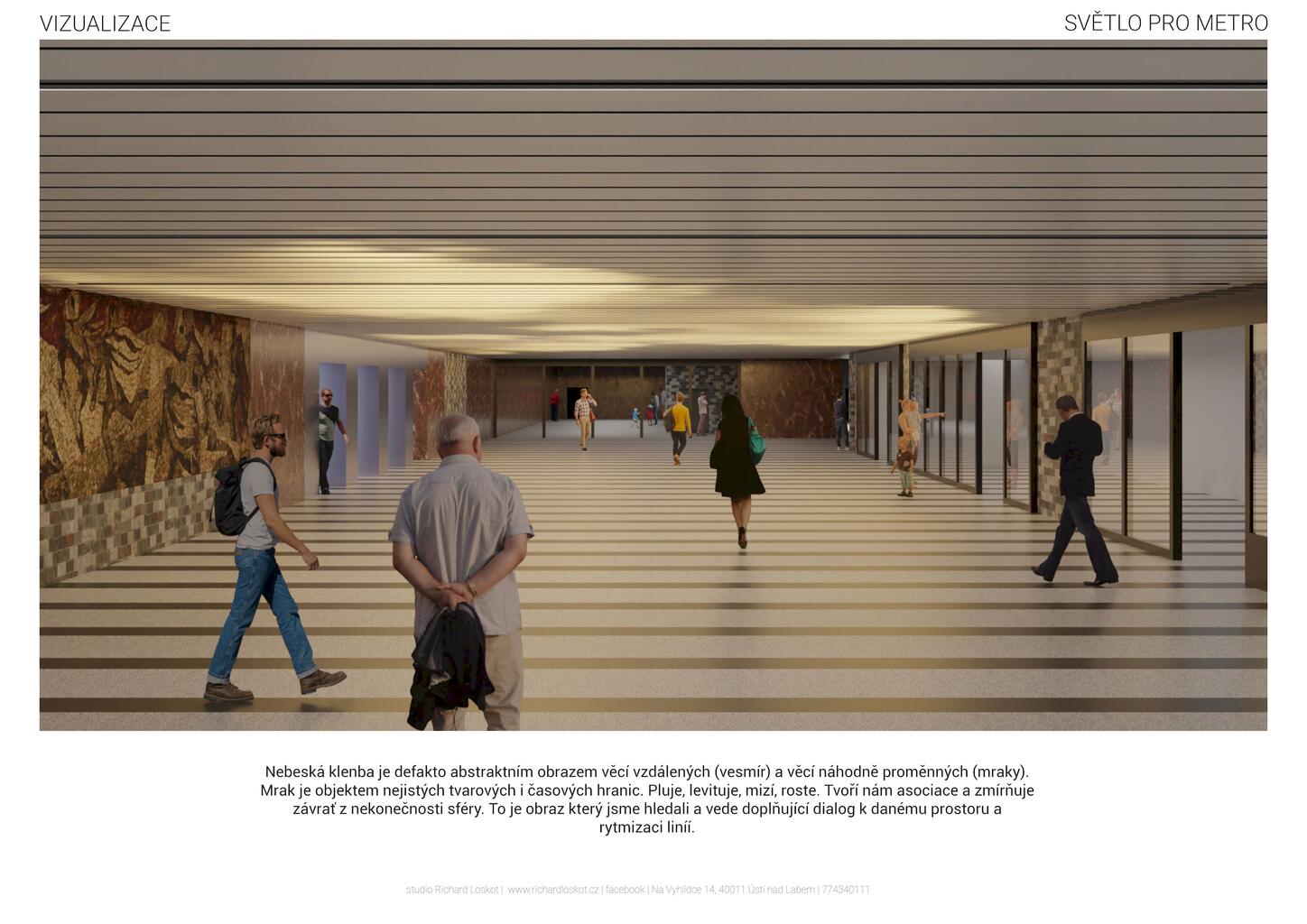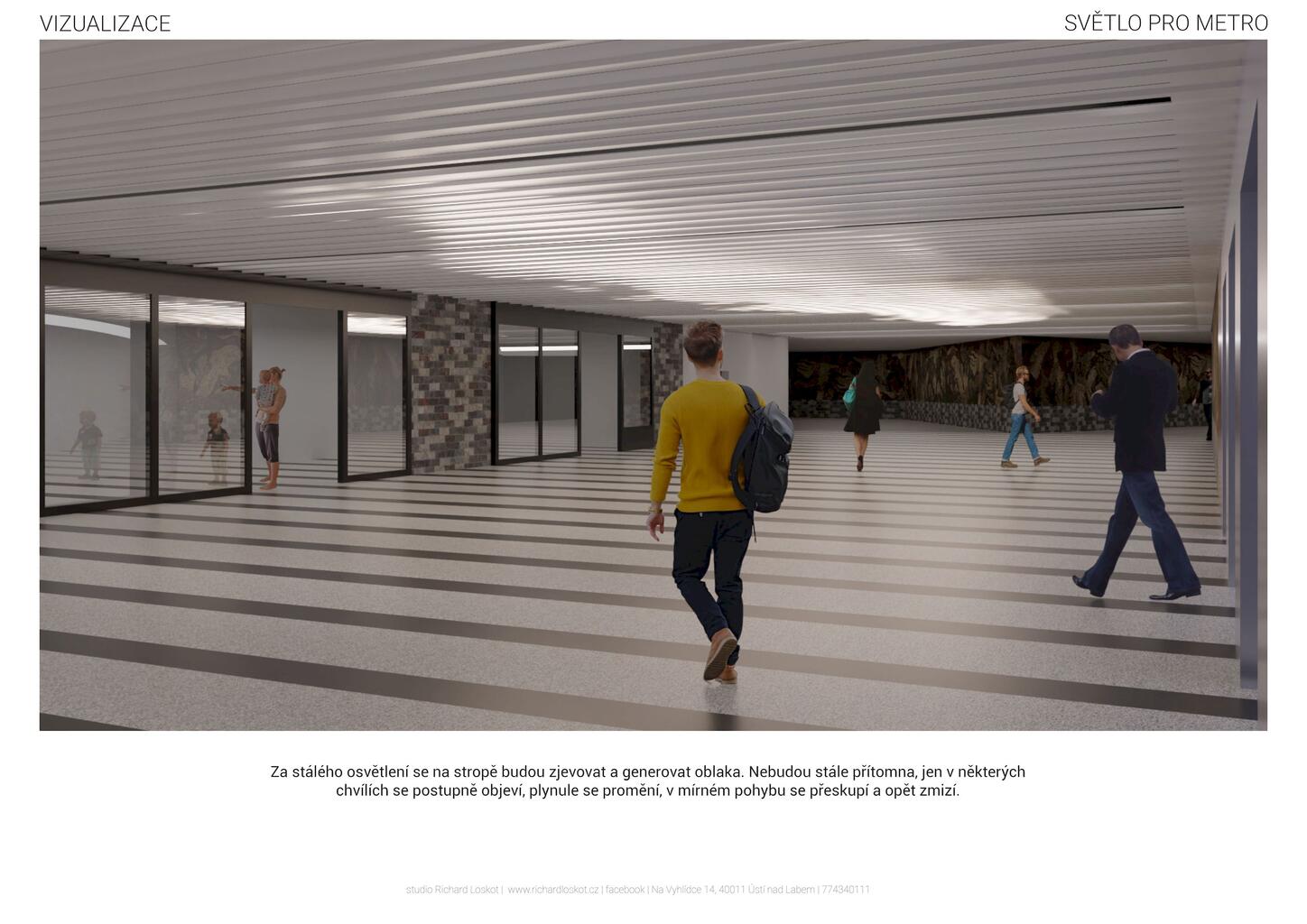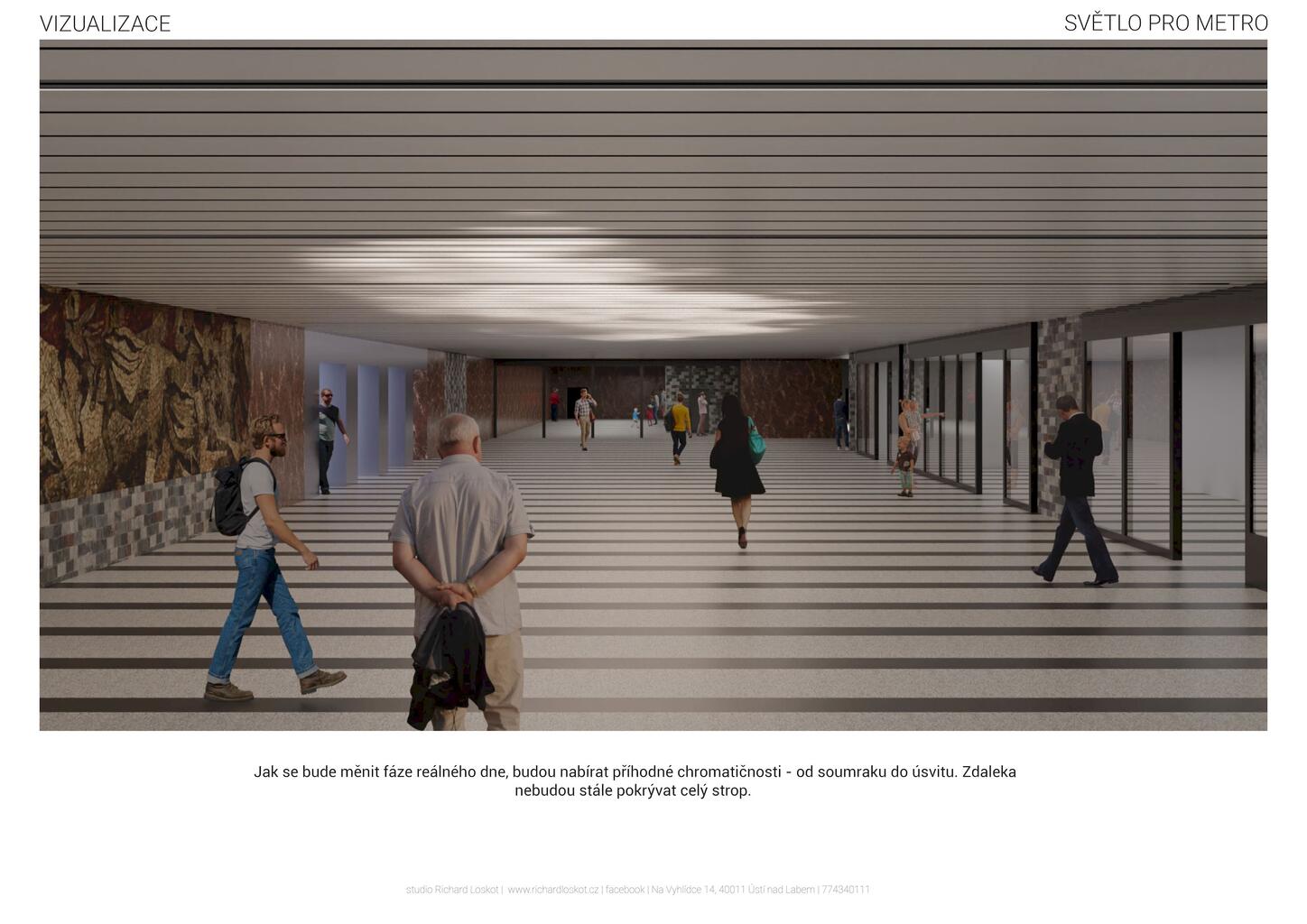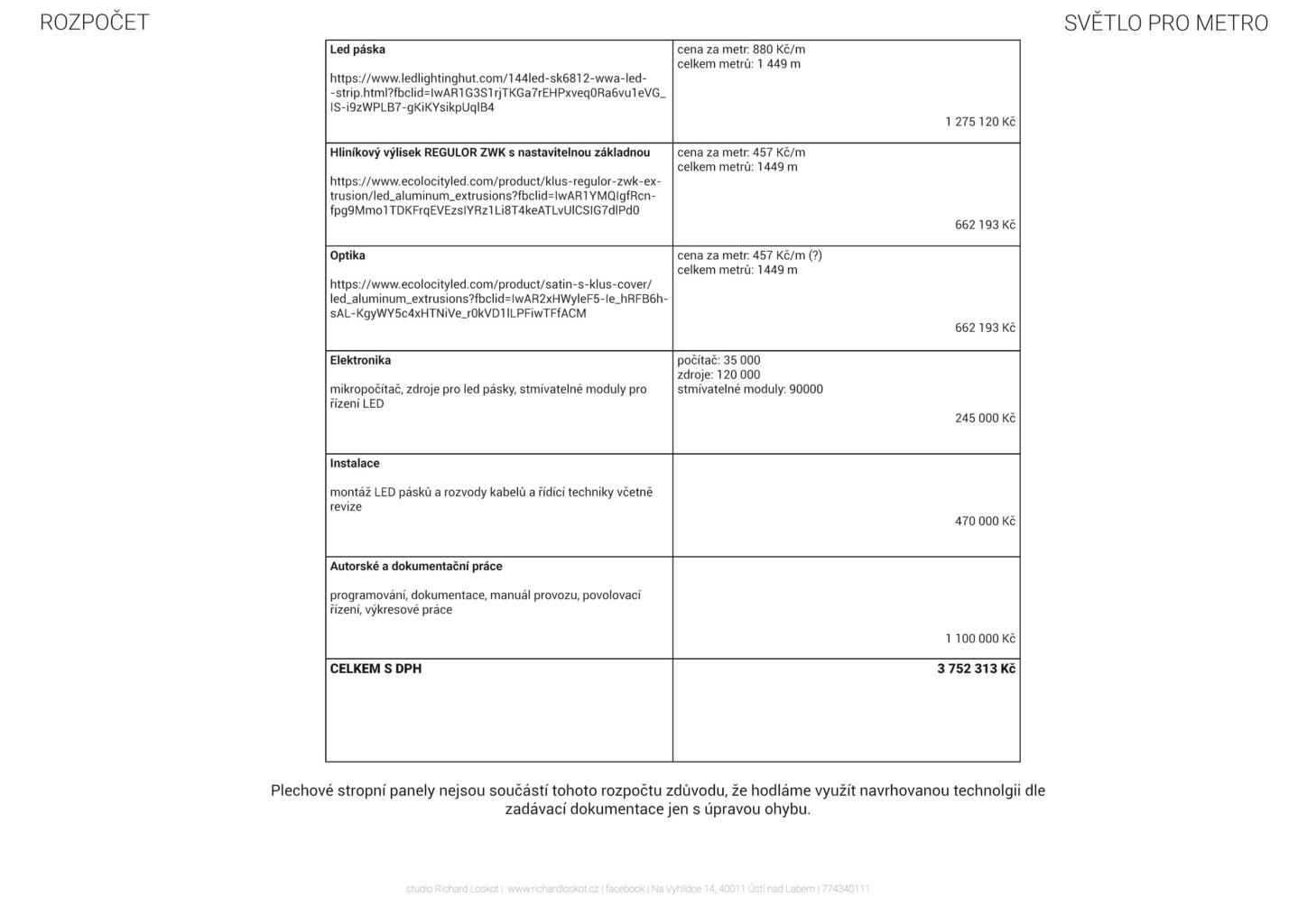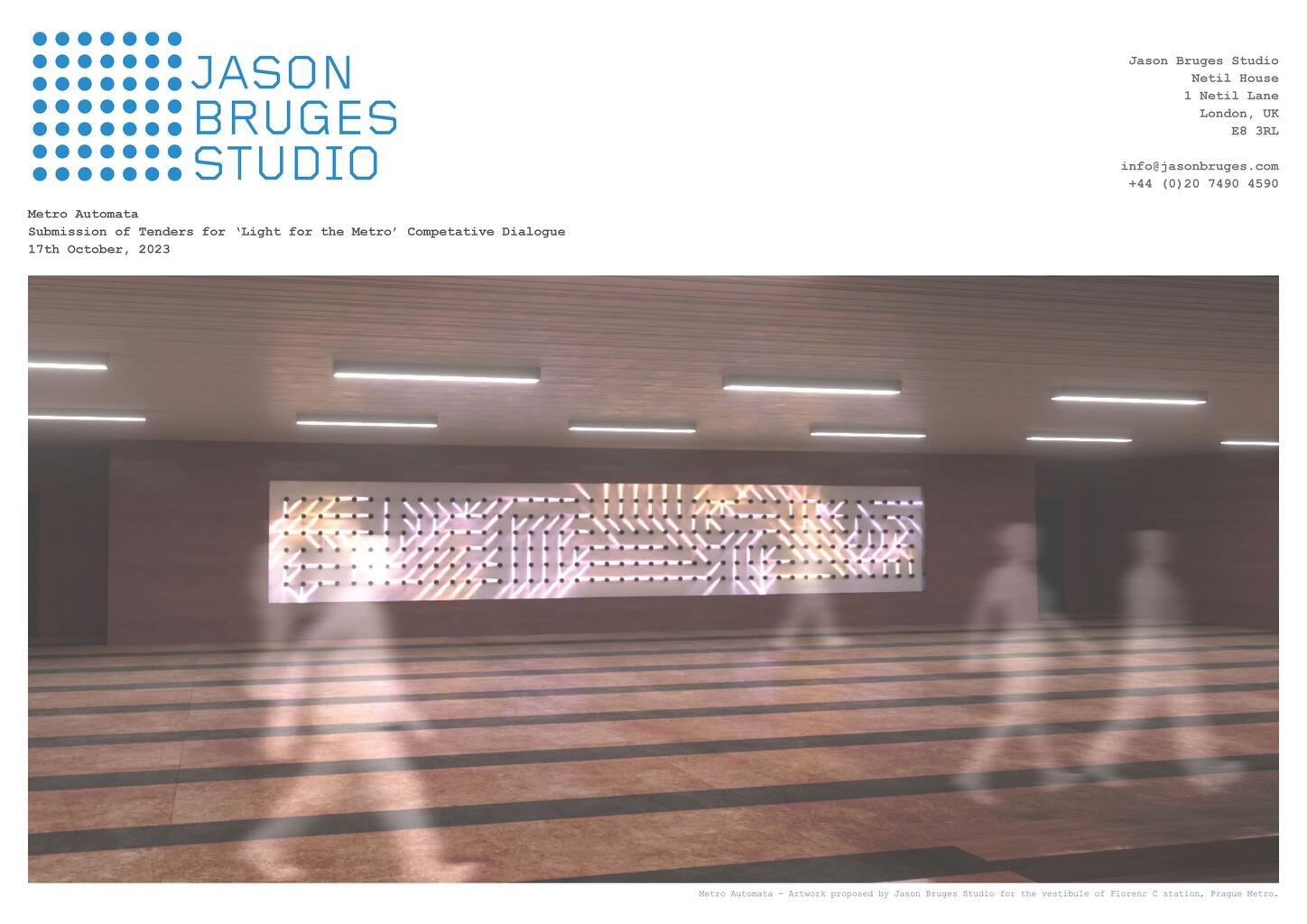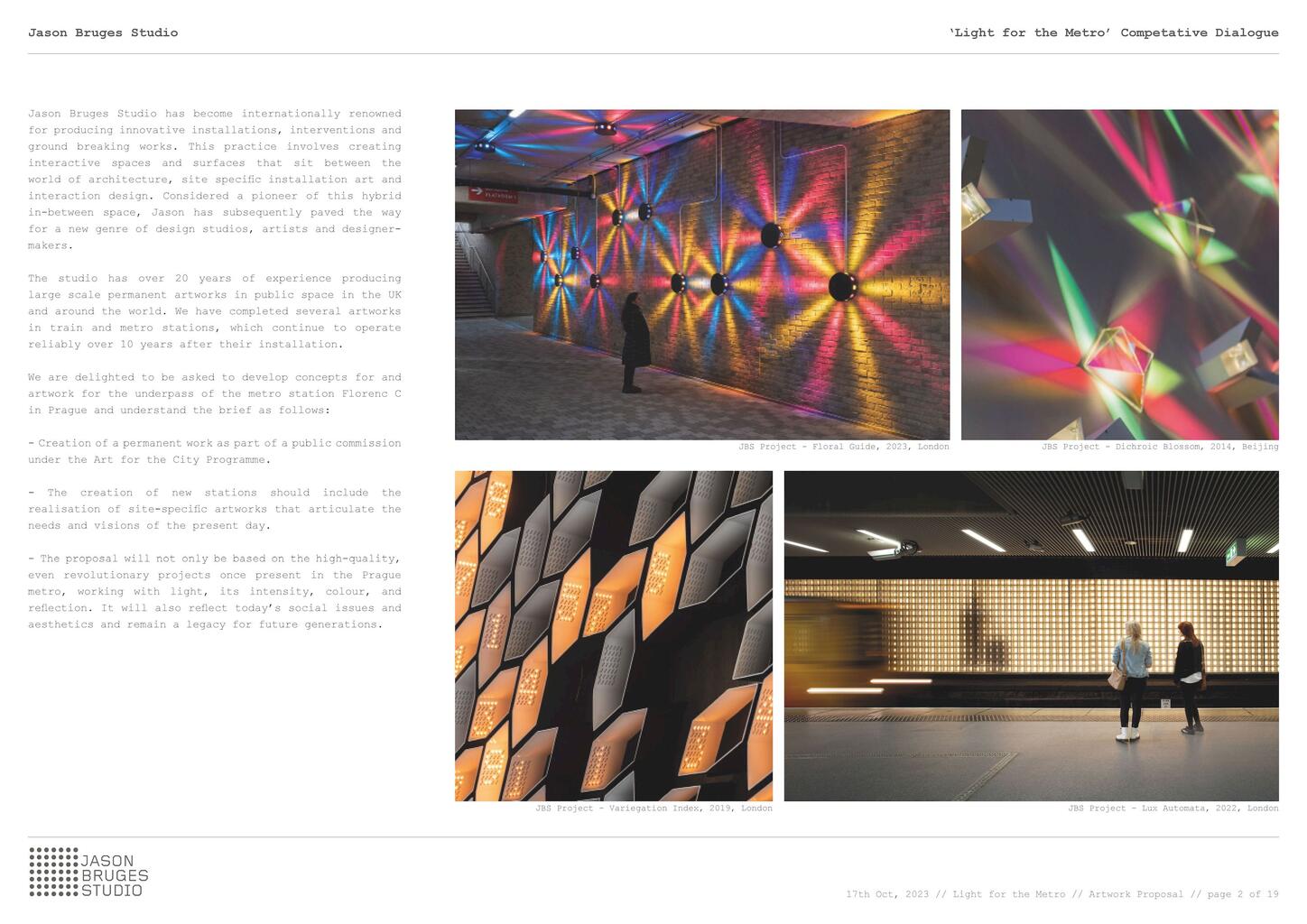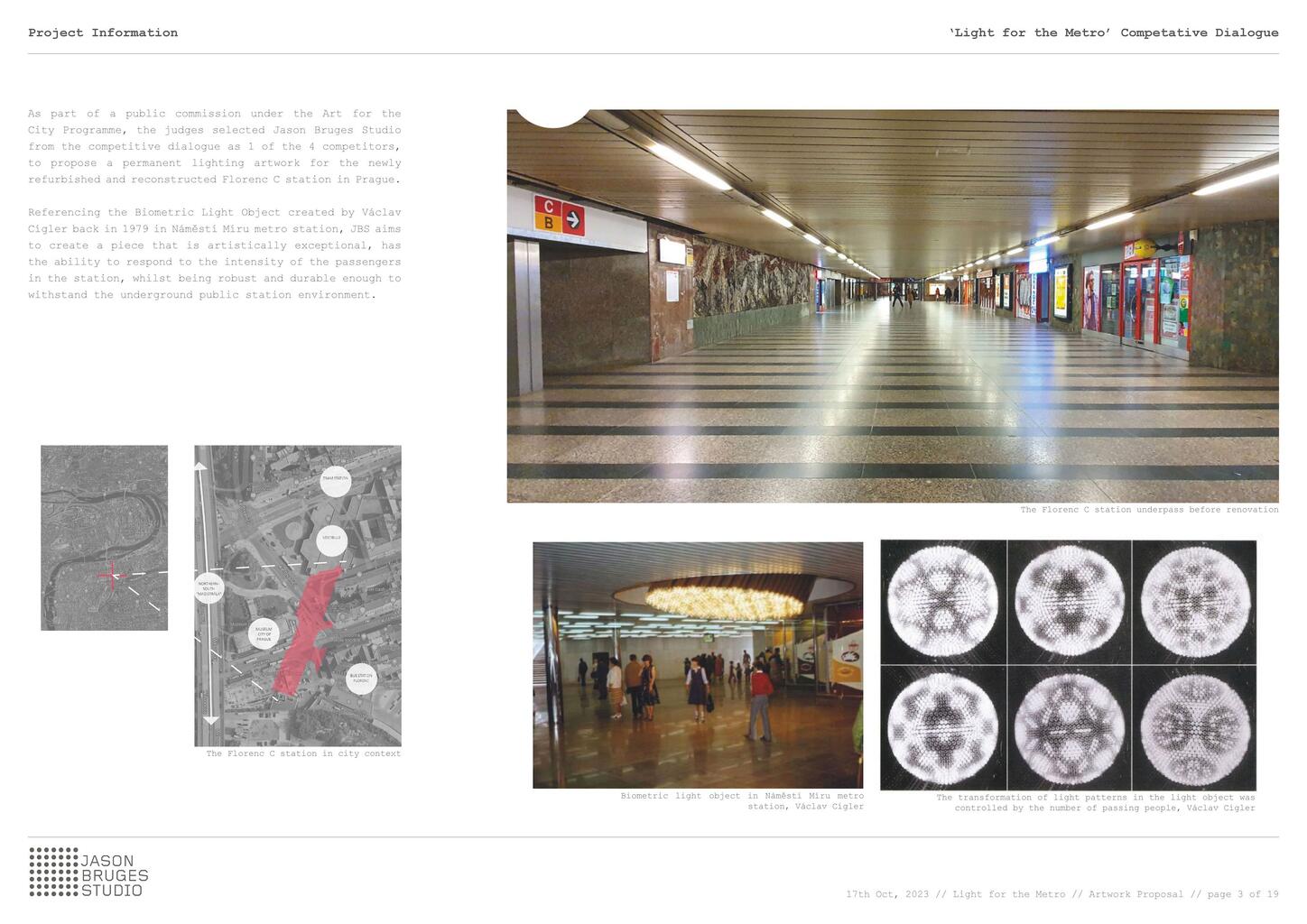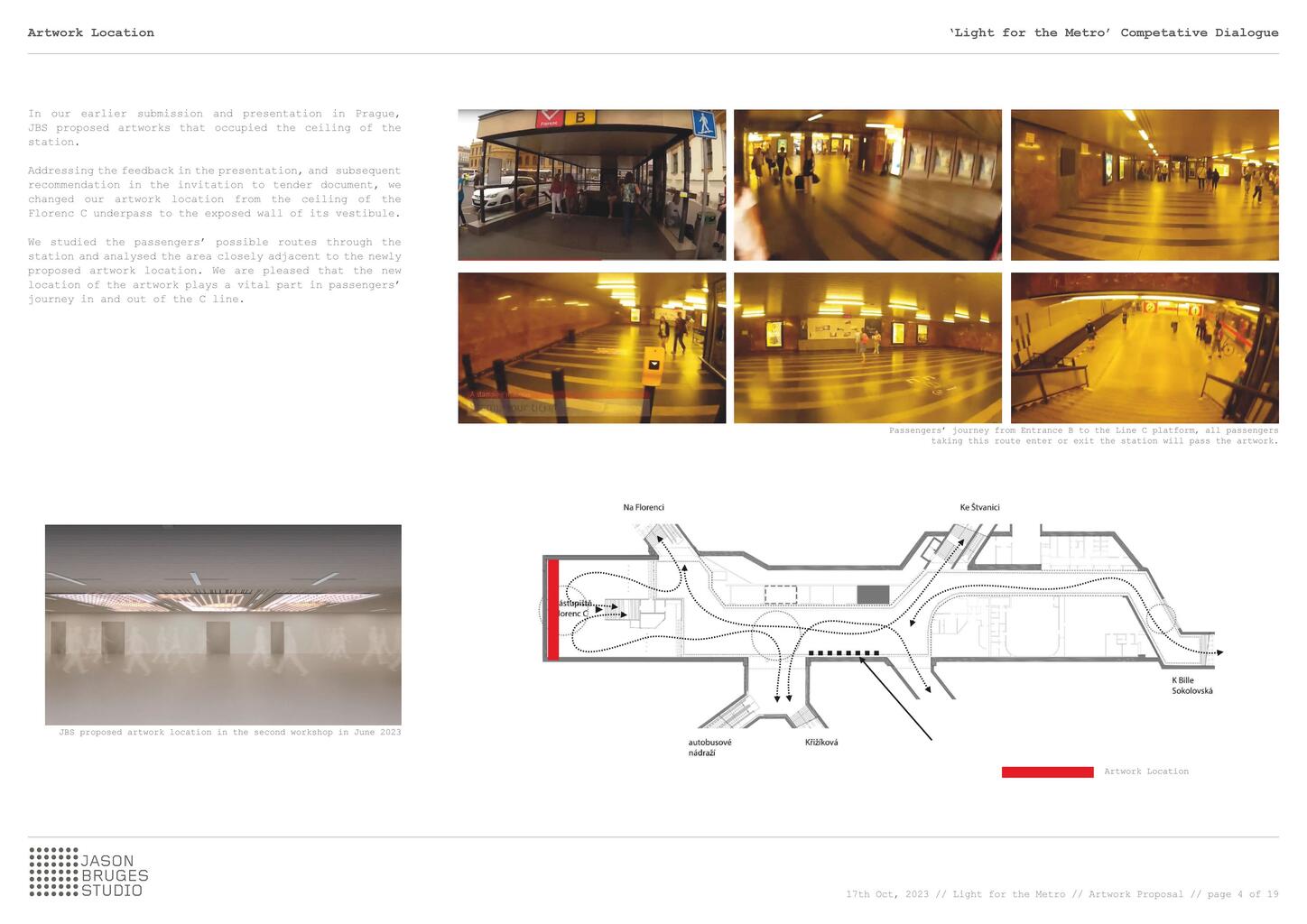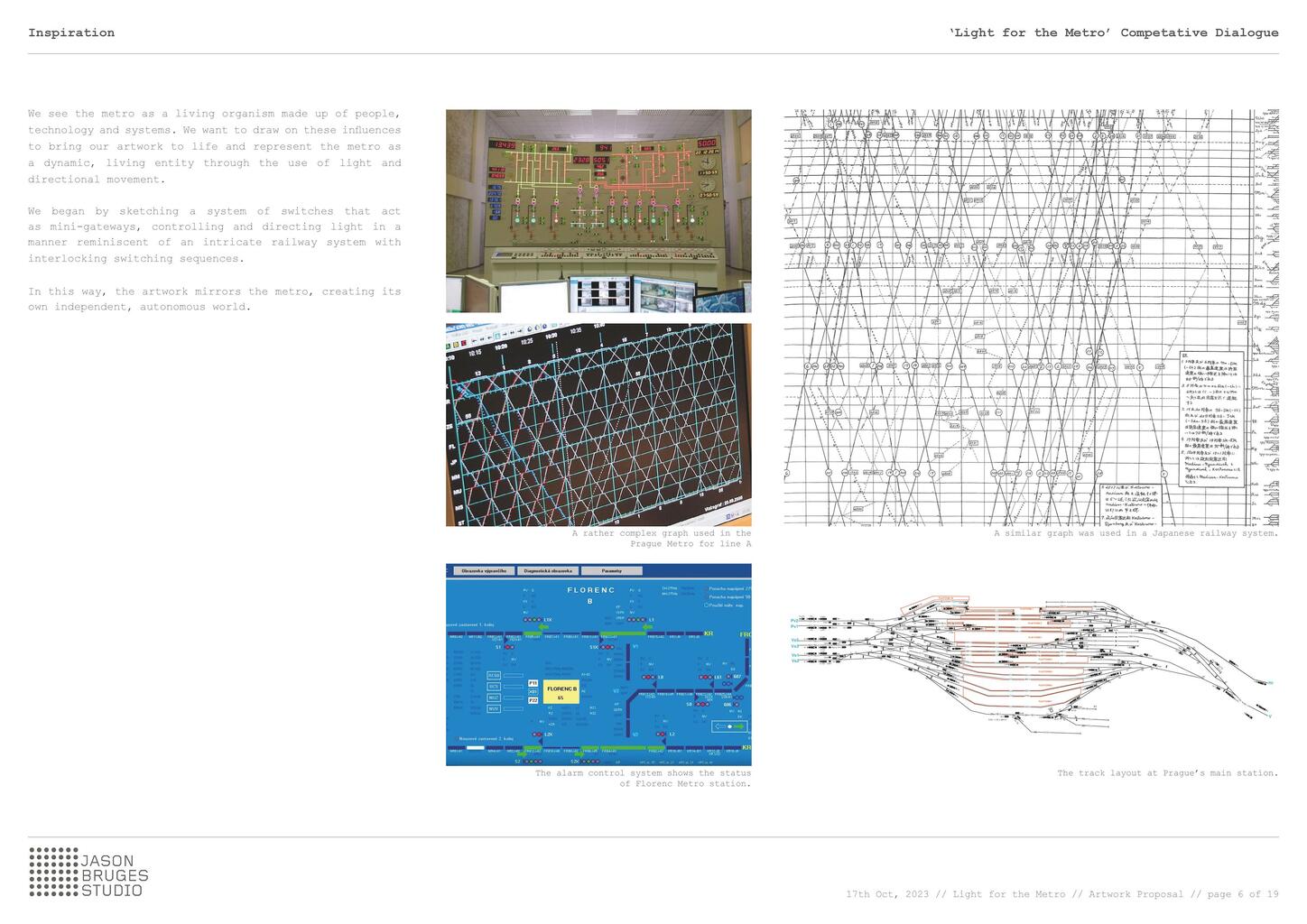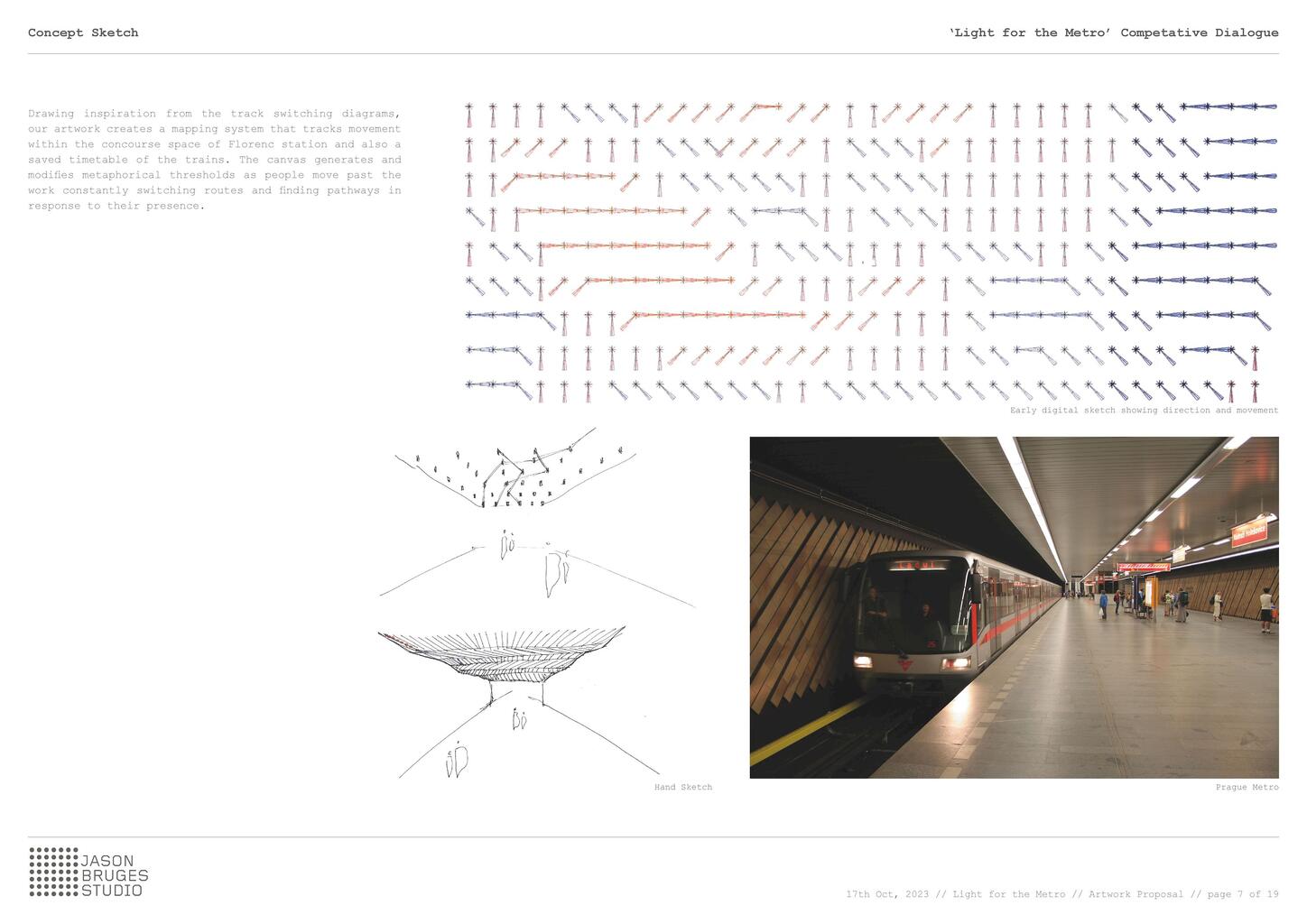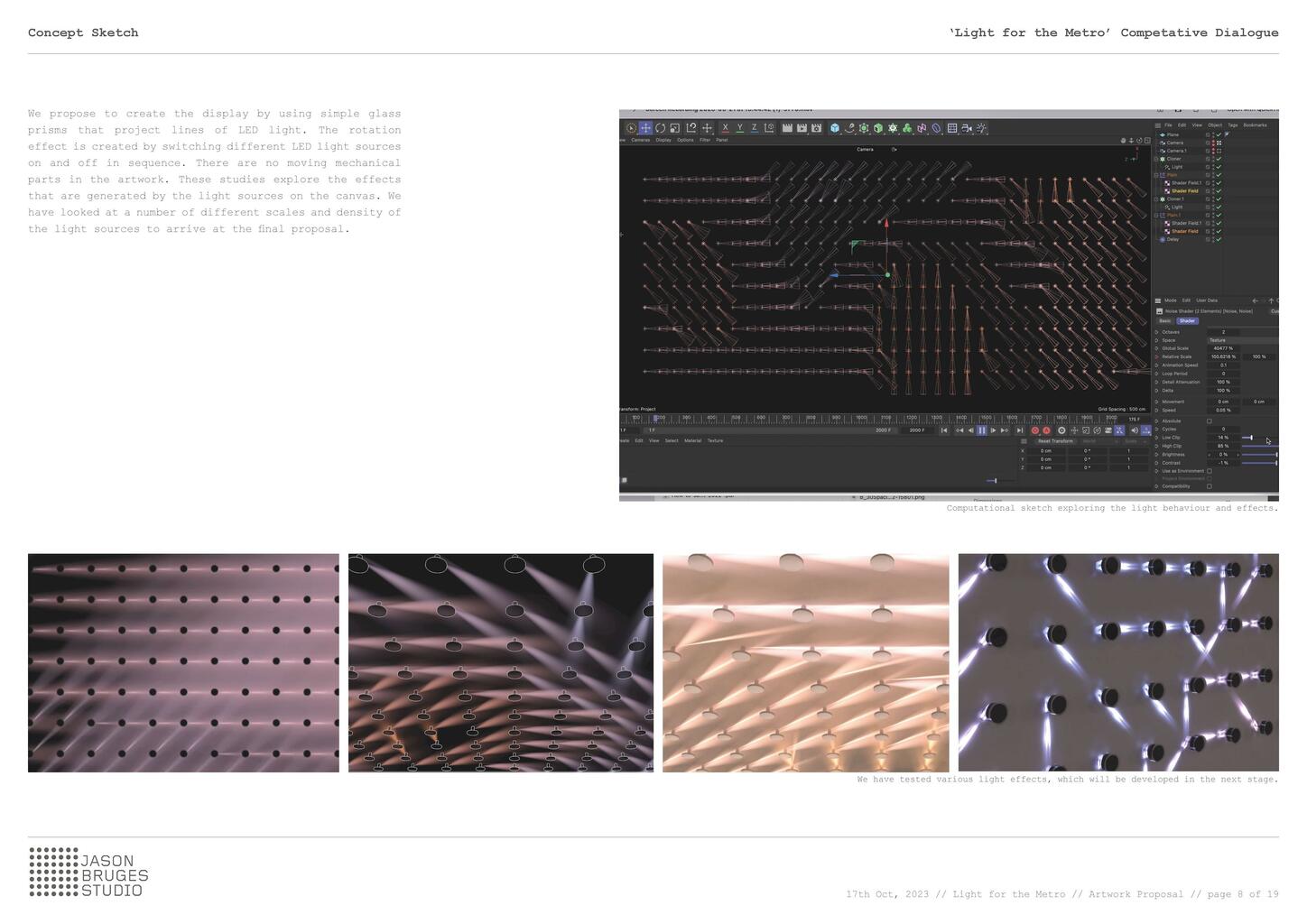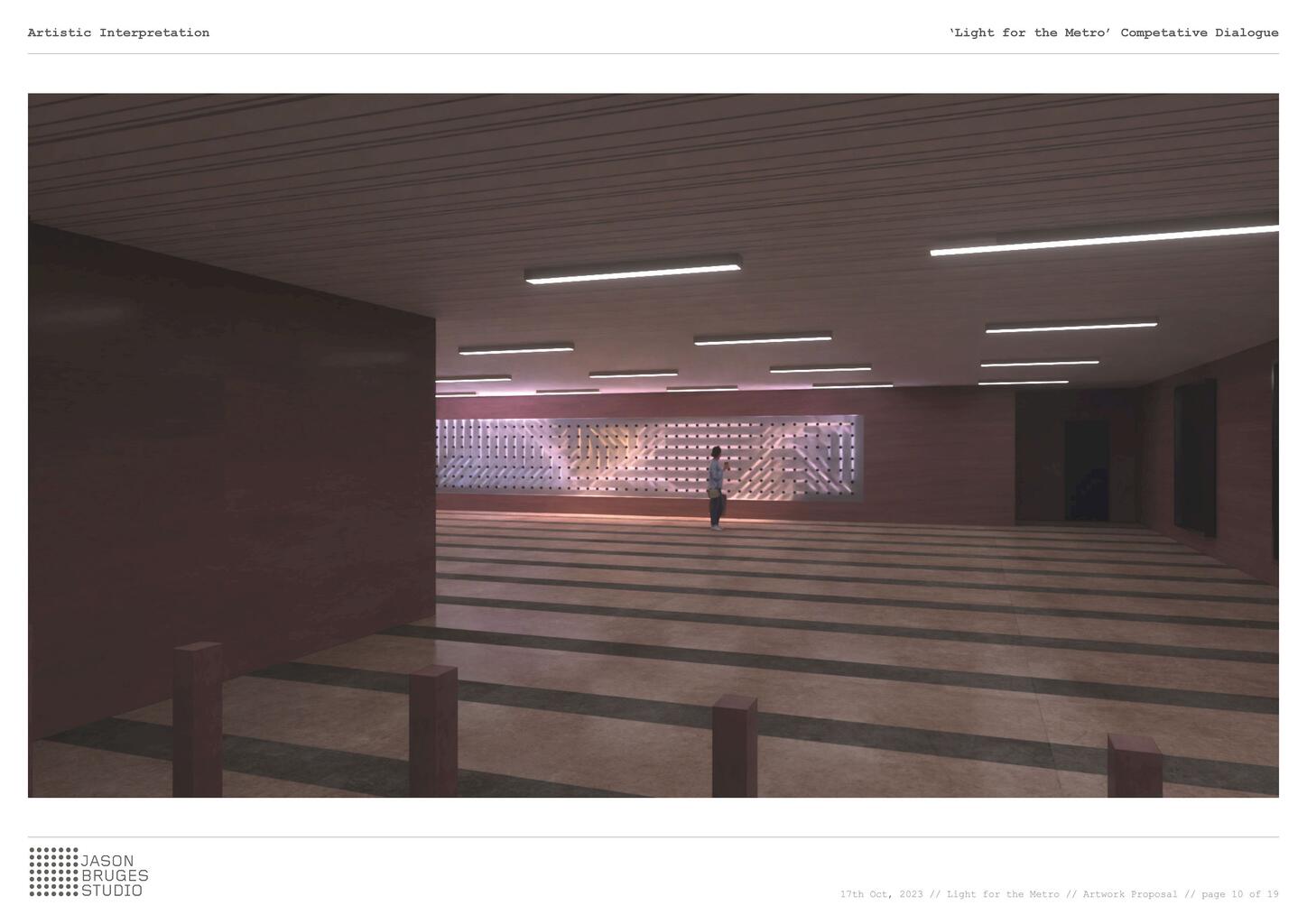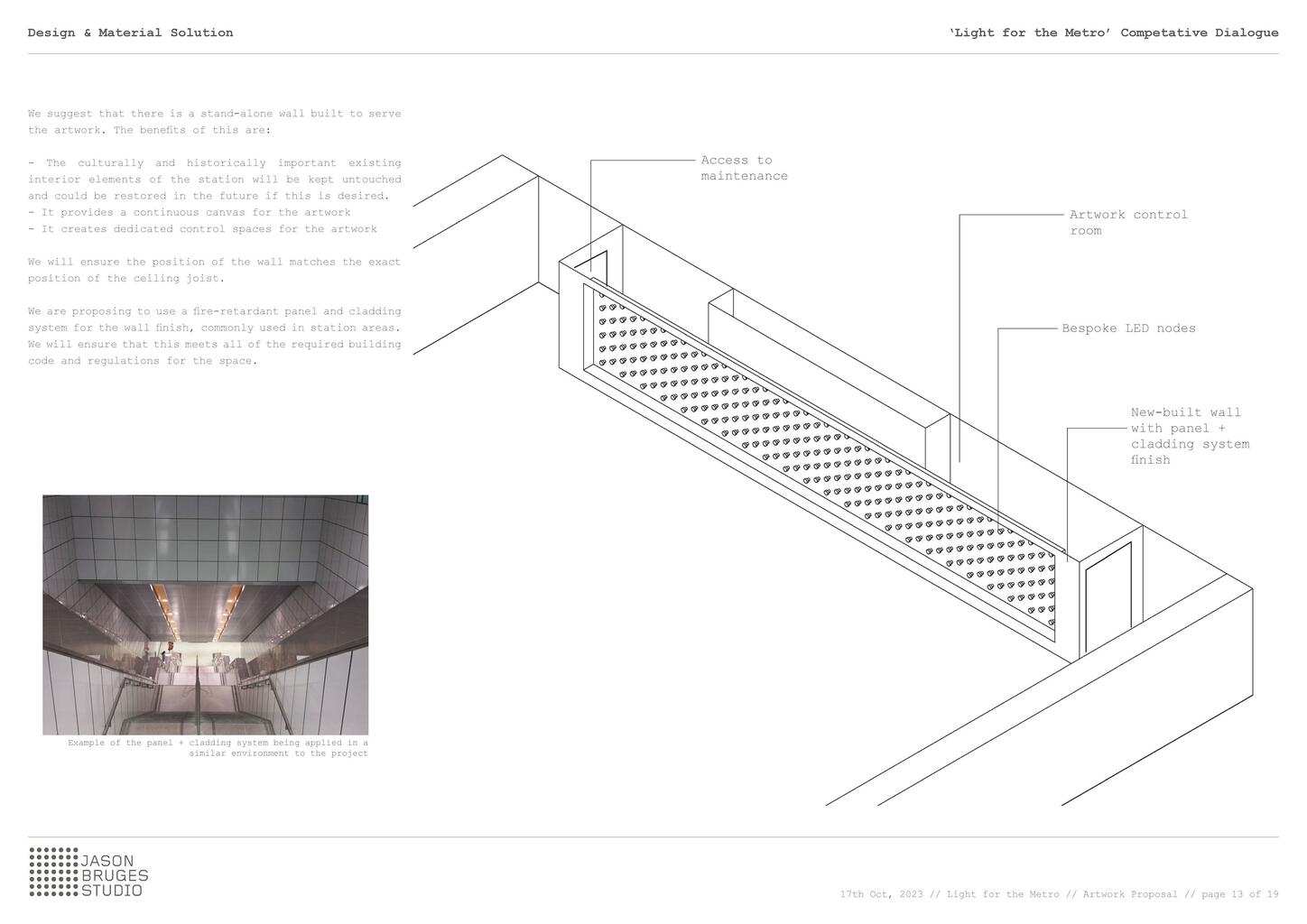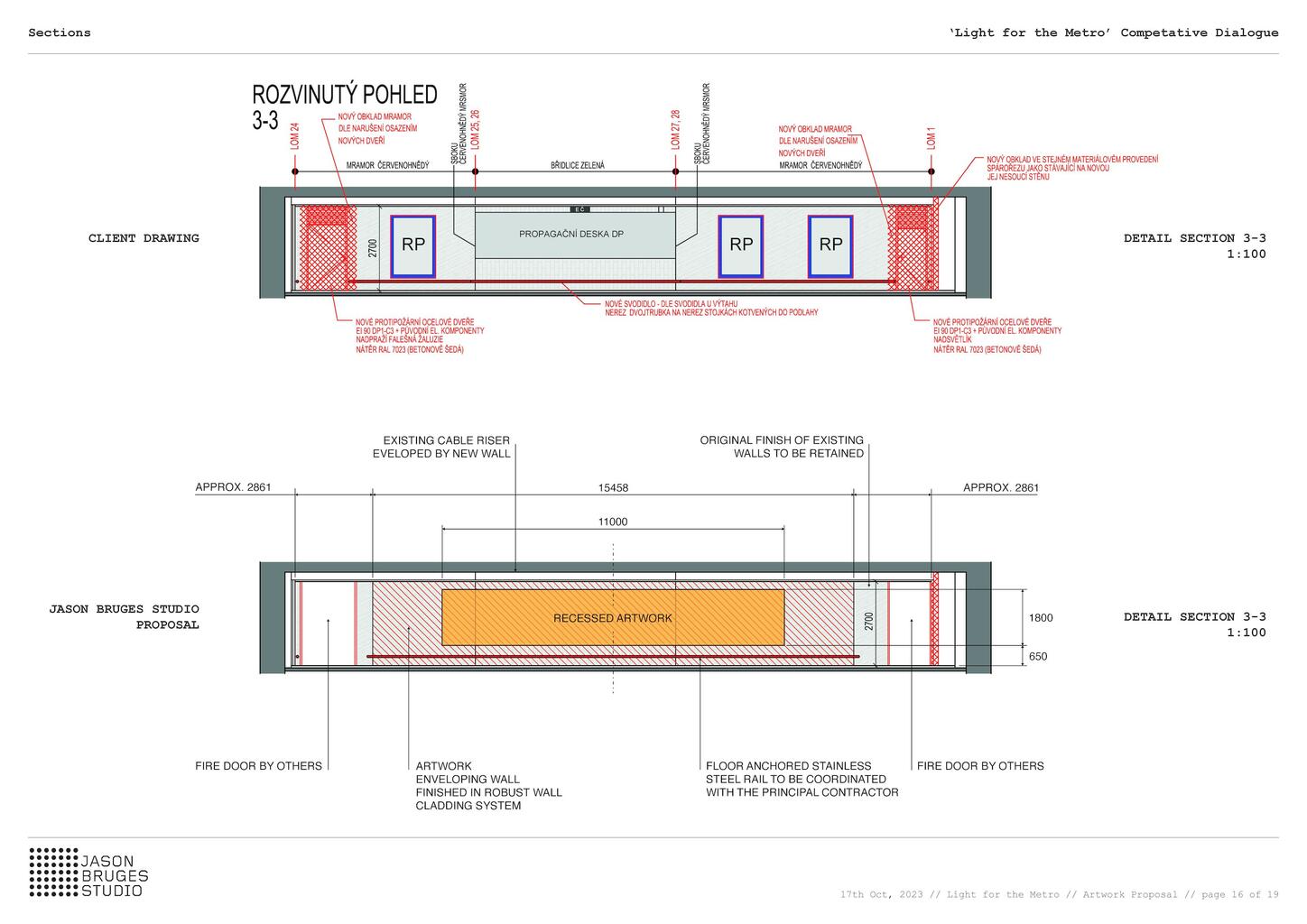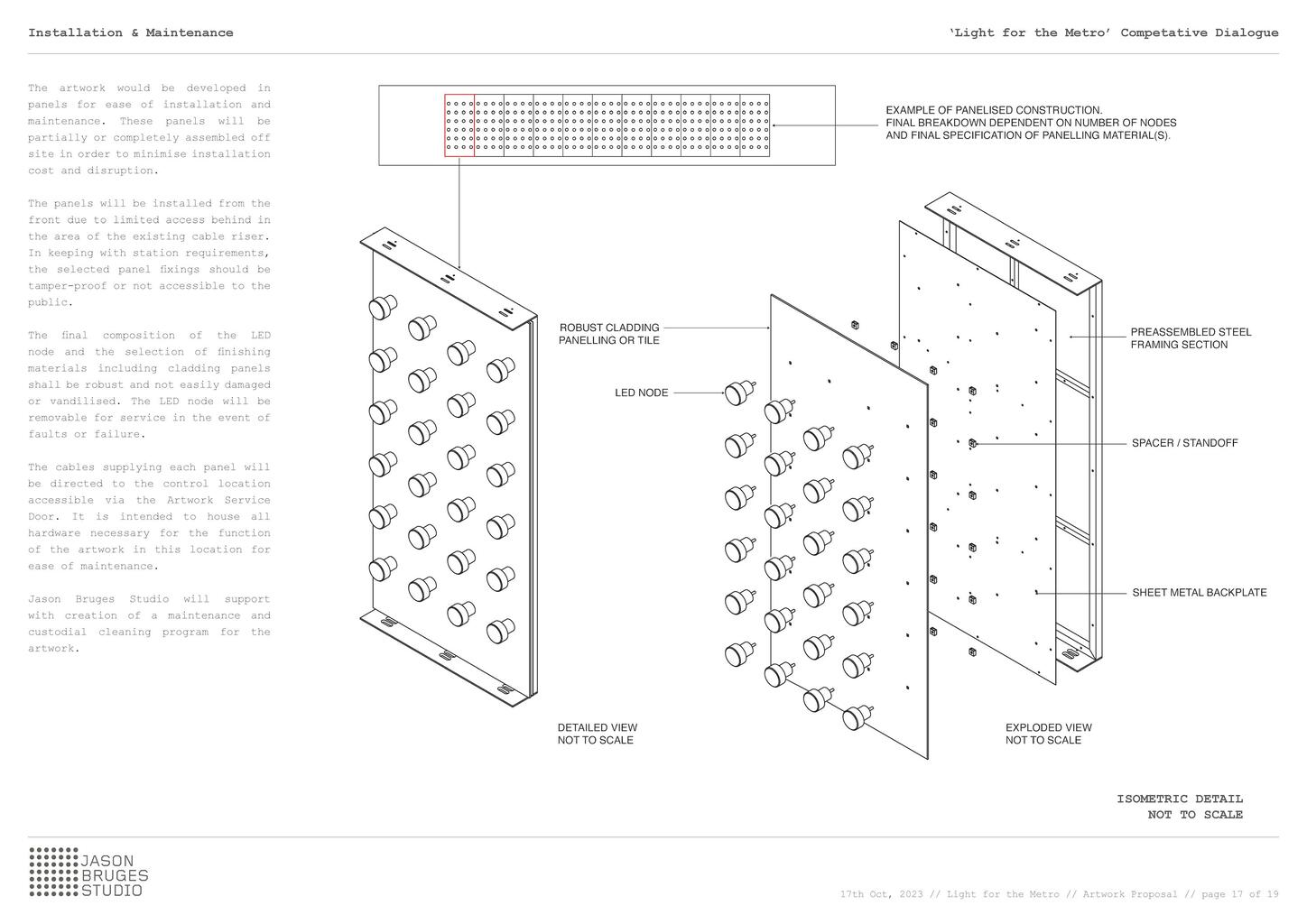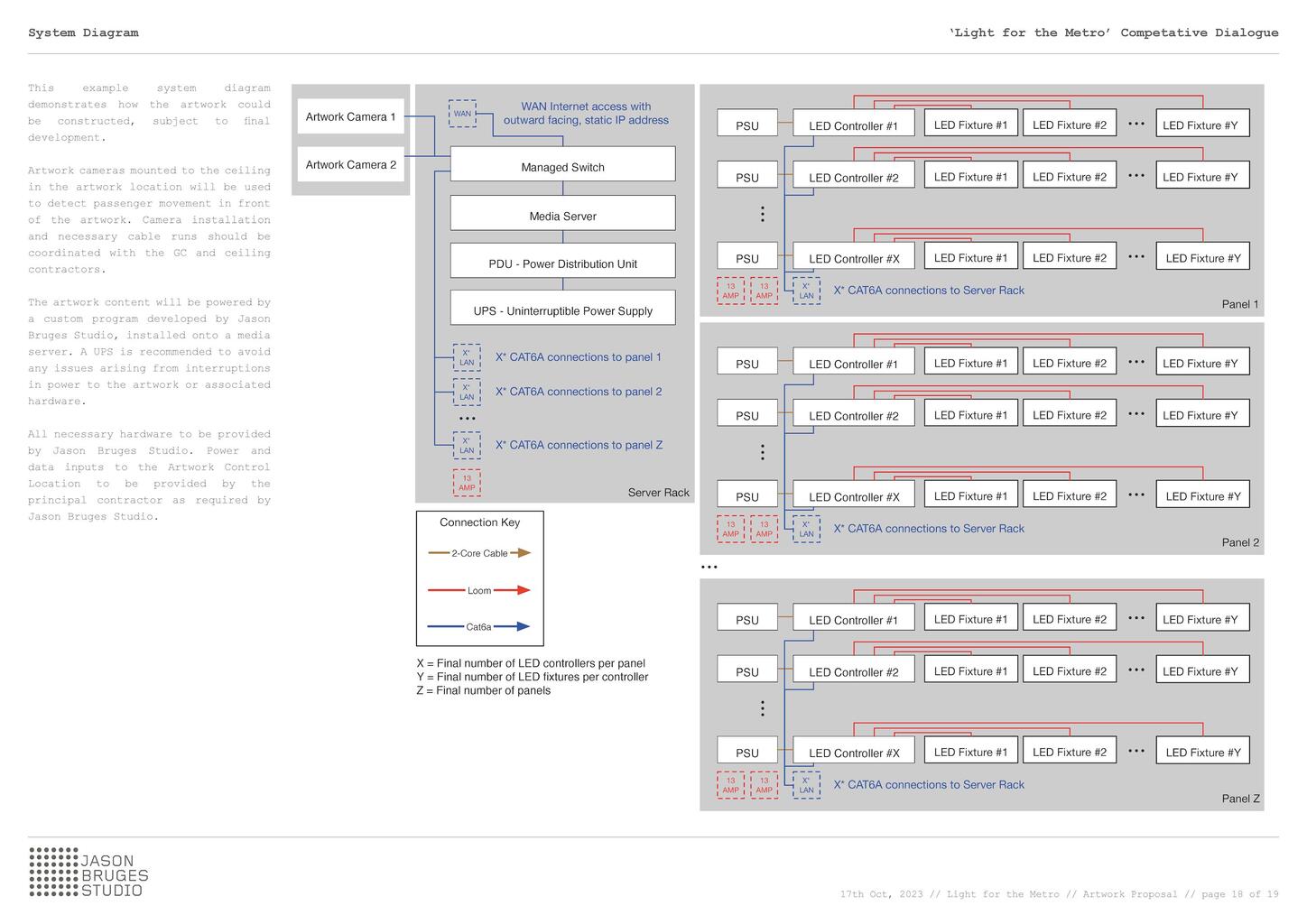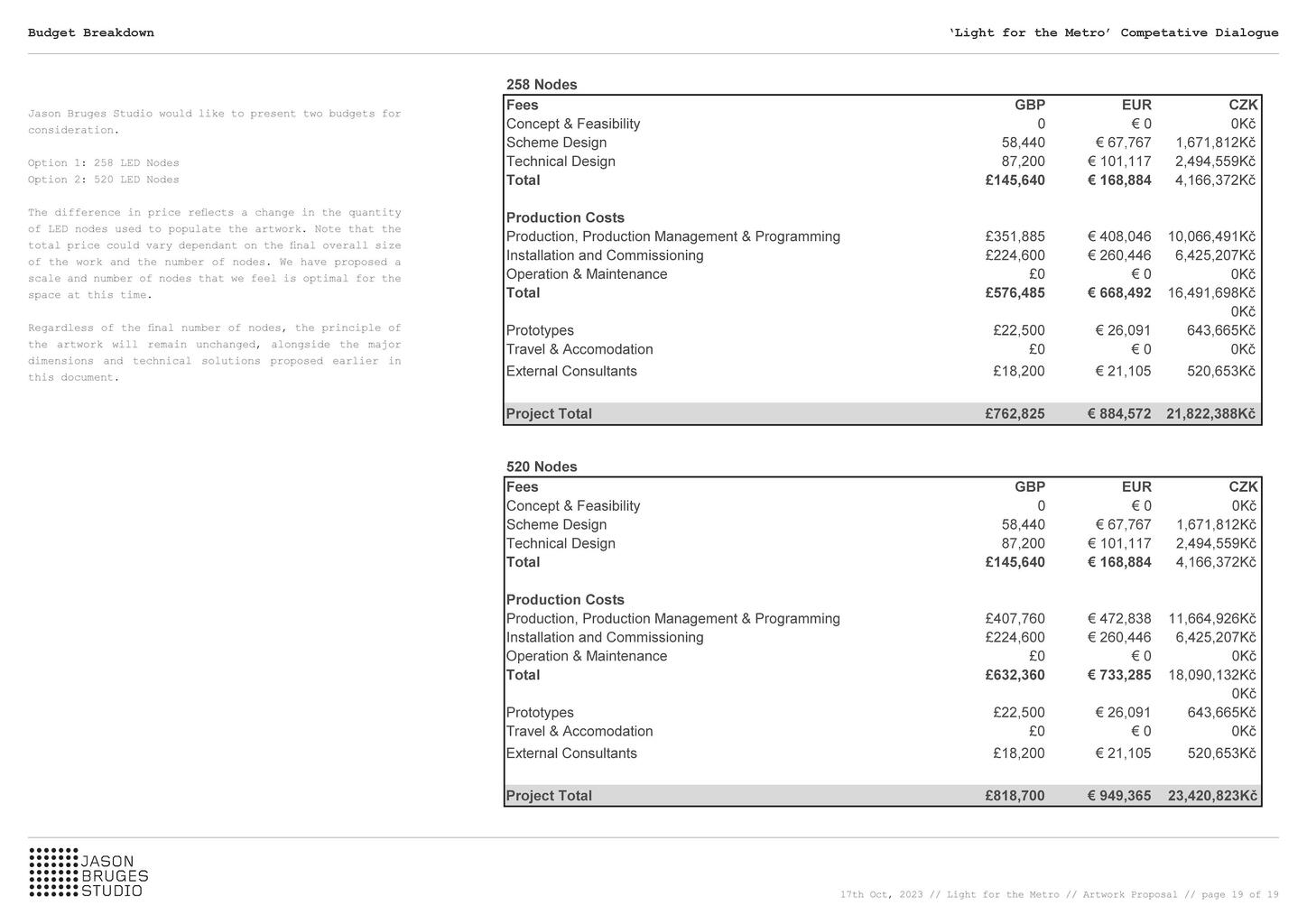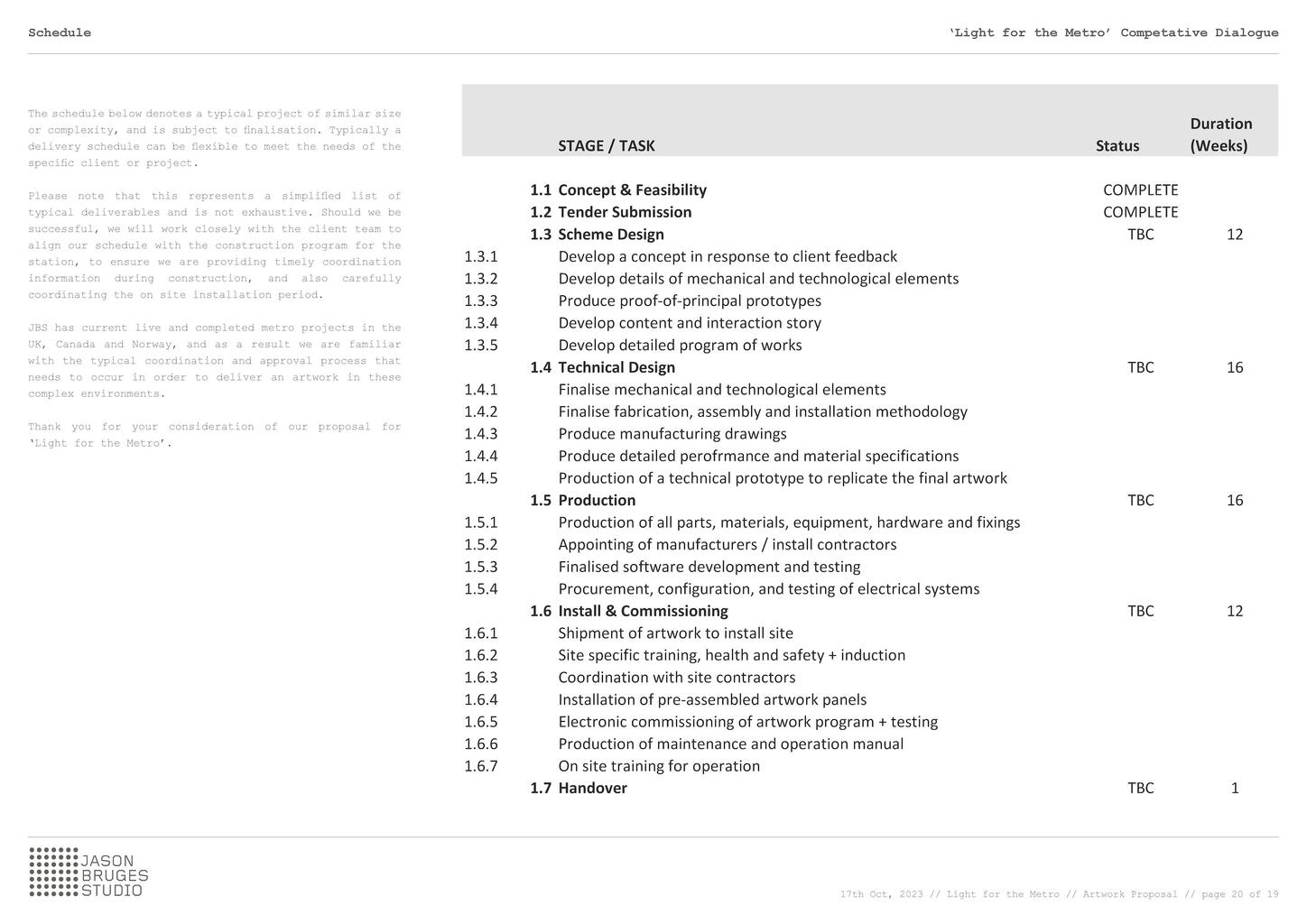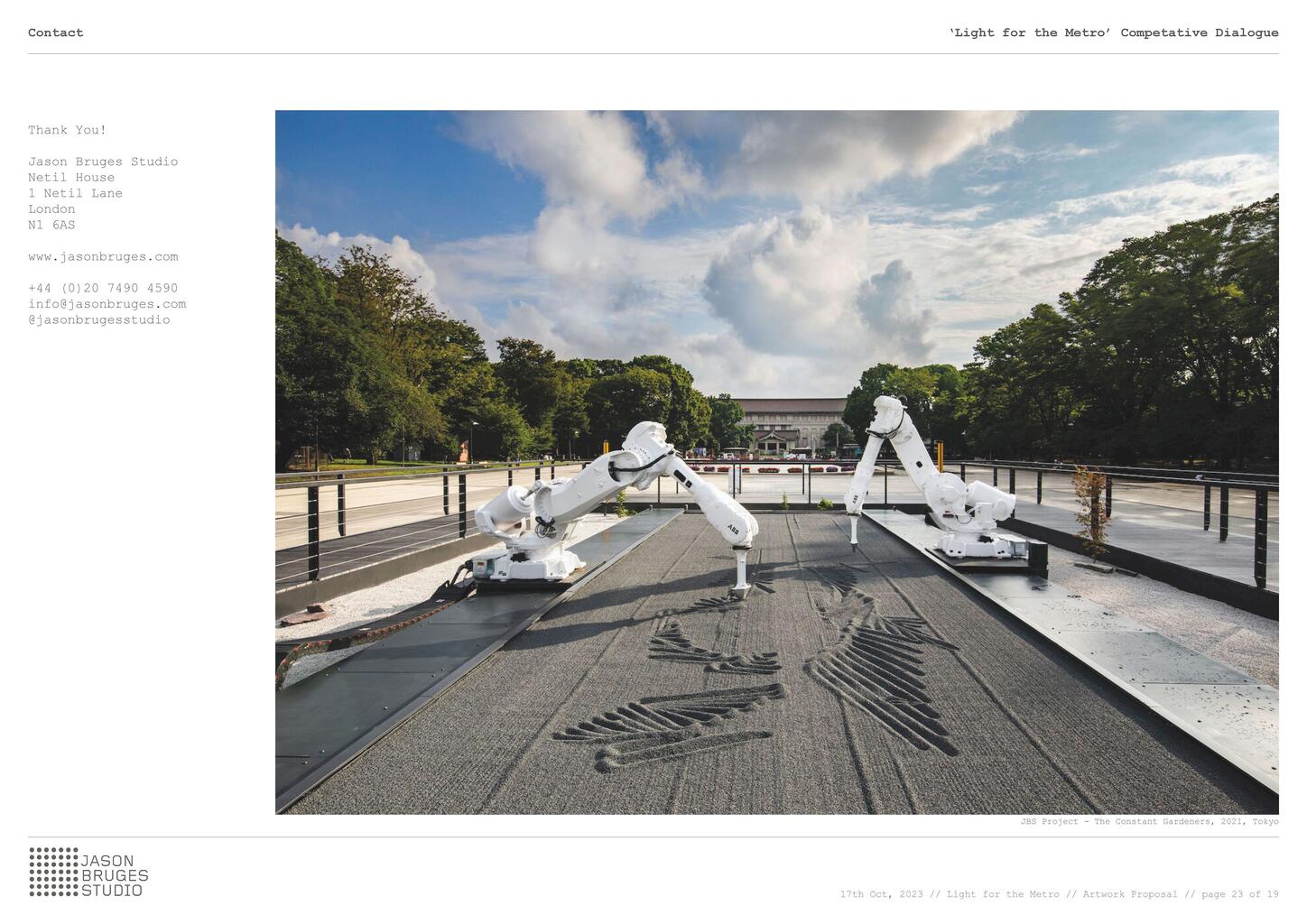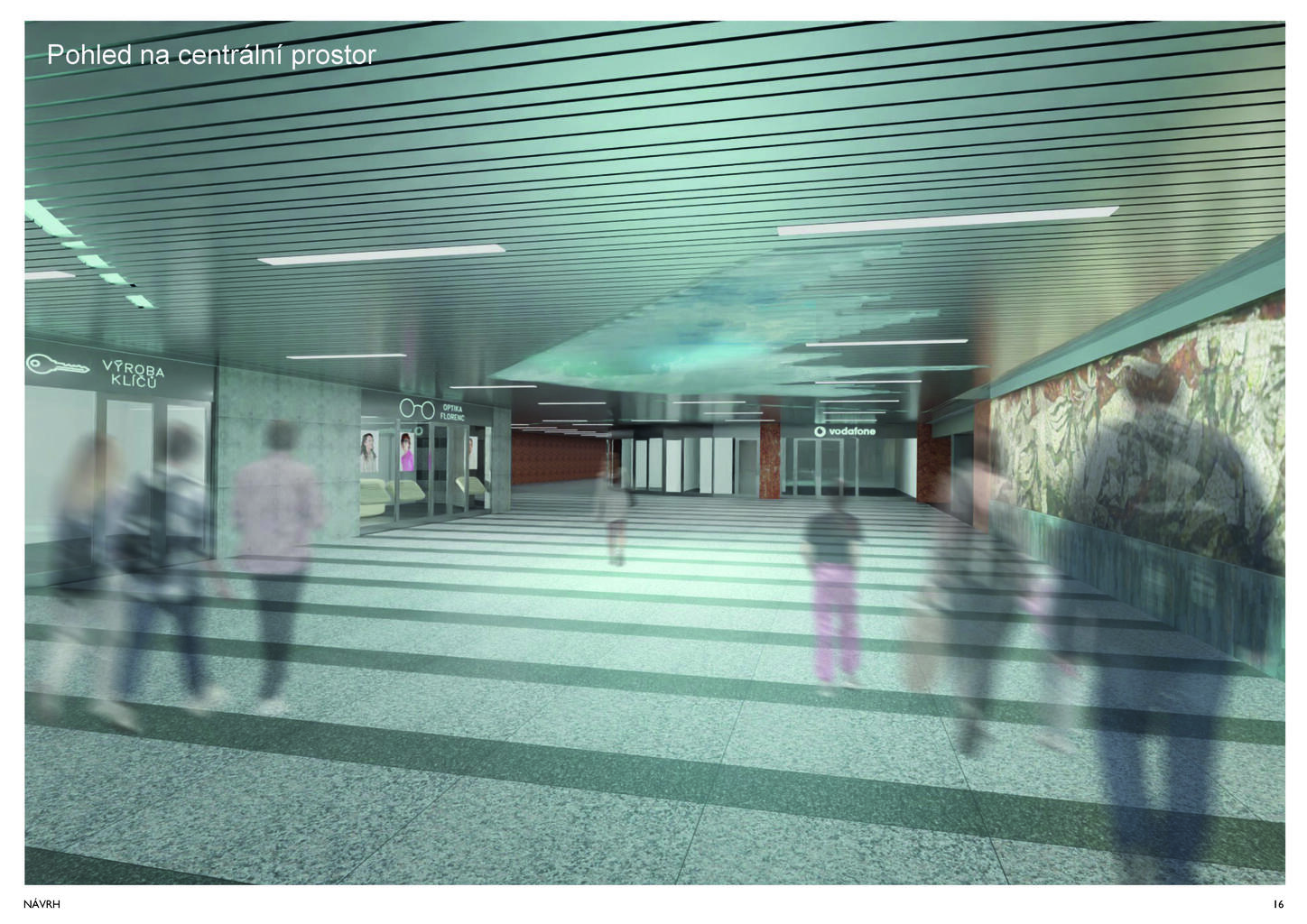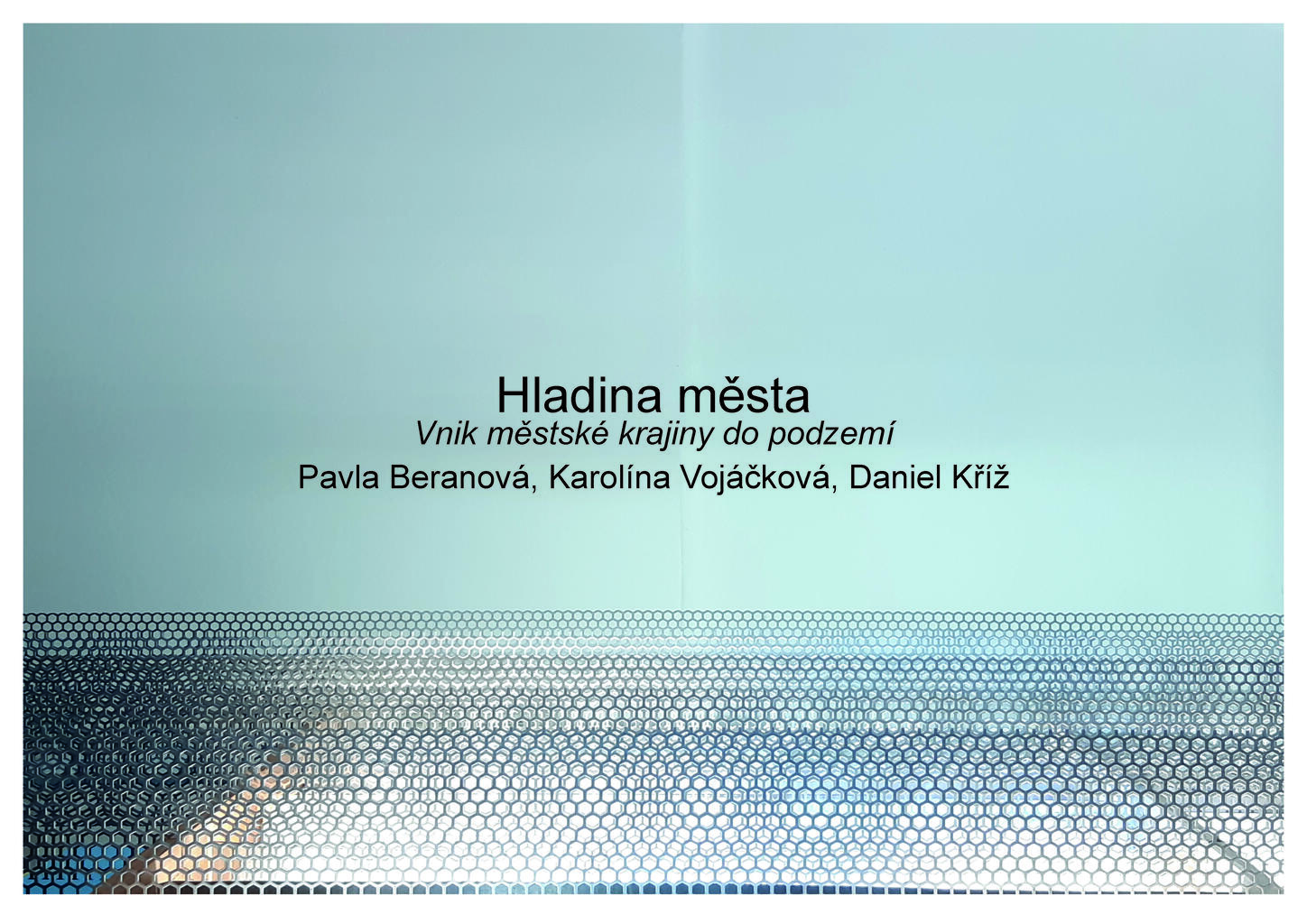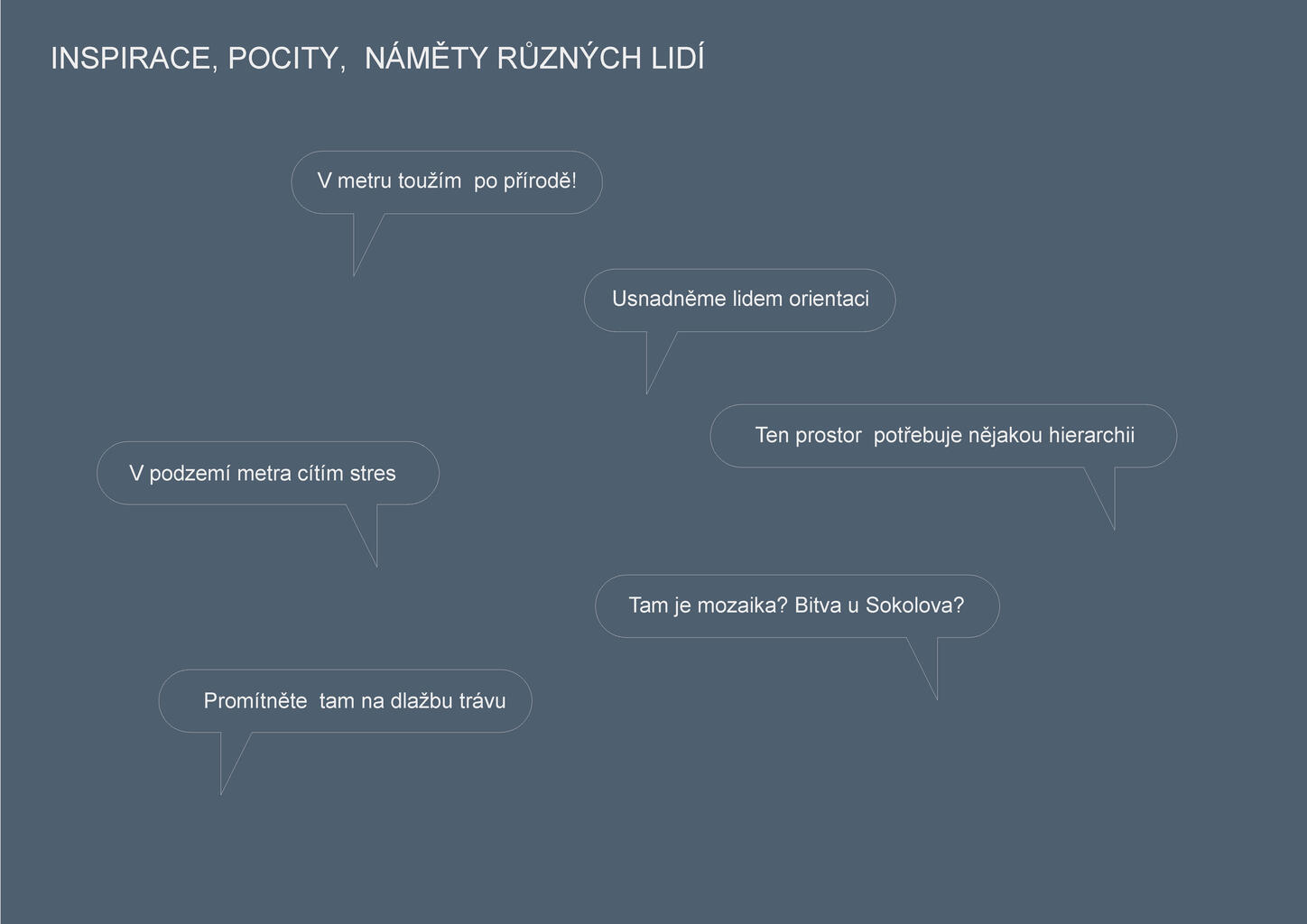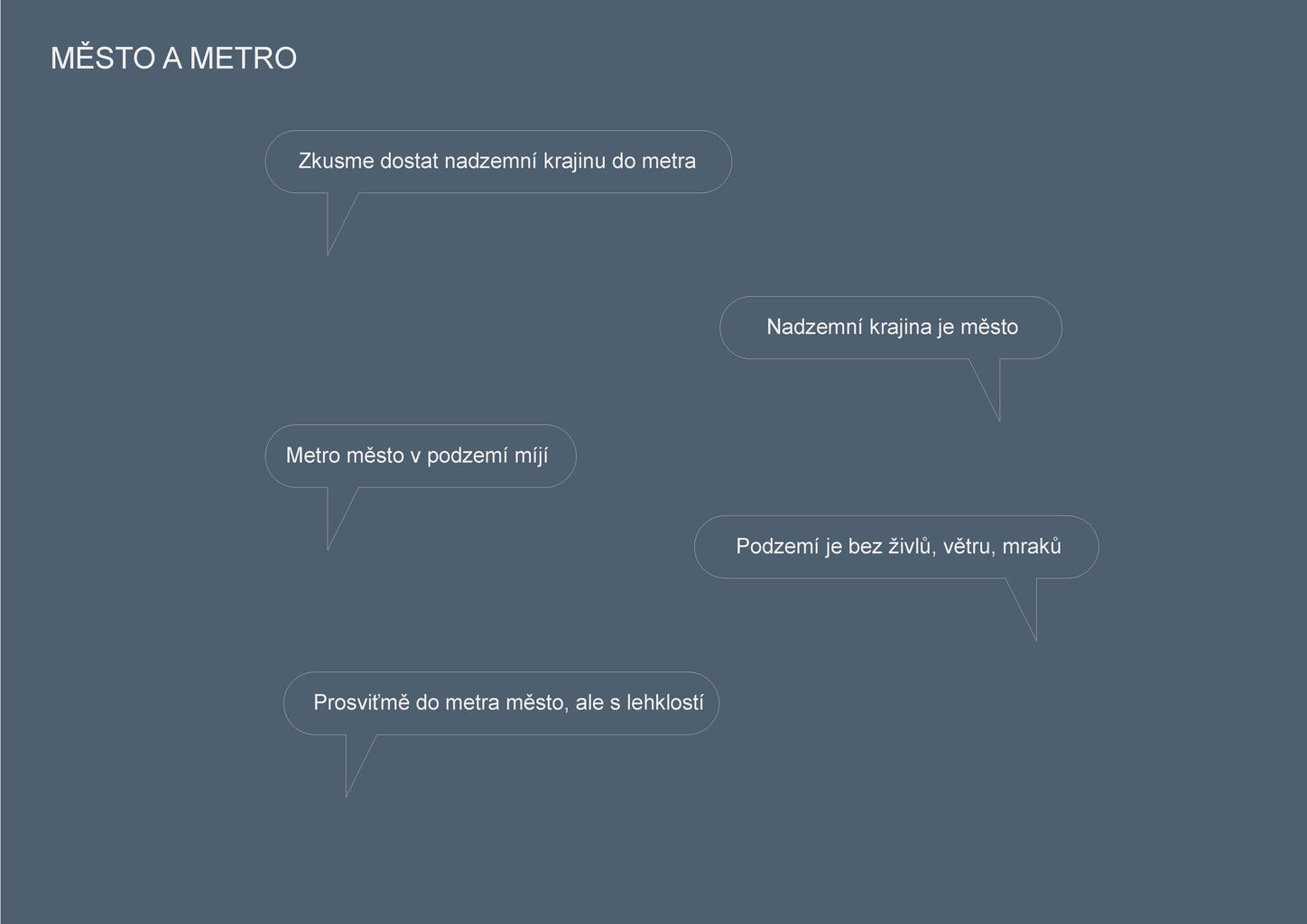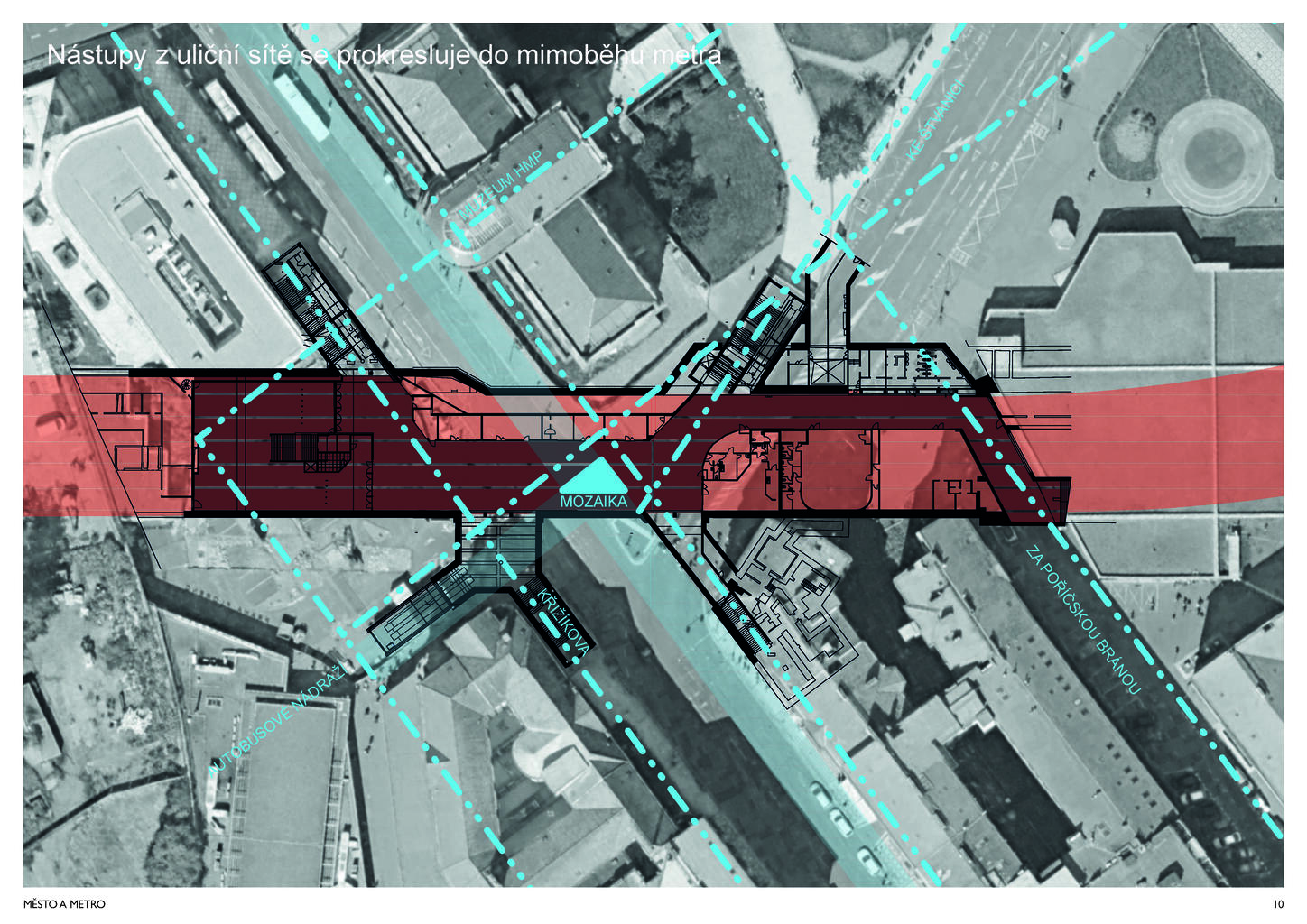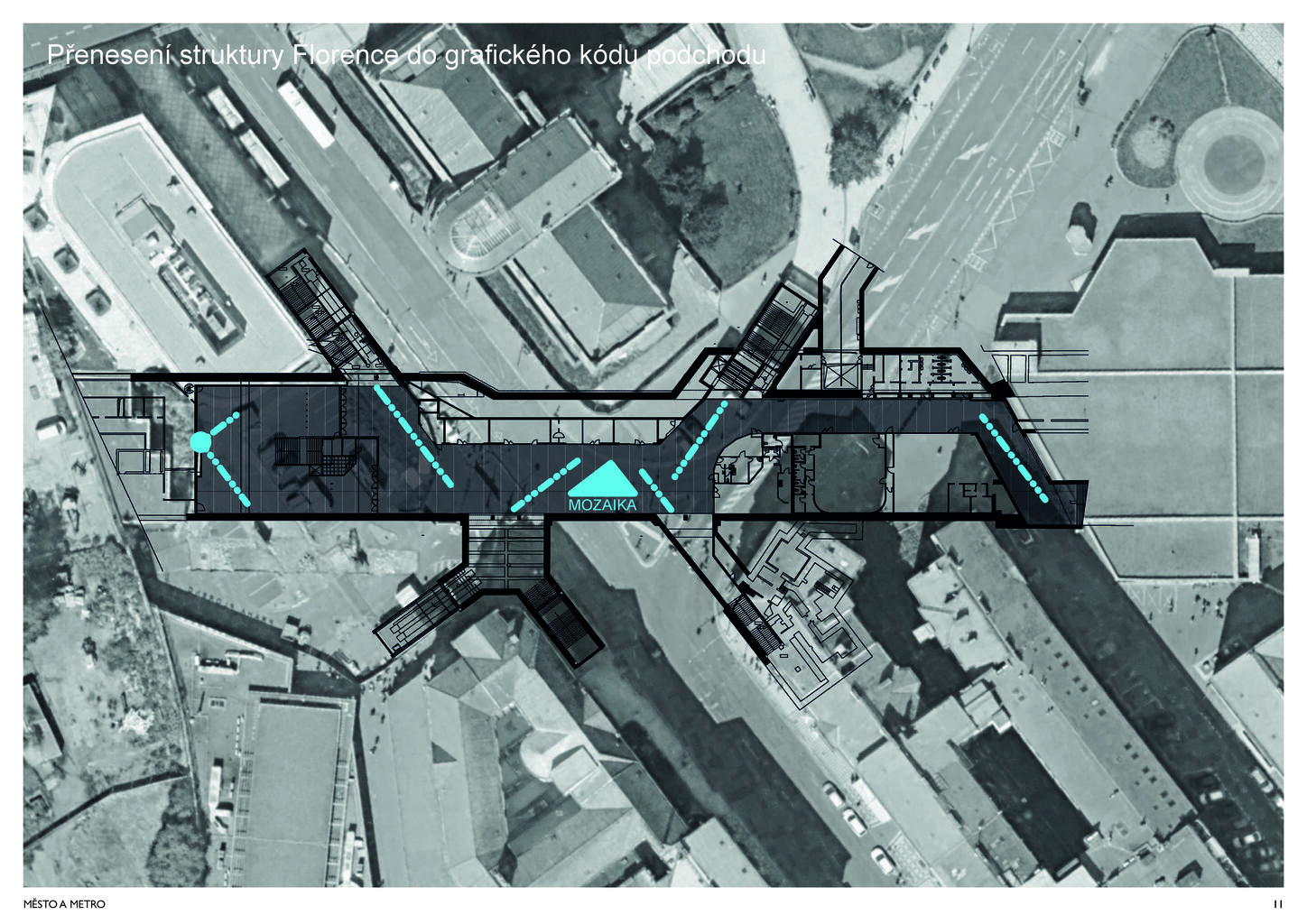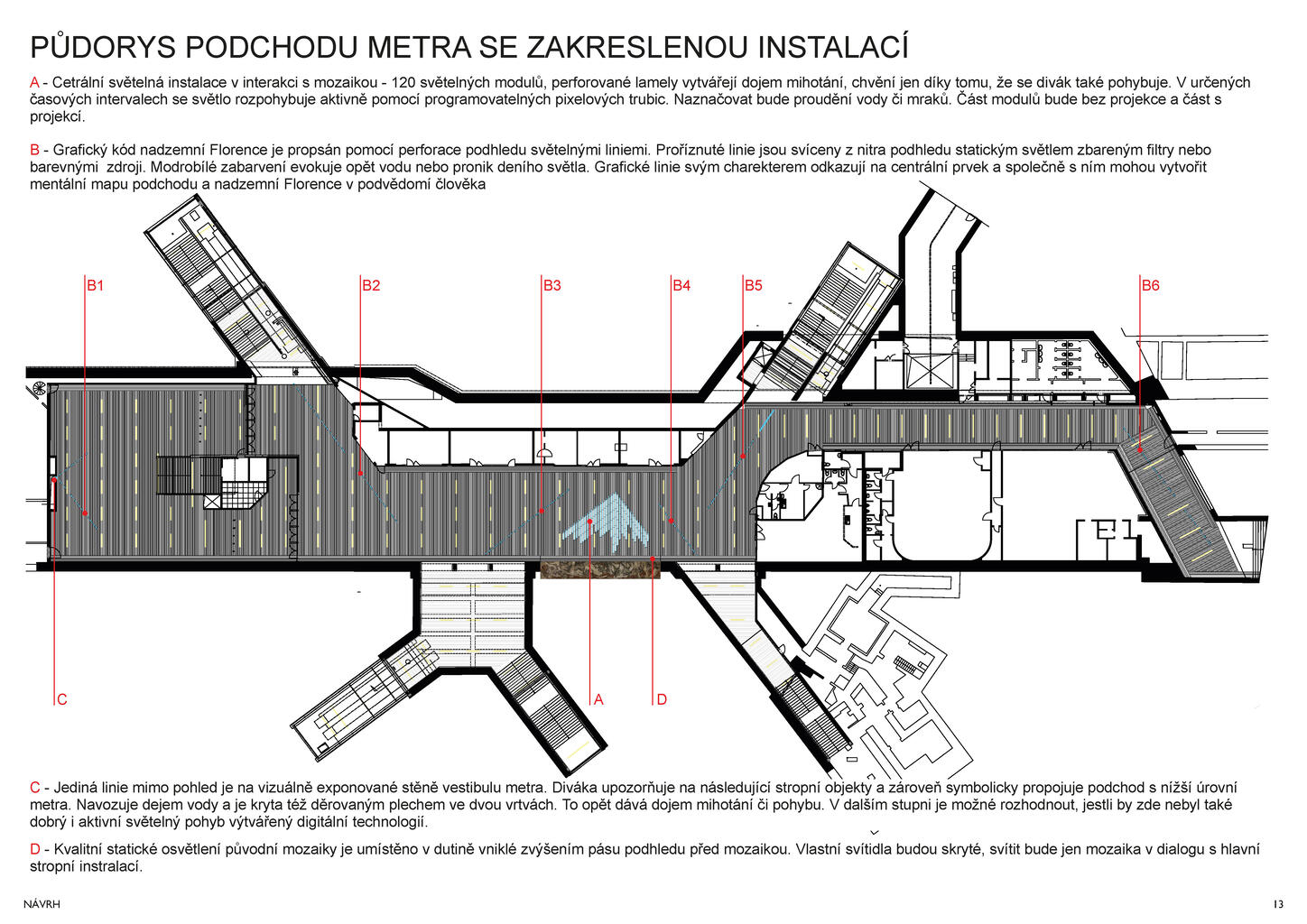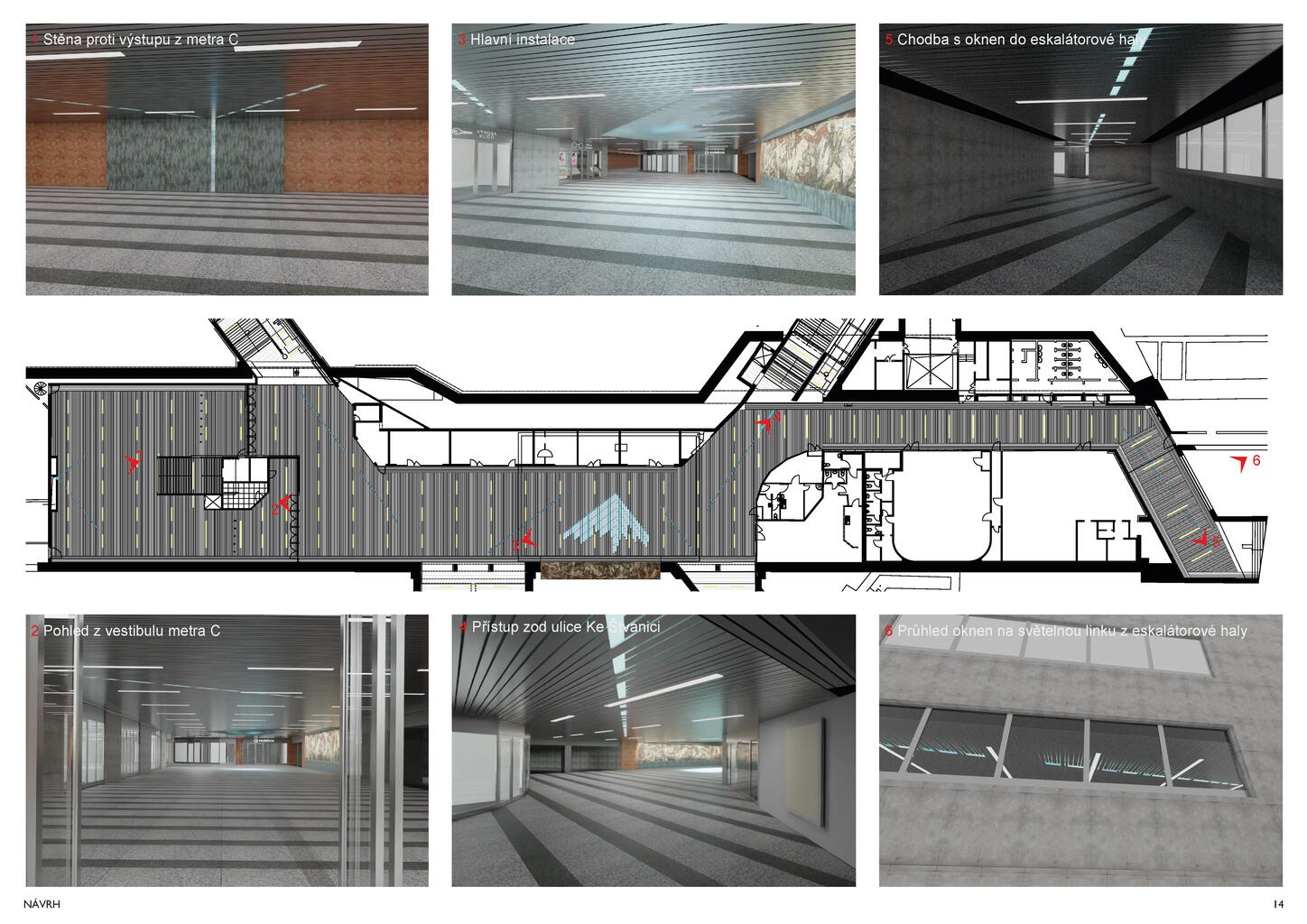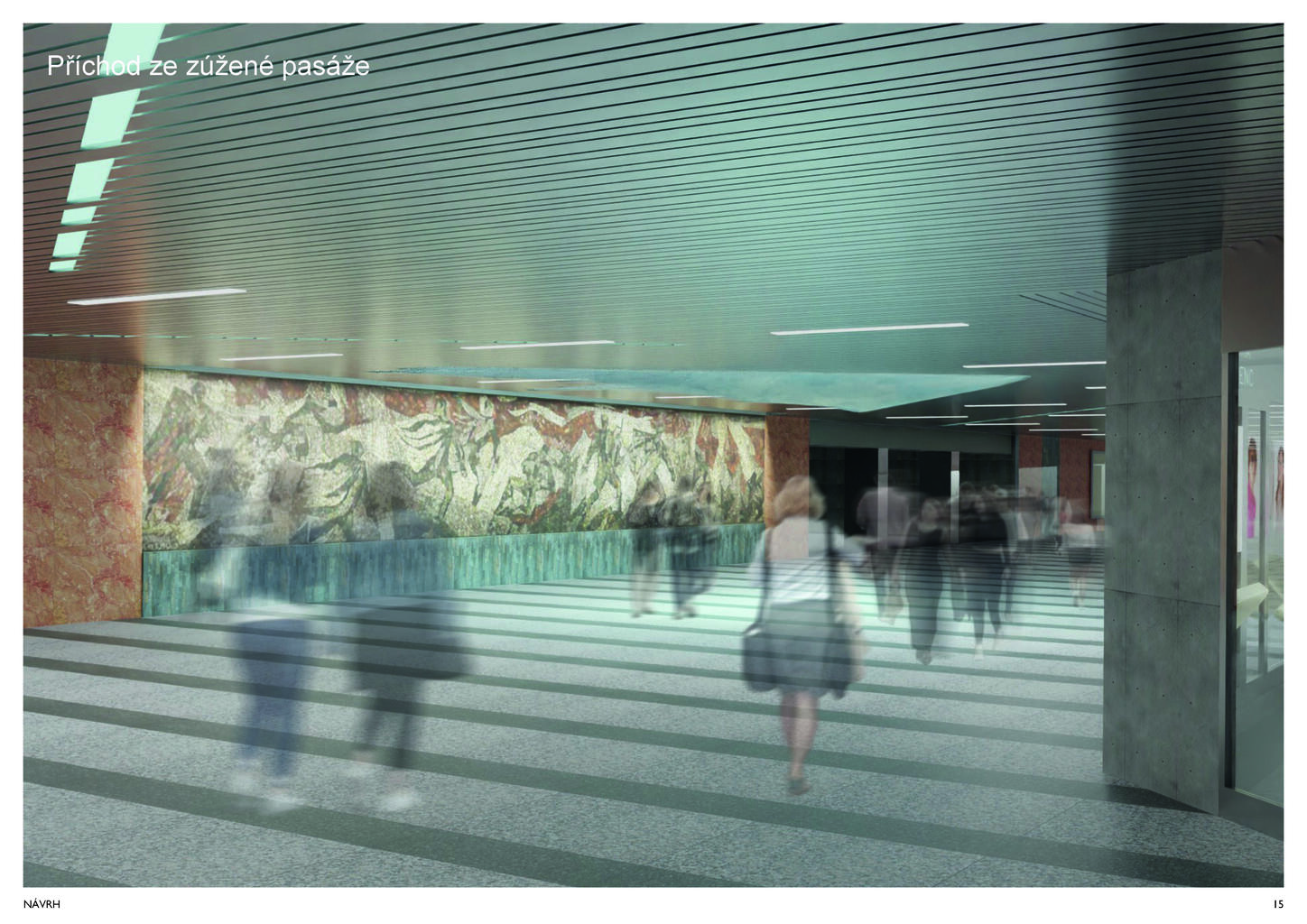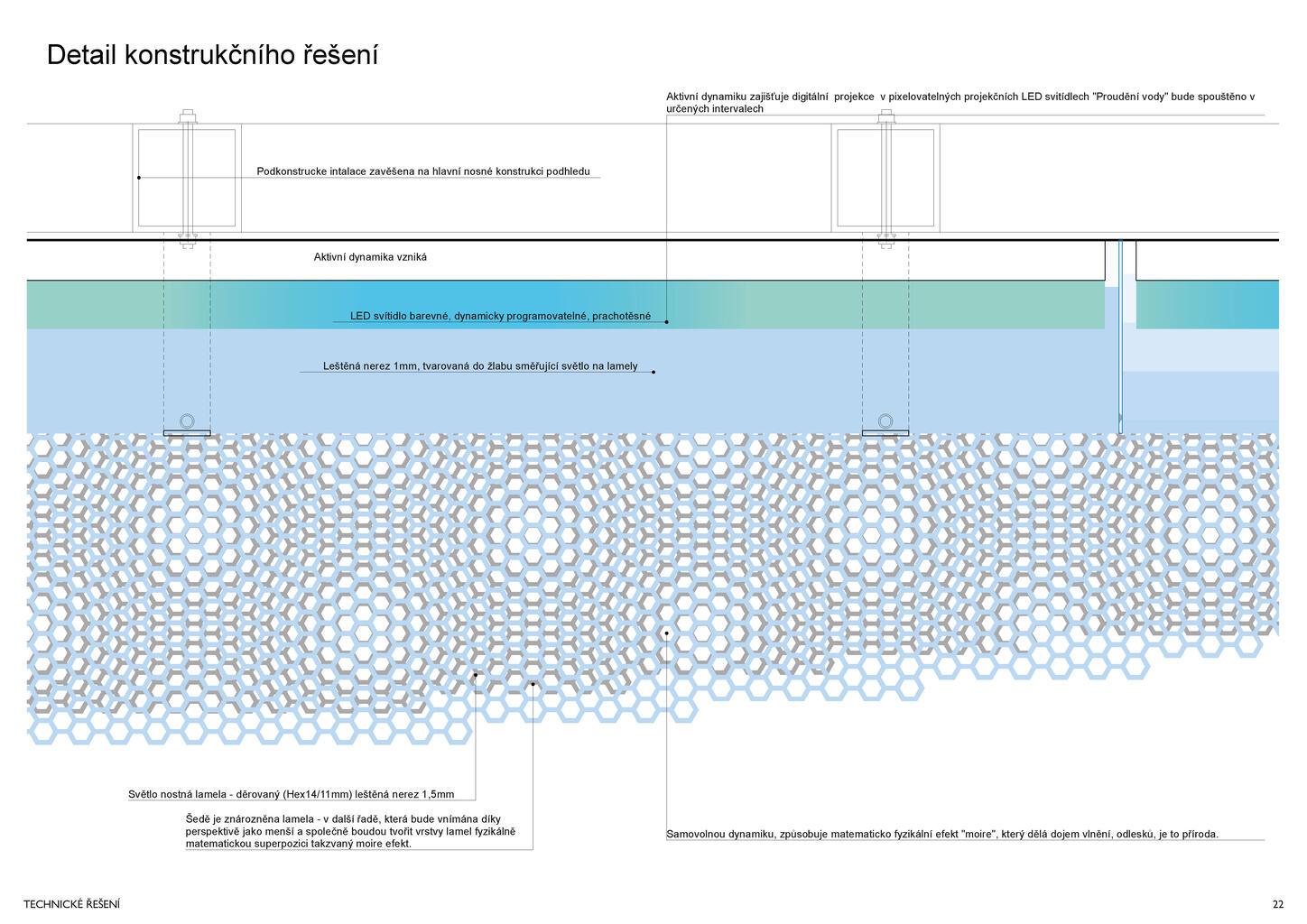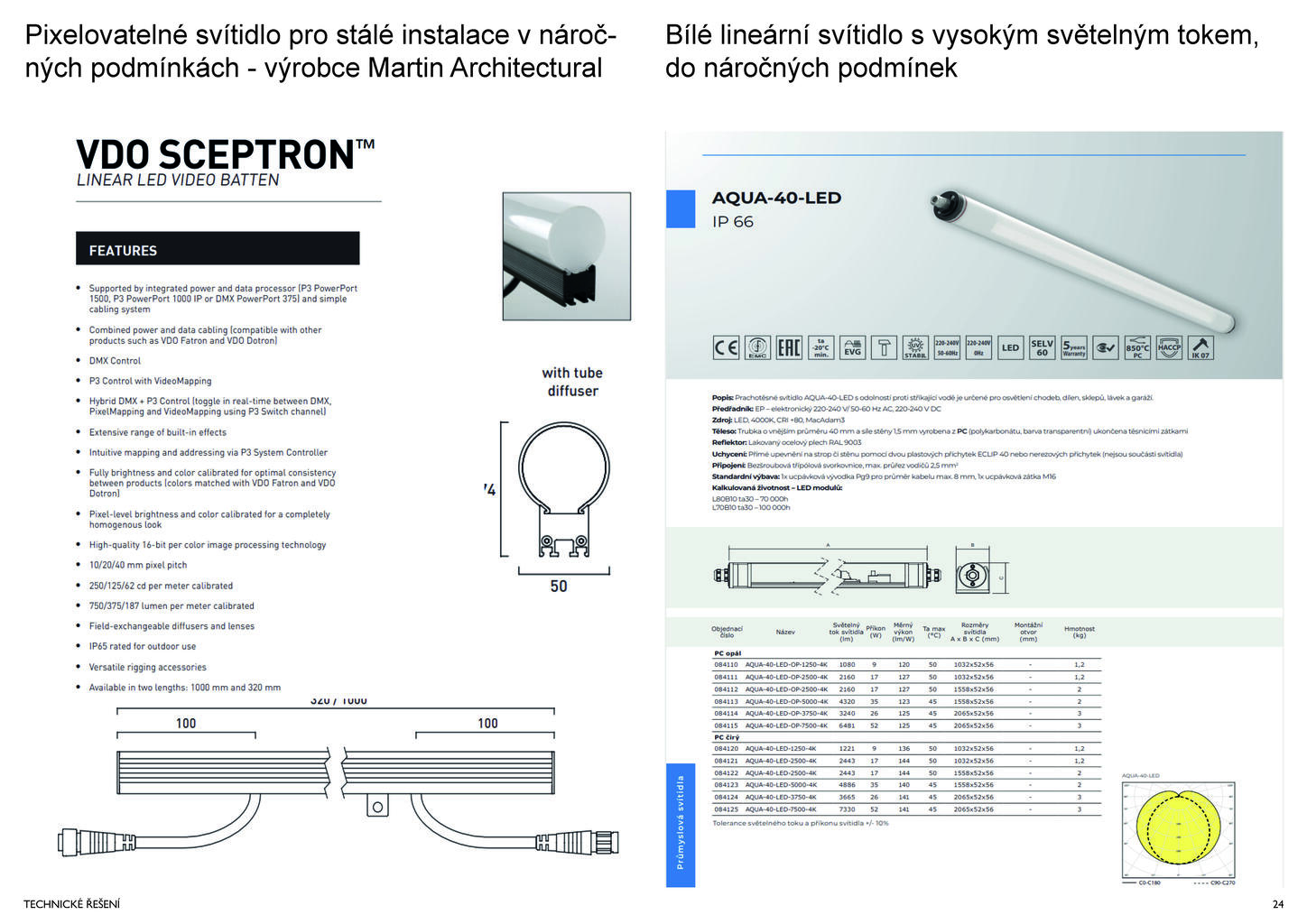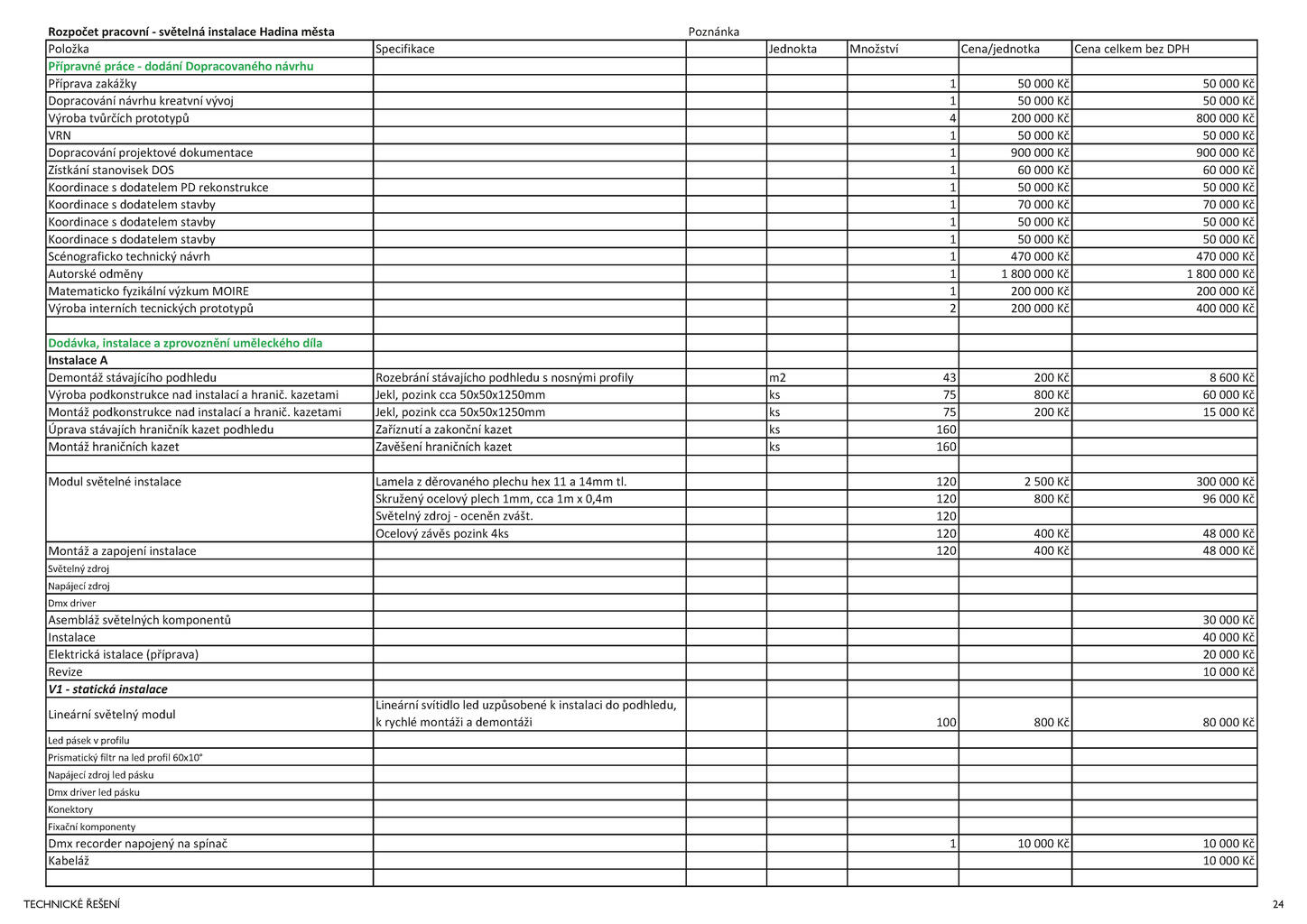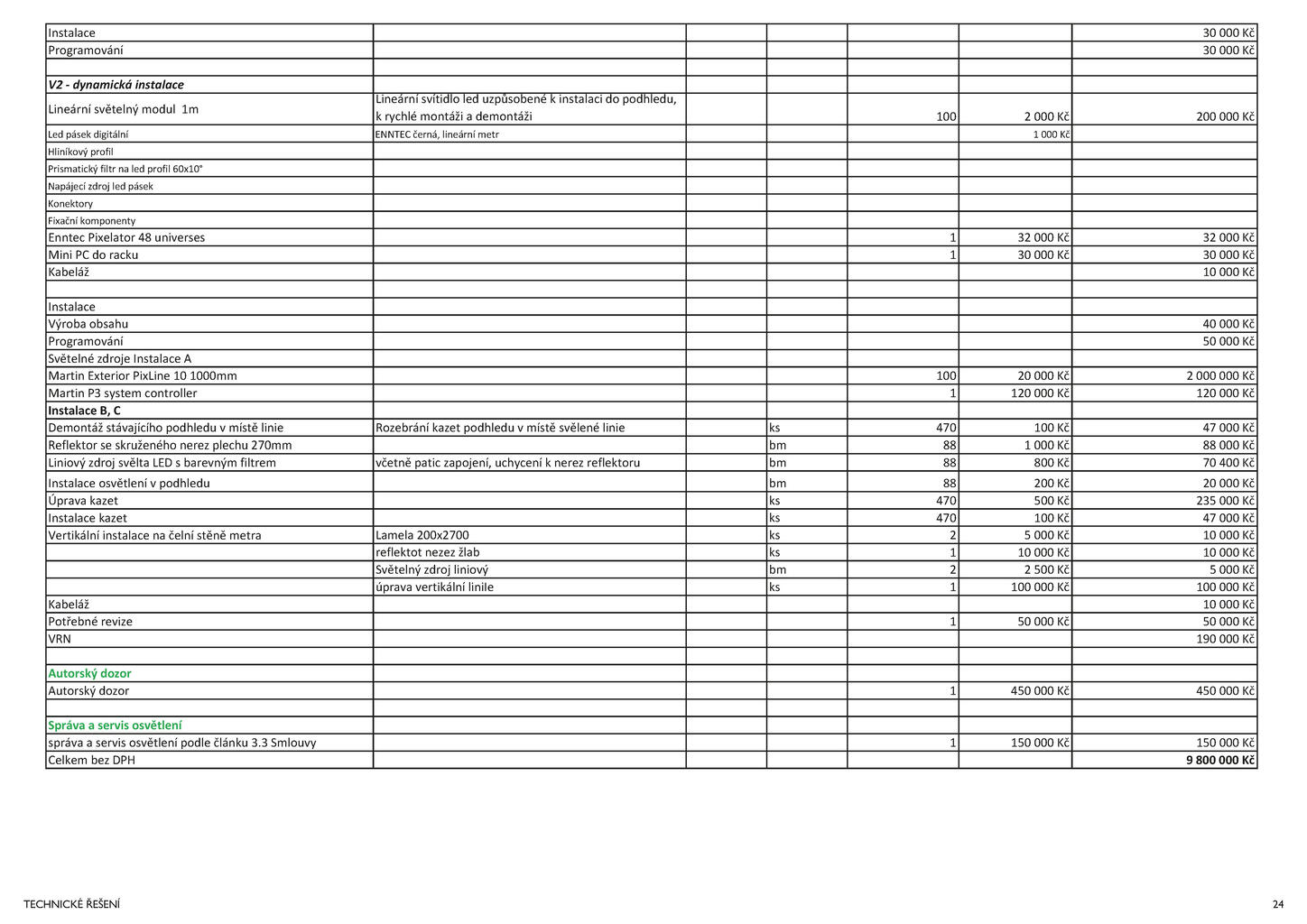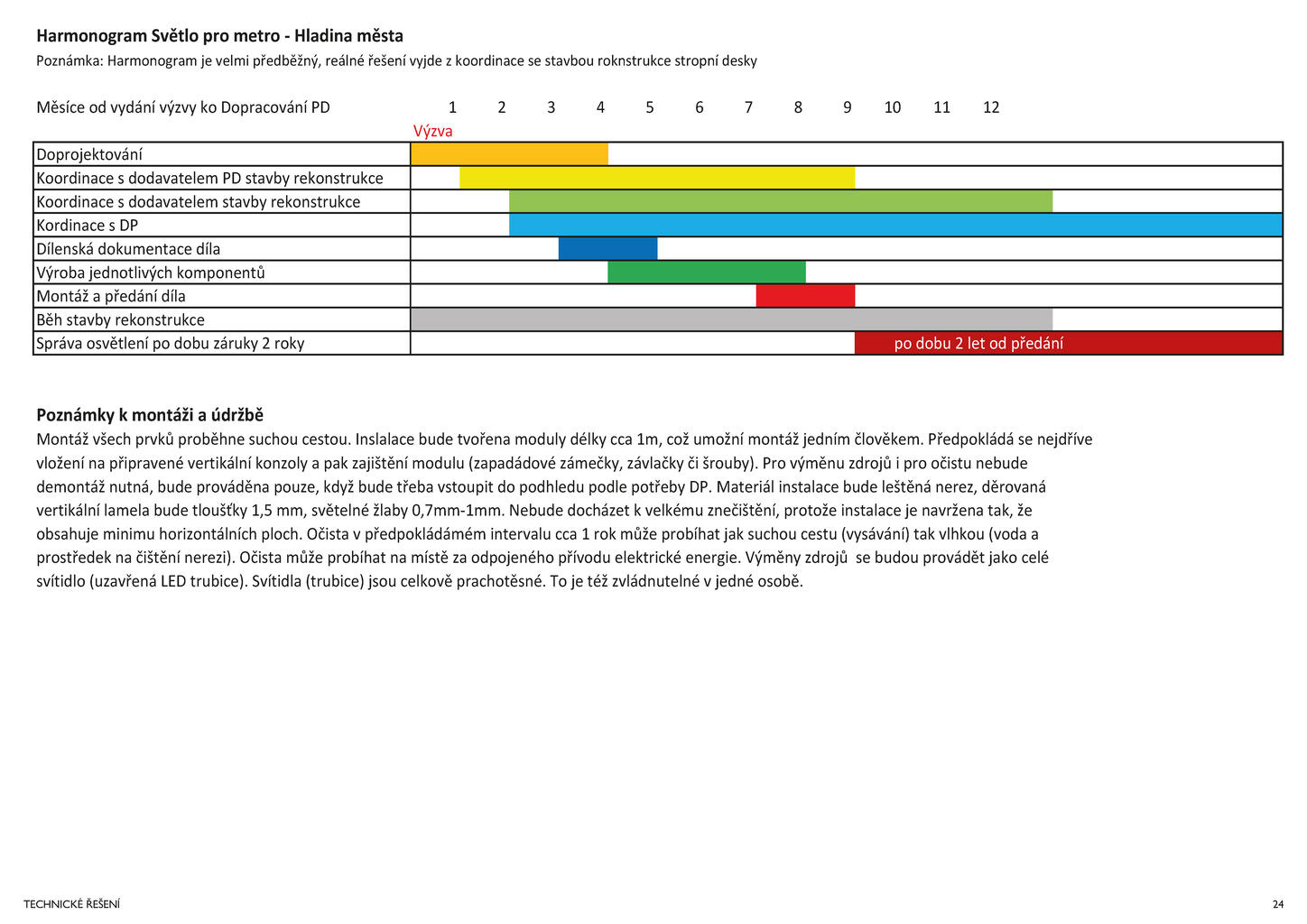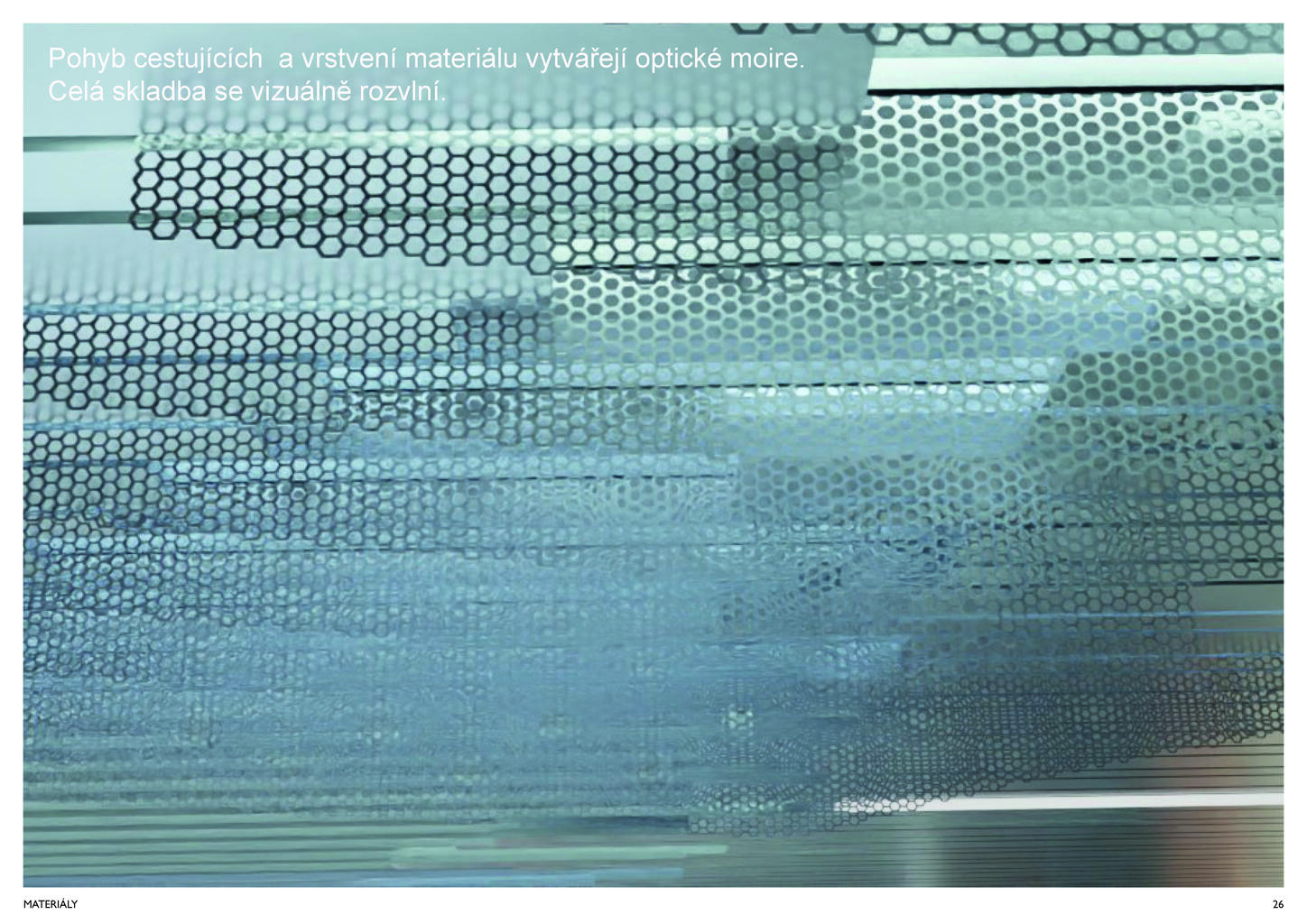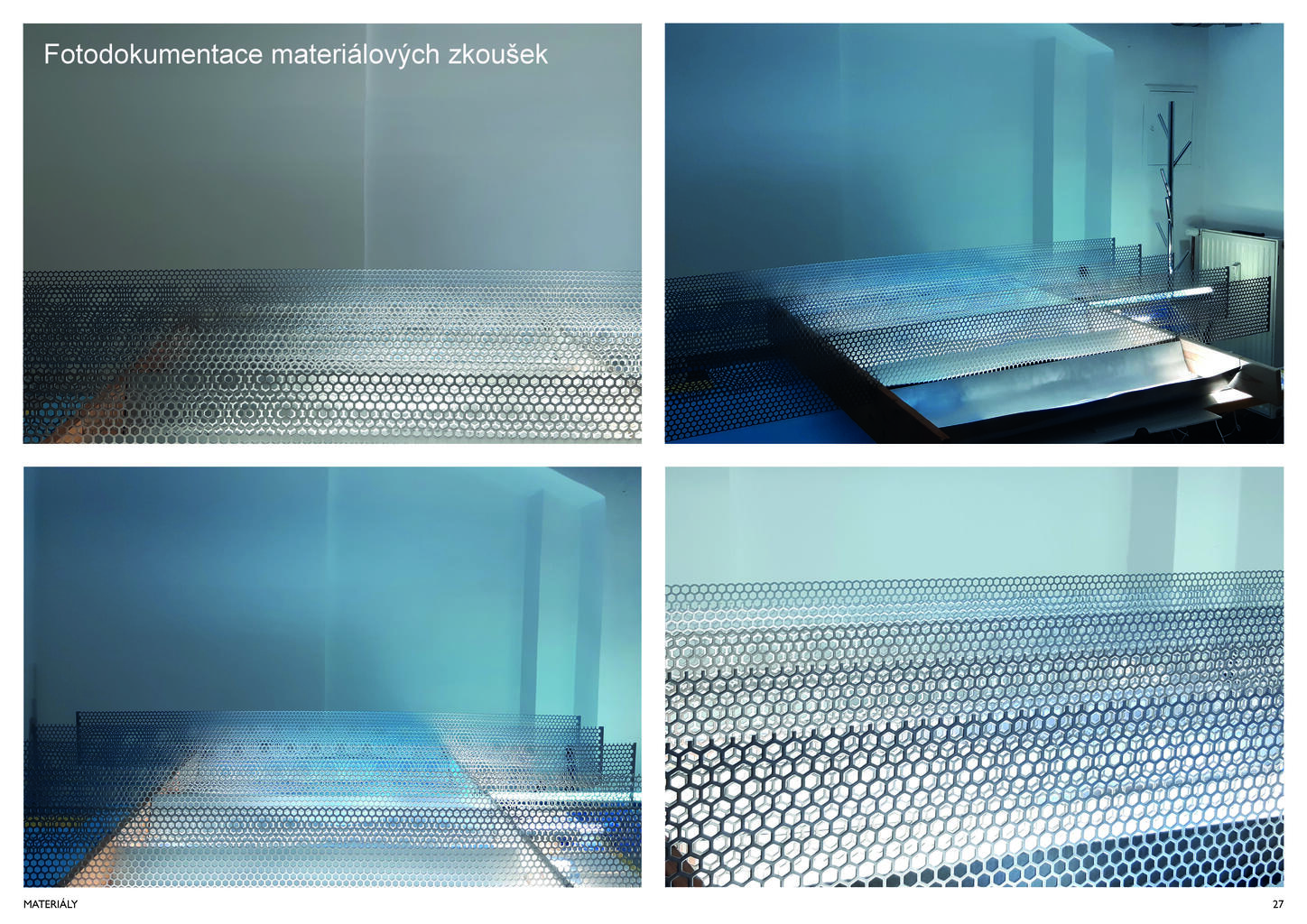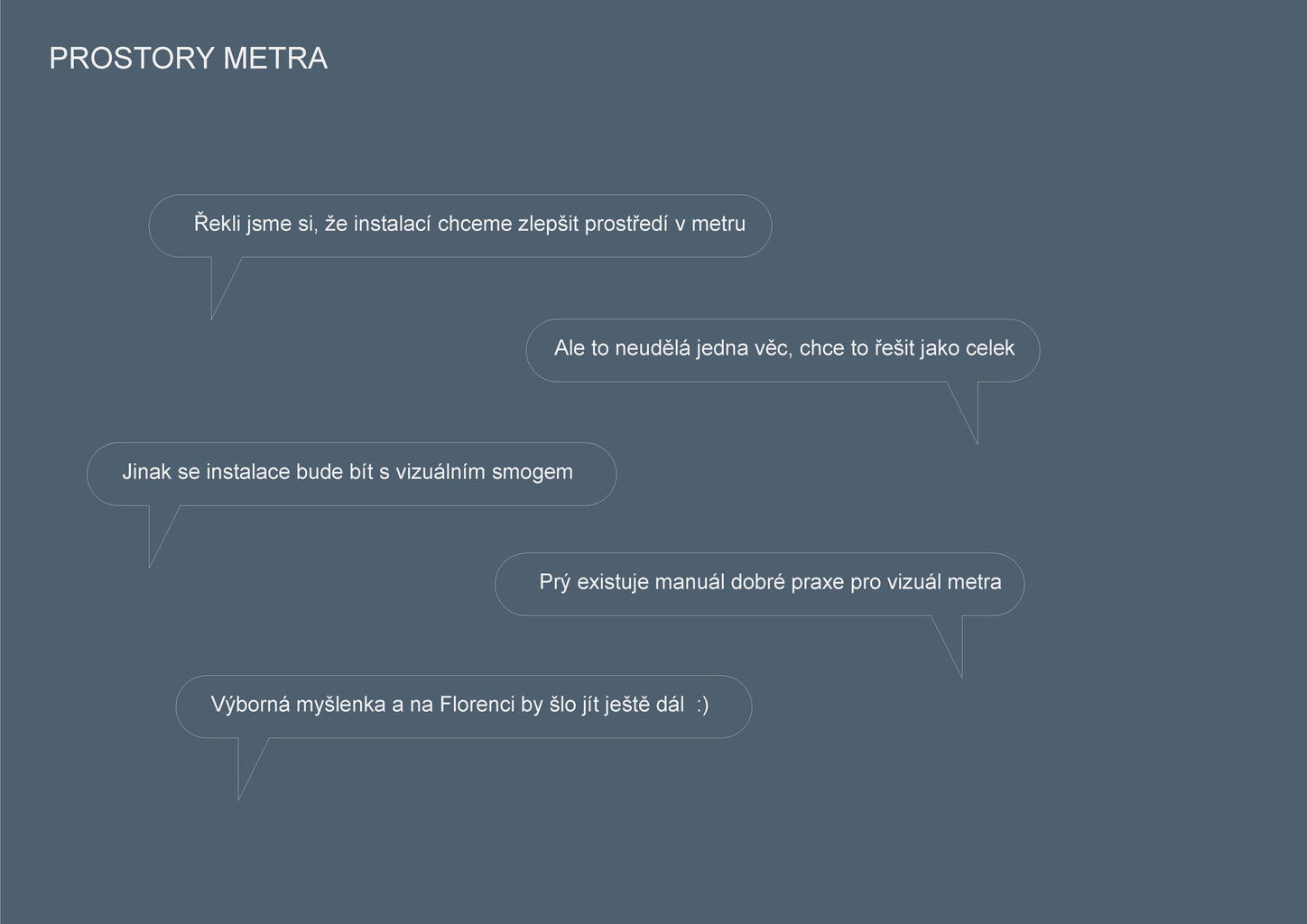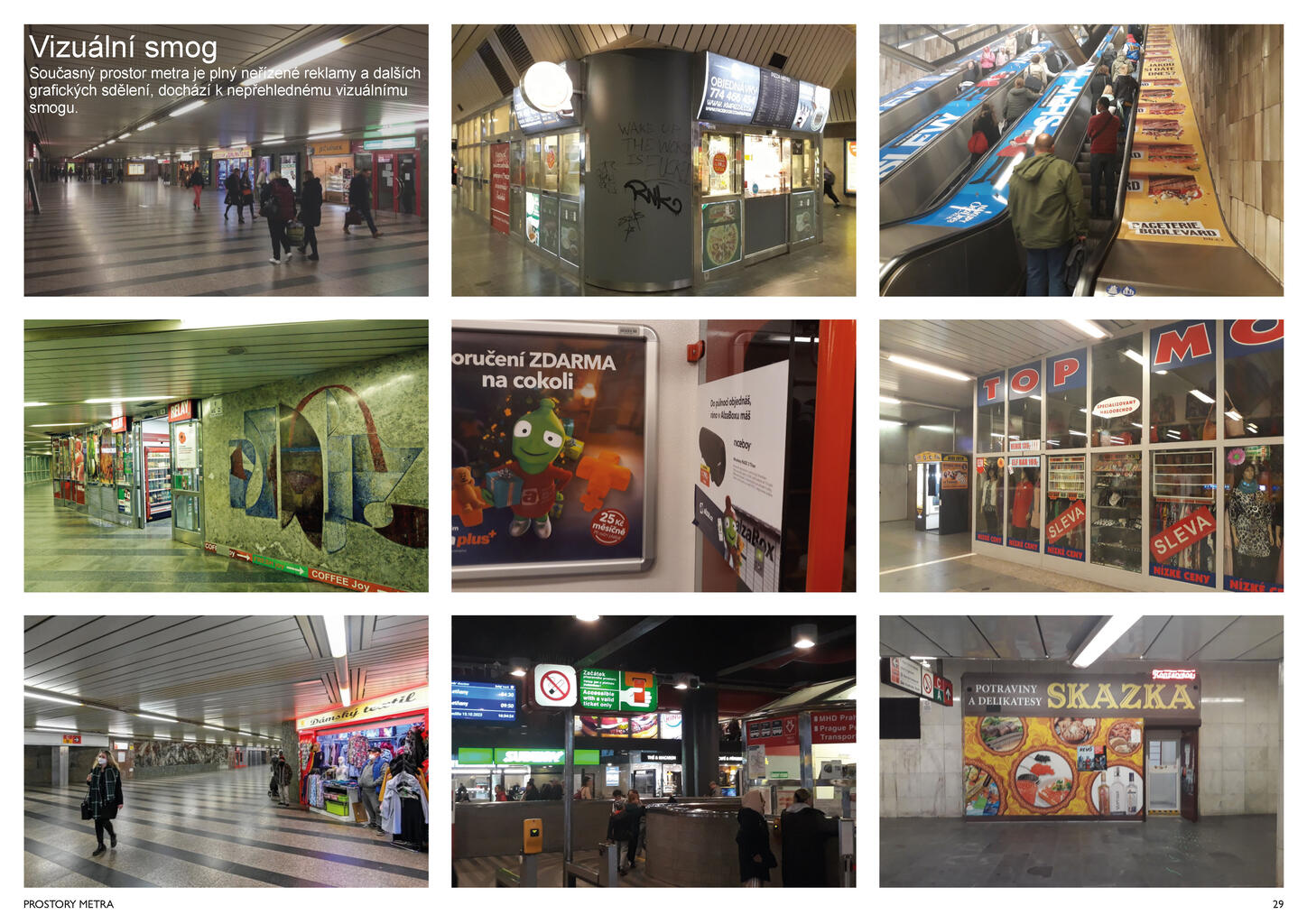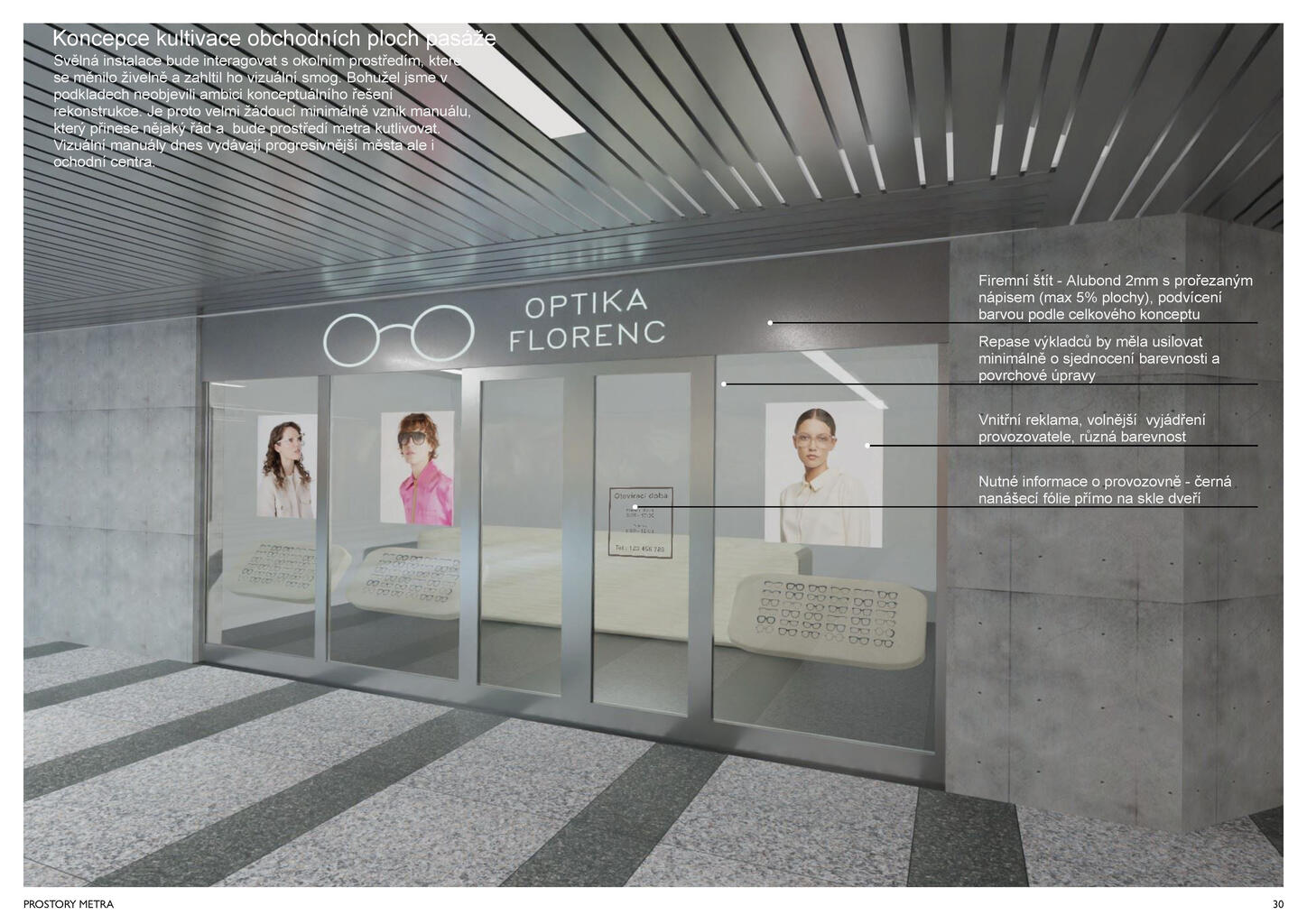- Author Jan Poš
- Prague
In the spirit of exploring the connection between human civilization and technology, the installation in Prague's Florence creates a visual metaphor of urban transport as the nervous system of the city. The city, a living organism, a hive of human consciousness, processes its nervous system through the tracks of subways, trams, and buses, where its citizens, luminous neurons, transmit their stories and thoughts along luminously animated synaptic connections to the shadows of mystery in its corridors and arteries. These pathways move humanity across the urban landscape, creating a complex network of interconnected pathways and trails. Florenc, the backbone of Prague, the crossroads of destinies where people's stories collide and public transport lines cross, the place where one transfers between stations and life stages, forms the largest synapse in this organism. The synapse - functioning on the basis of electrical discharges and their transmissions - thus synchronously completes the entire poetics of a light work that could not function without electricity.
The committee evaluates very positively the legible symbolism of the artistic intention based on the interpretation of urban connectivity, whether interpersonal or infrastructural. The sophistication of the installation's design and the effort to simplify the realisation as much as possible, as well as the significant shift from first concept to final submission, show a strong team that has managed to combine both artistic and pragmatic approaches to the brief. In the elements of the work, the commission perceives a certain recycling of the artist's previous work. However, their configuration and appearance in the context of a transport structure and a space with many thousands of commuters passing through will lead to a unique impact. The proposed technical parameters of the solution are plausibly described and the work is well feasible and maintainable even in the demanding environment of the public part of the metro complex. The anchoring of the supporting structure is to be refined, but this should not represent a change in the way the work looks nor a major cost adjustment. The recommendation of the committee - to examine the appropriate colour and intensity of the lights - is anticipated by the author himself in the description of the control program, where he also declares the possibility of adjusting the speed of changes and the extent of branching. Here, technology and art conceptually function as one coherent whole. In the committee's opinion, the total cost is realistic, both in terms of the ratio between the costs of the design development and its implementation and the amount of the investment itself.
